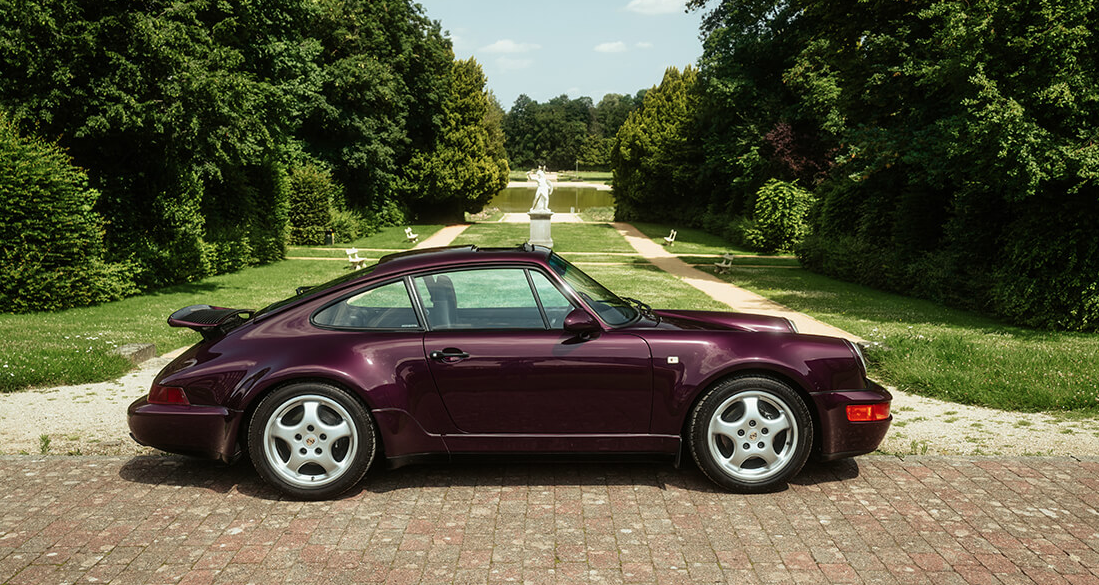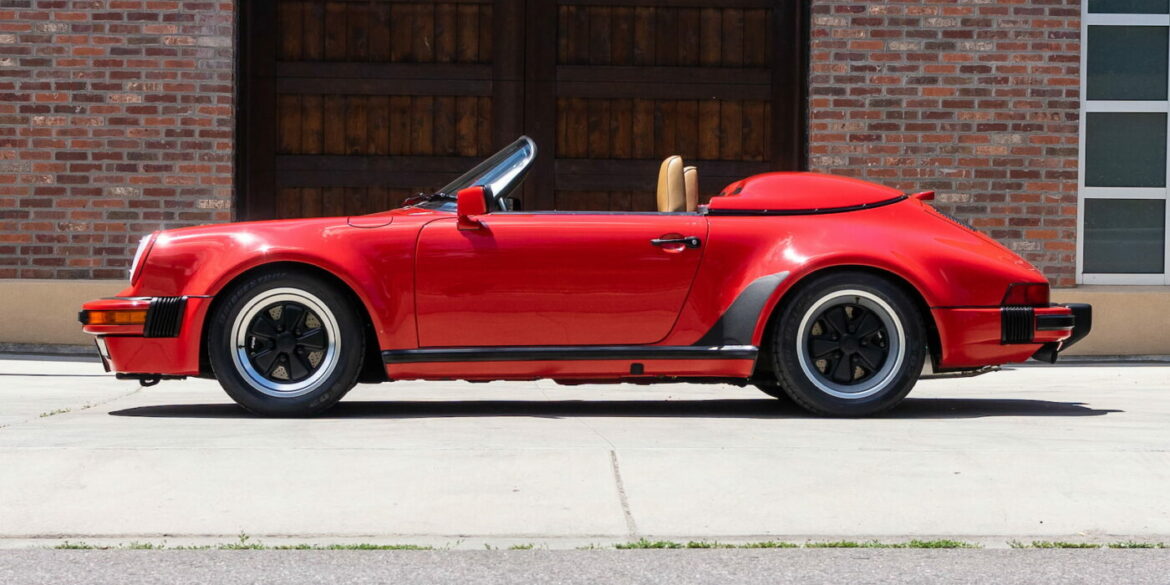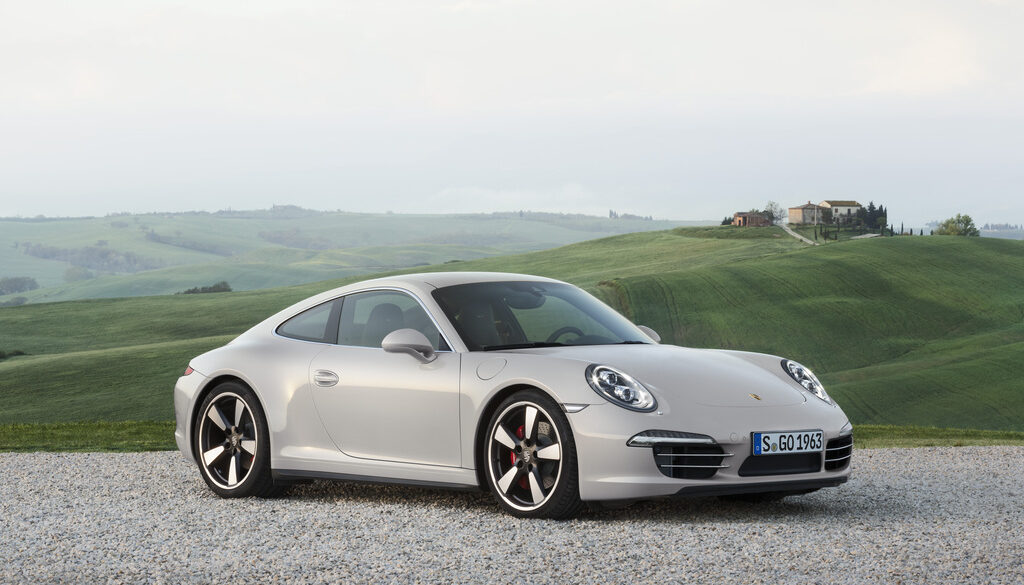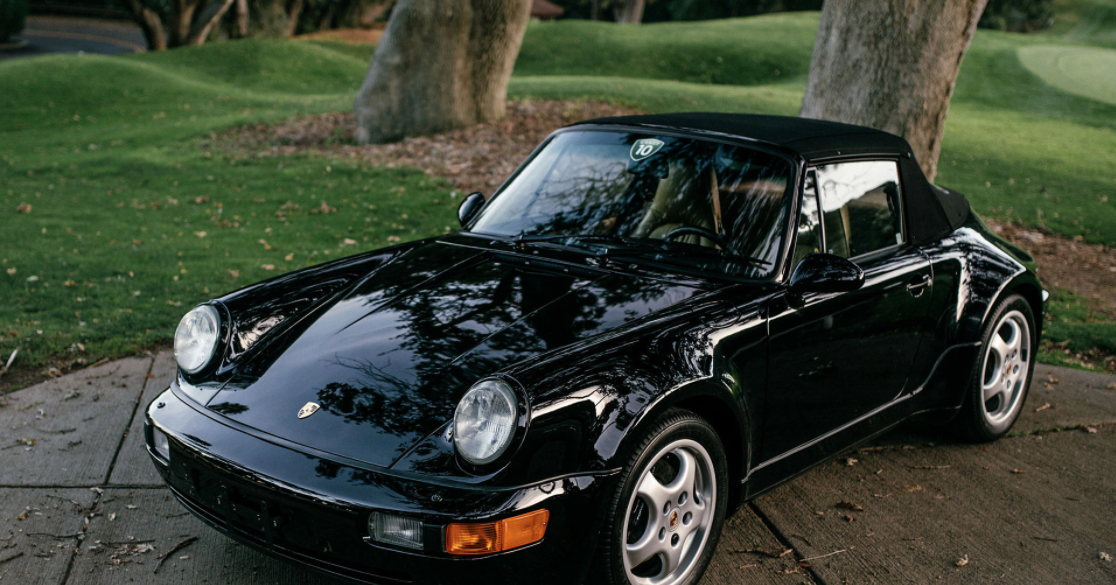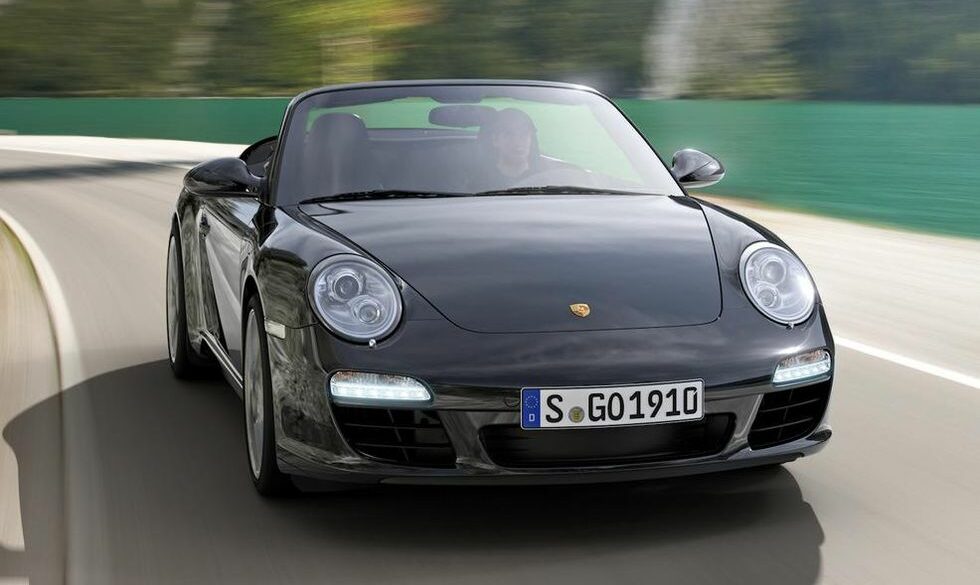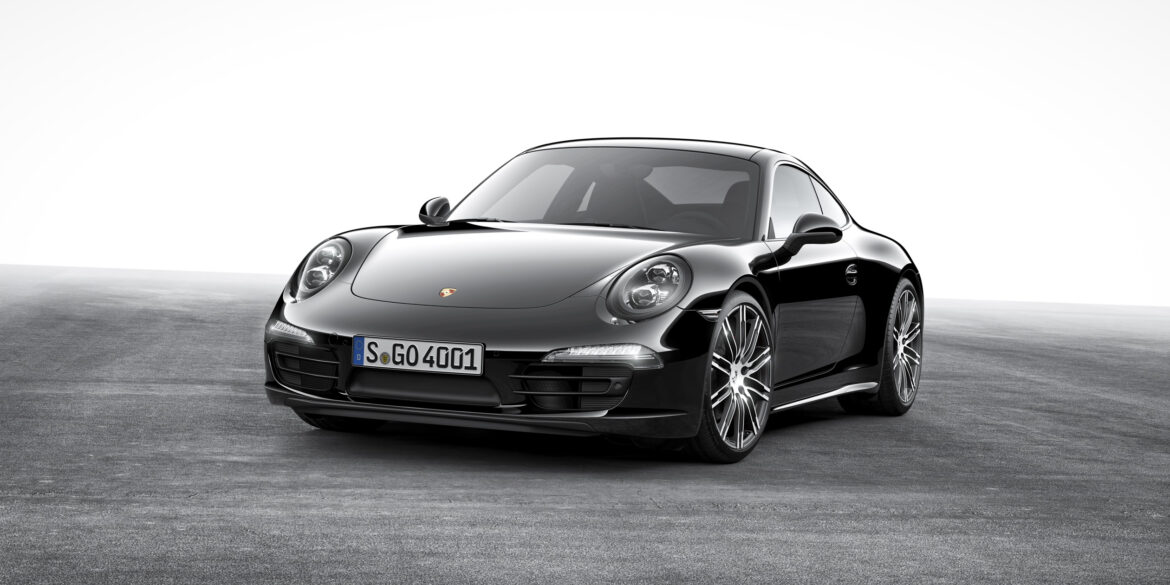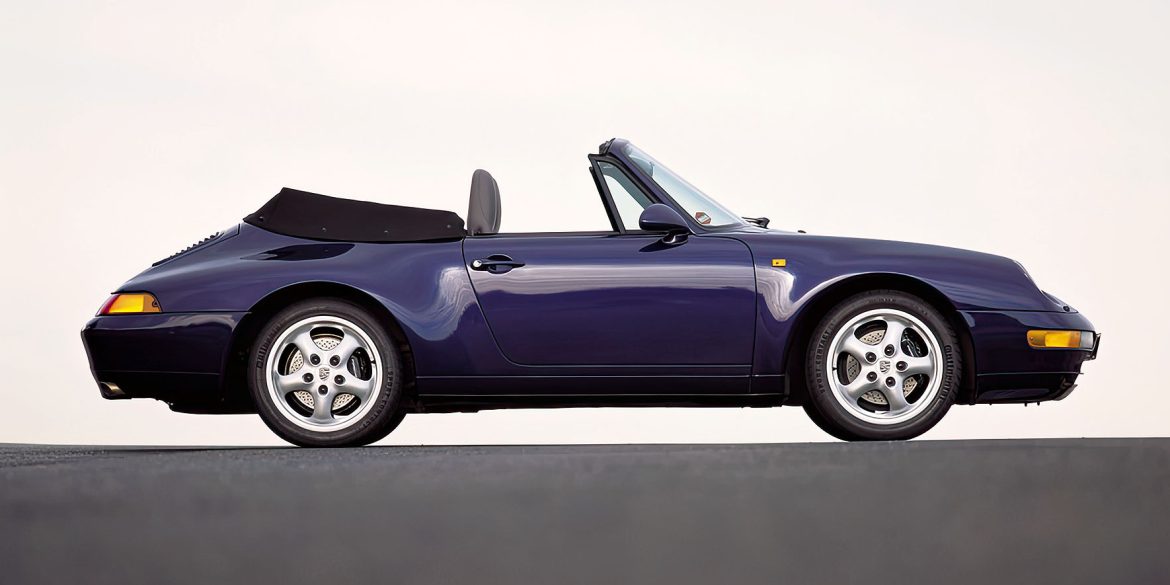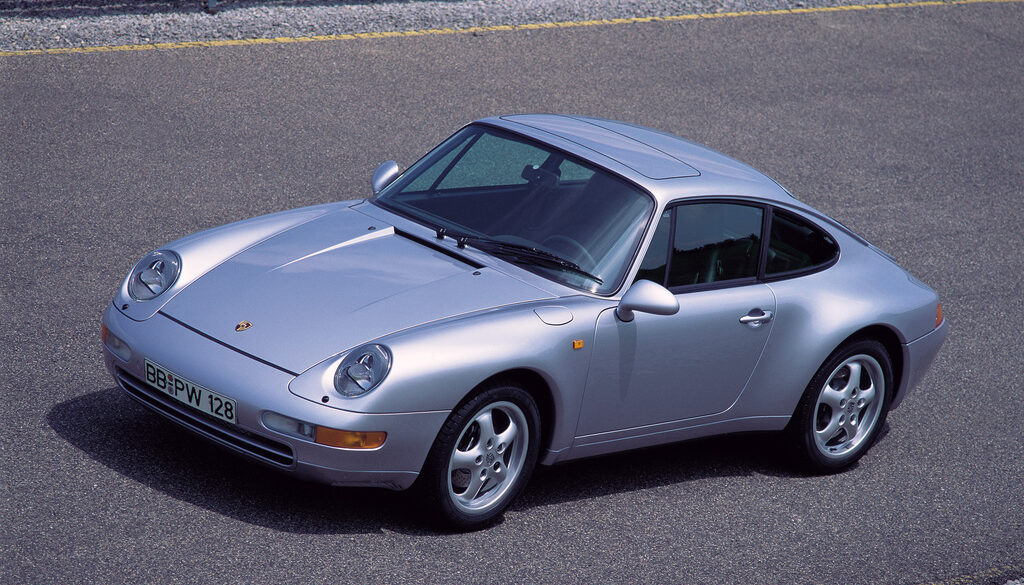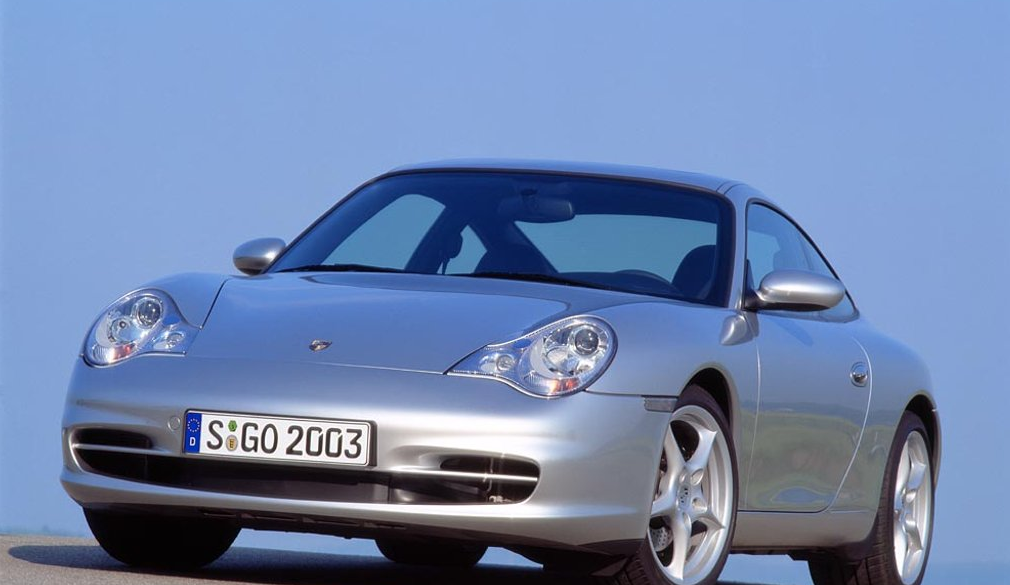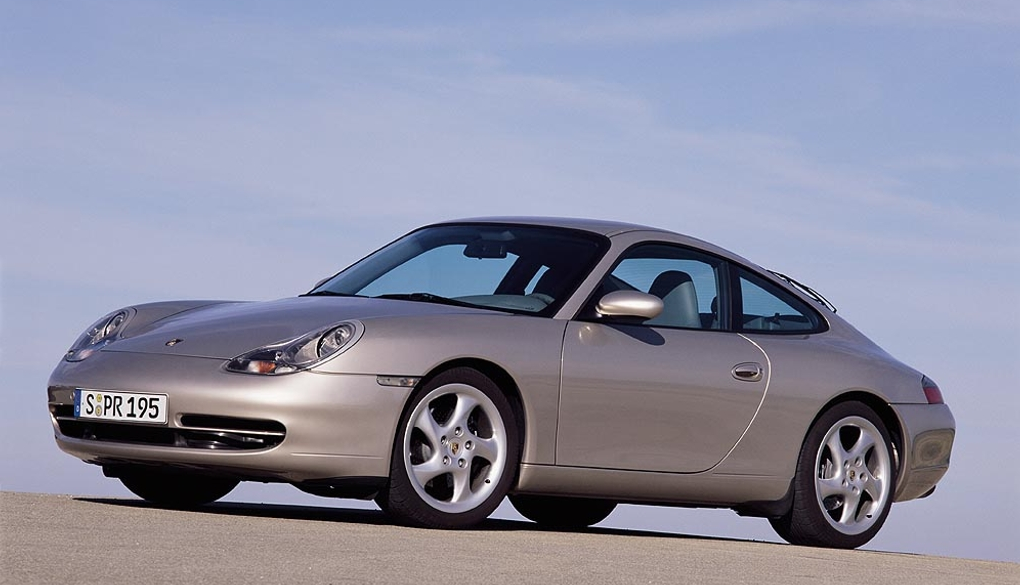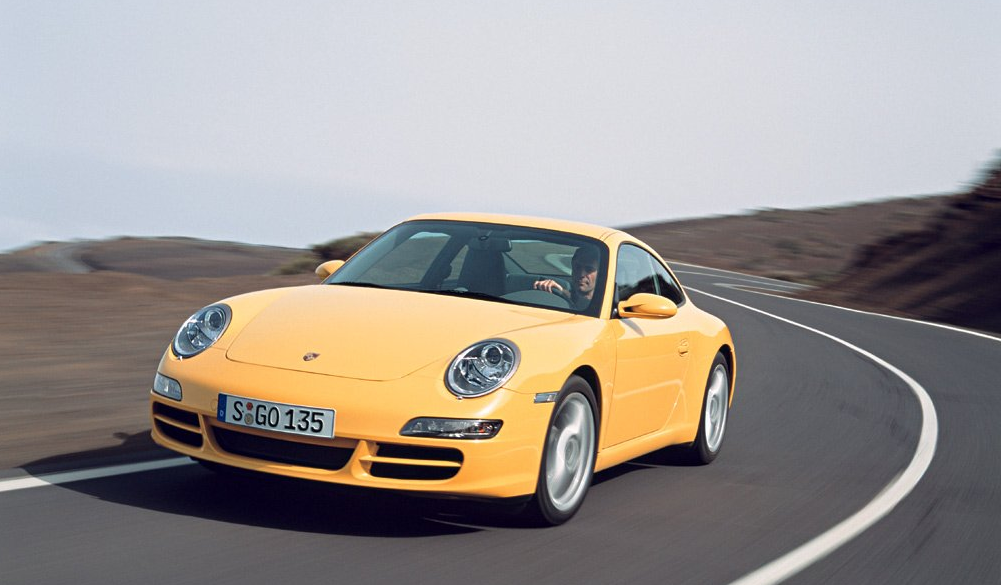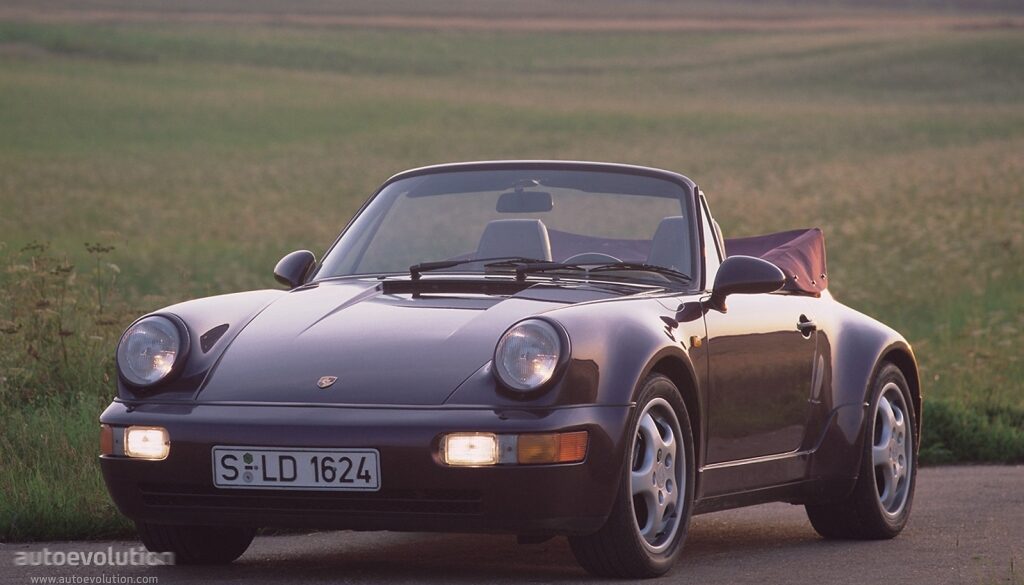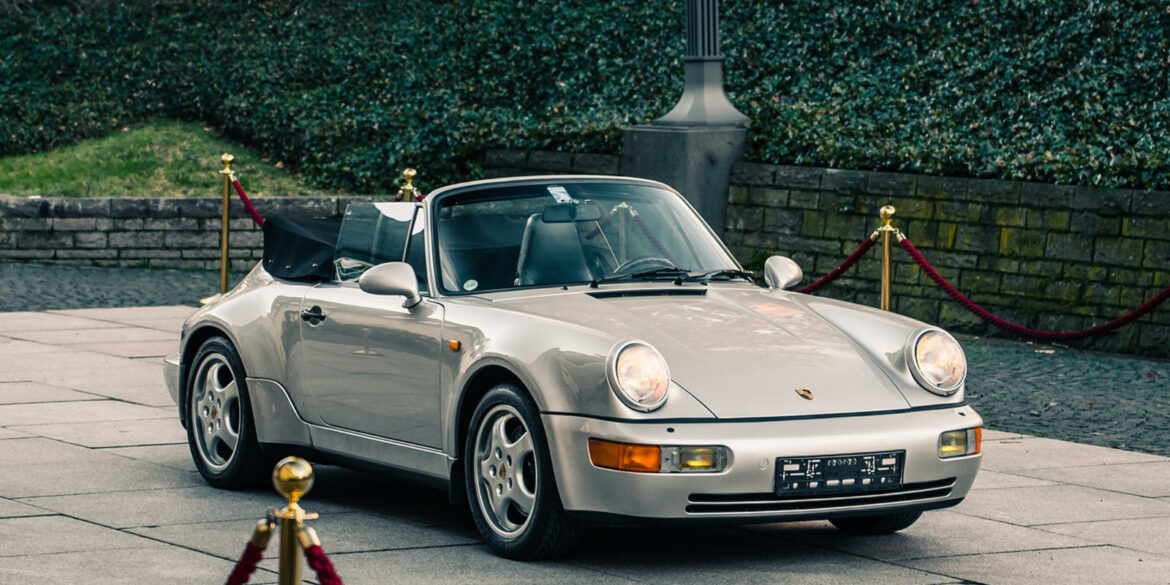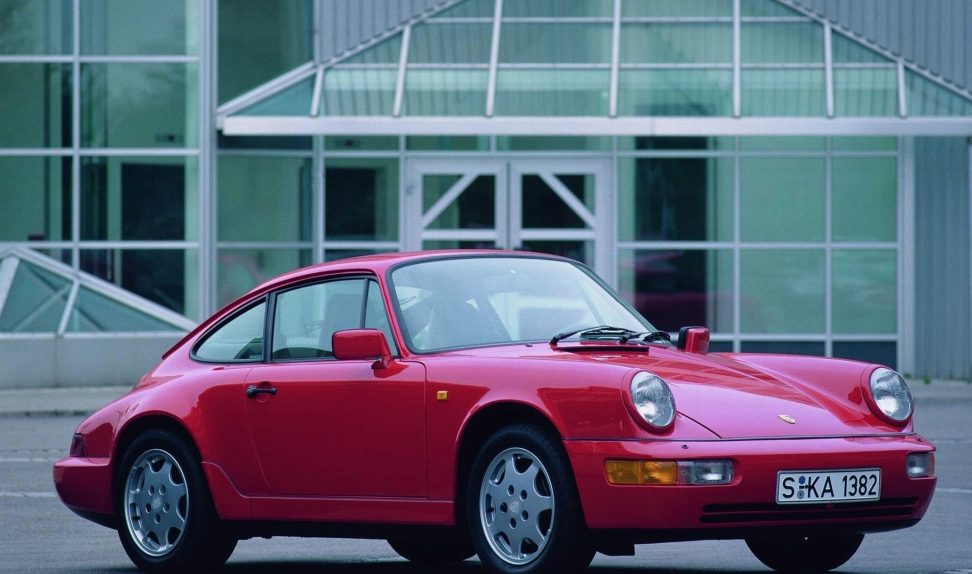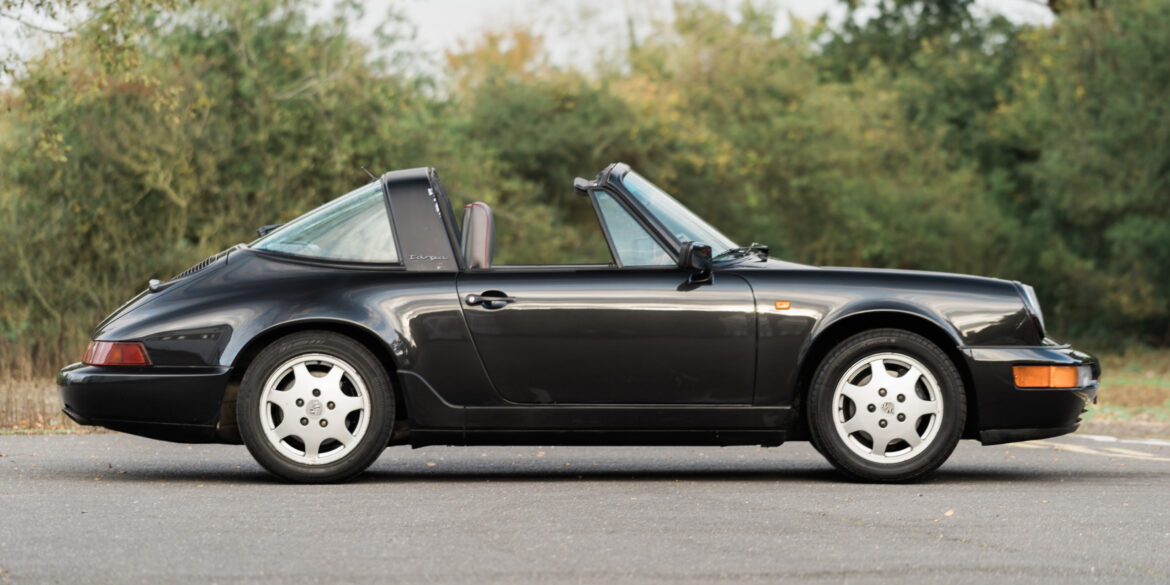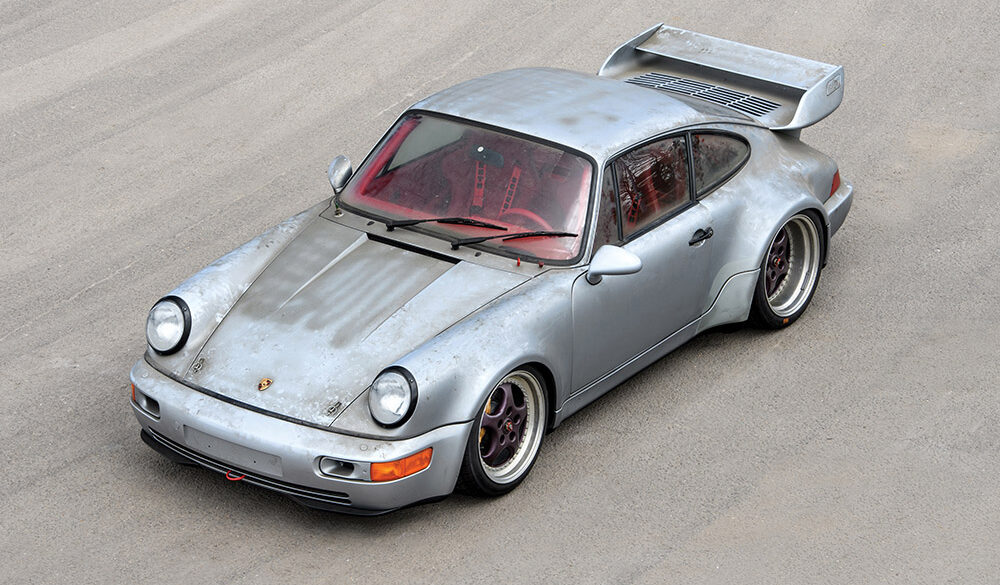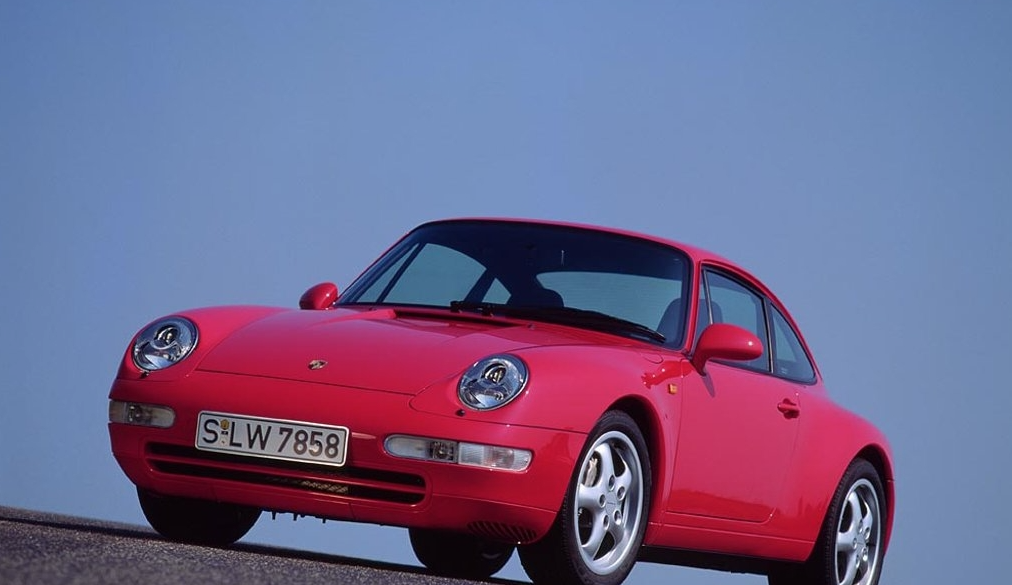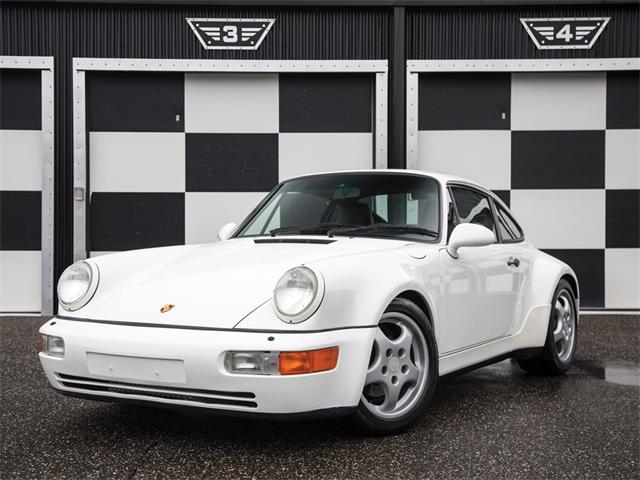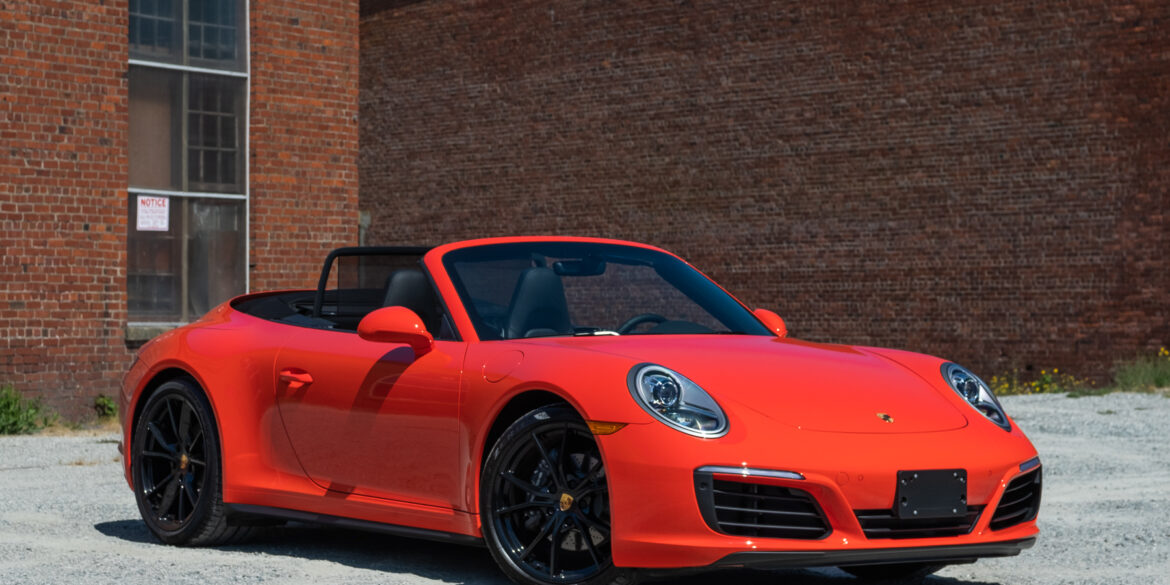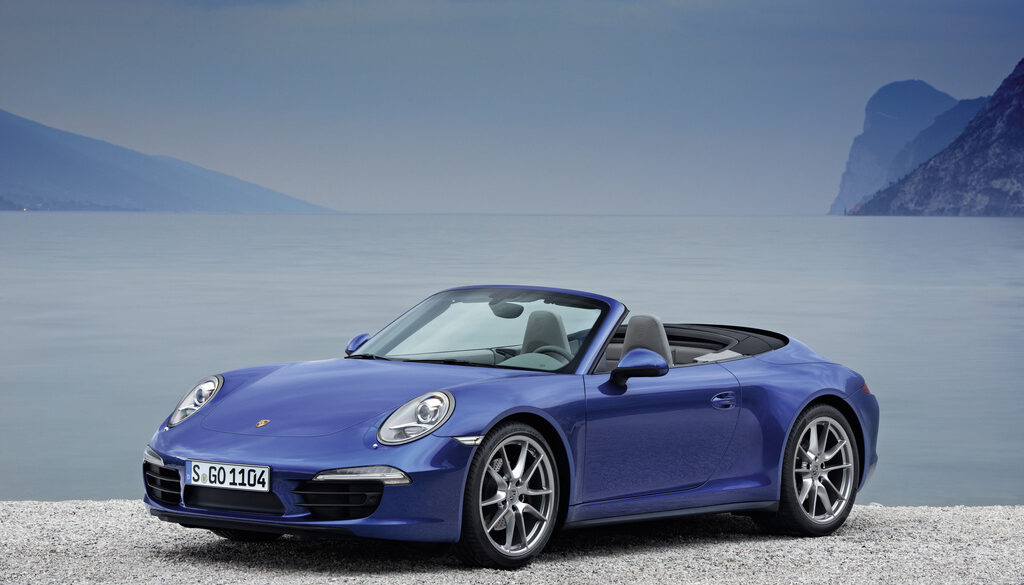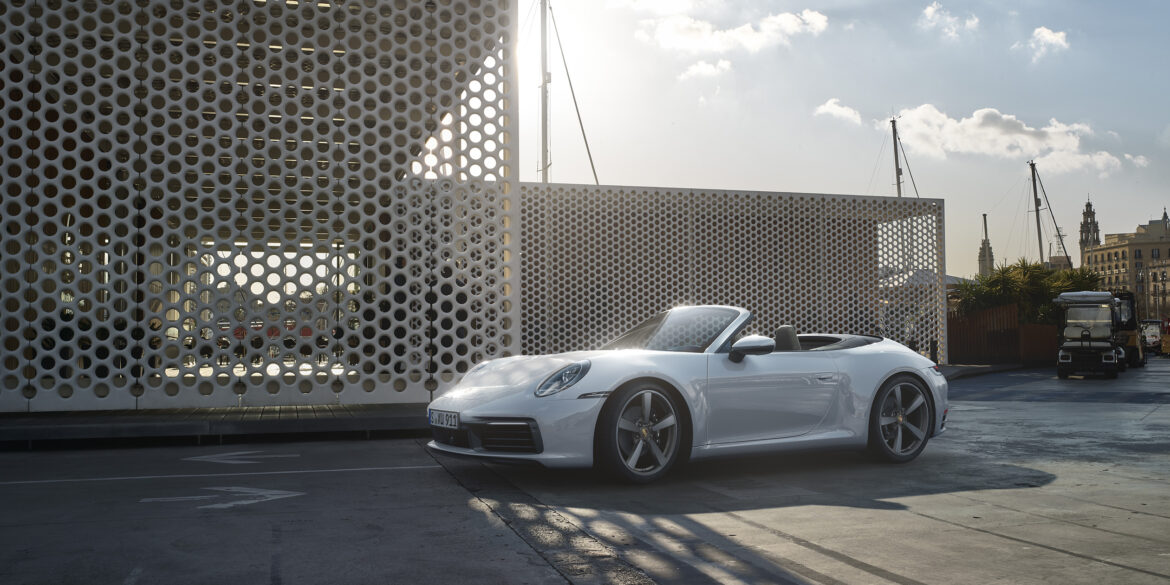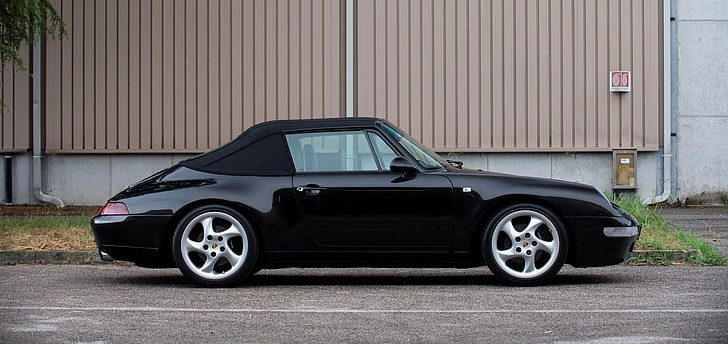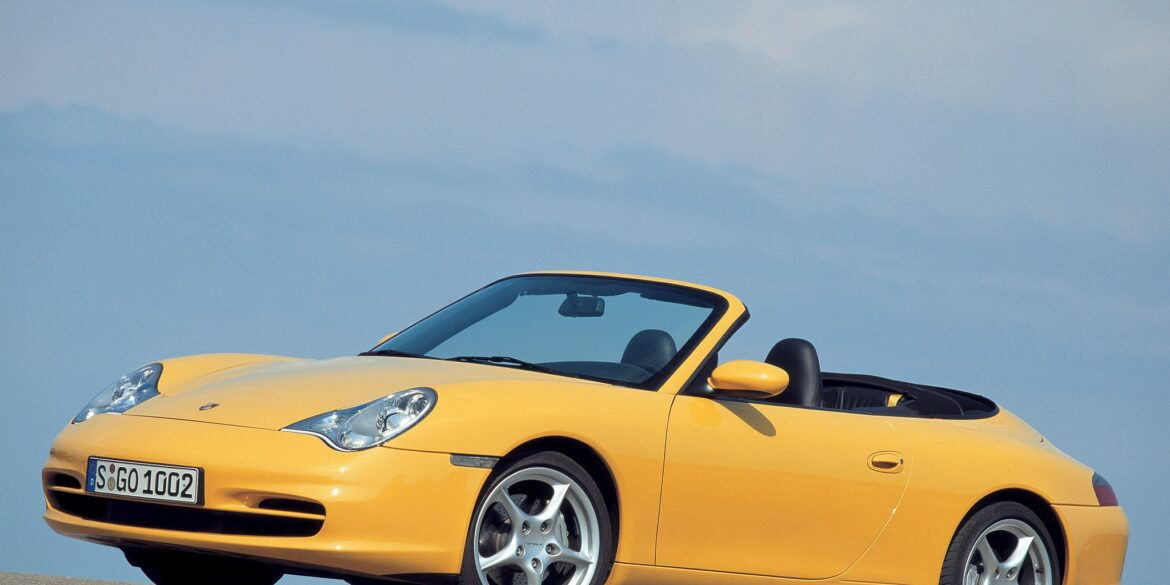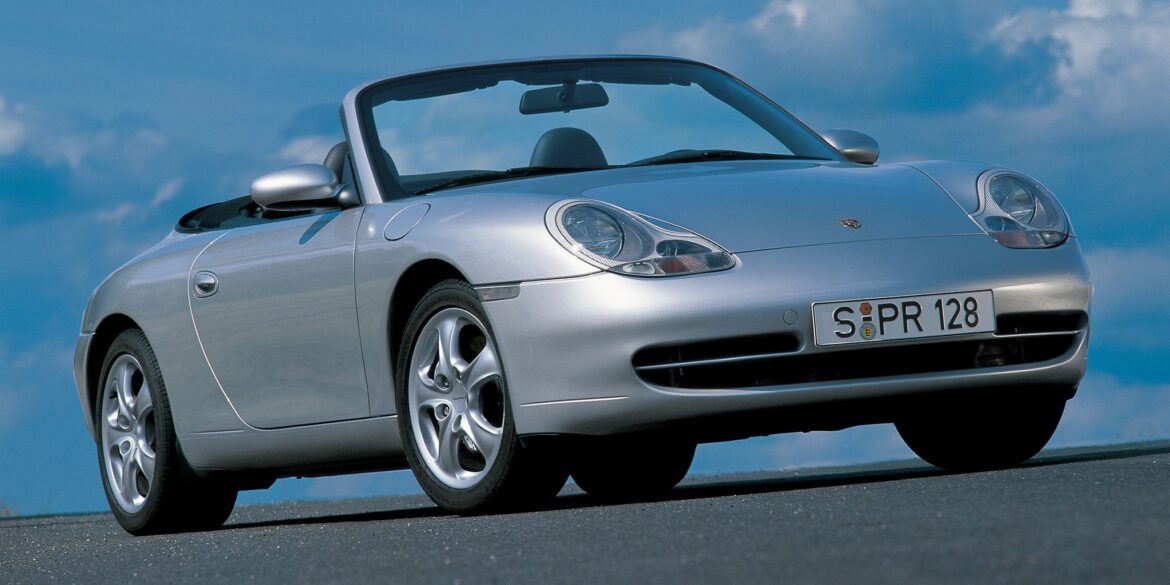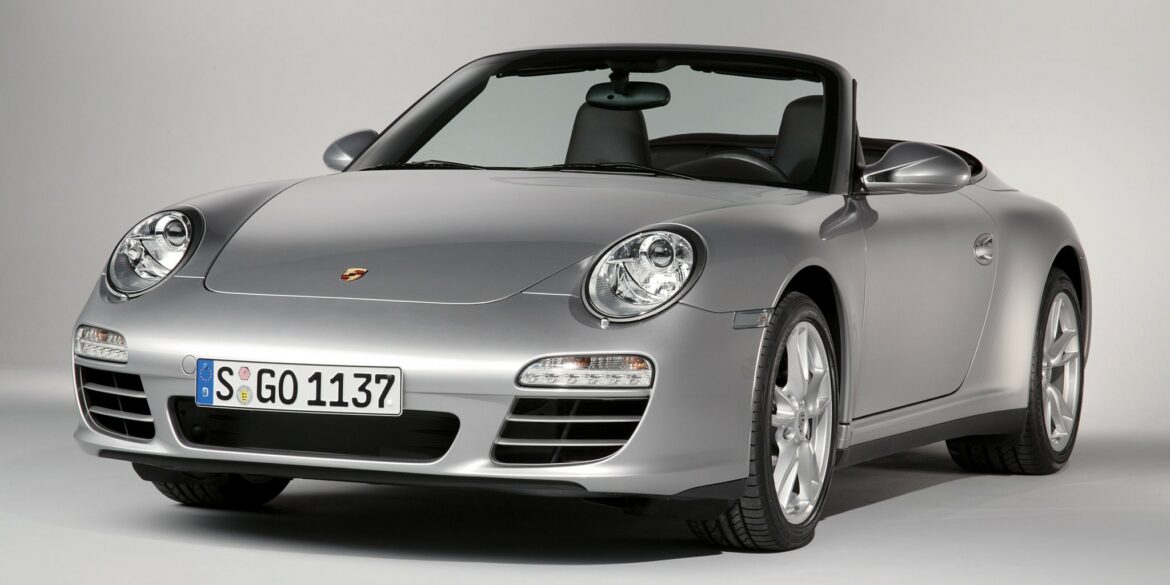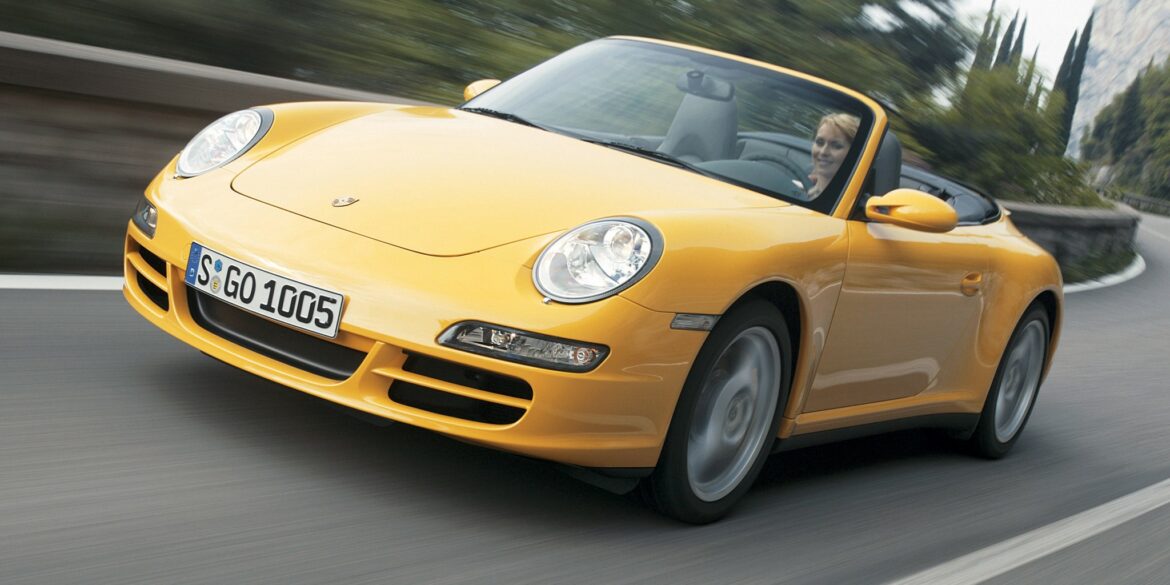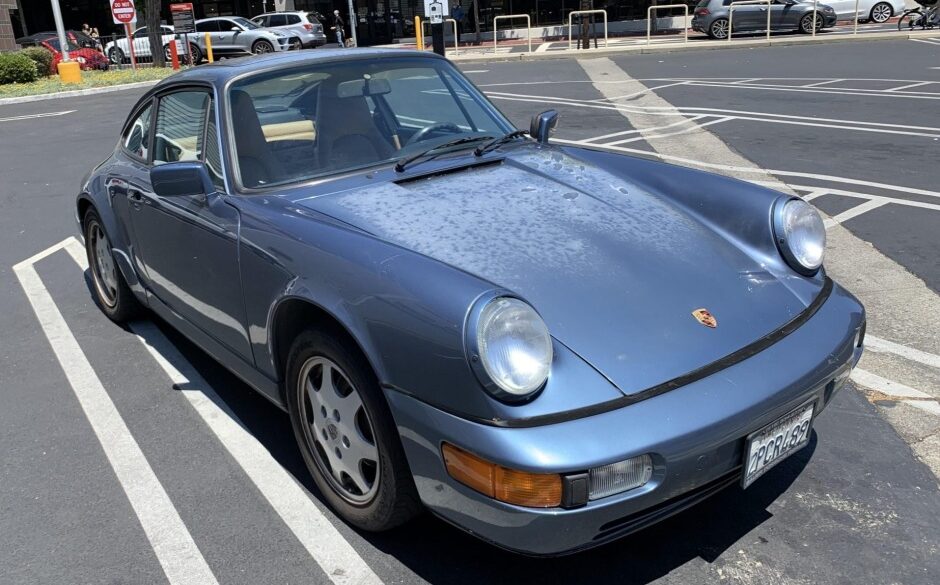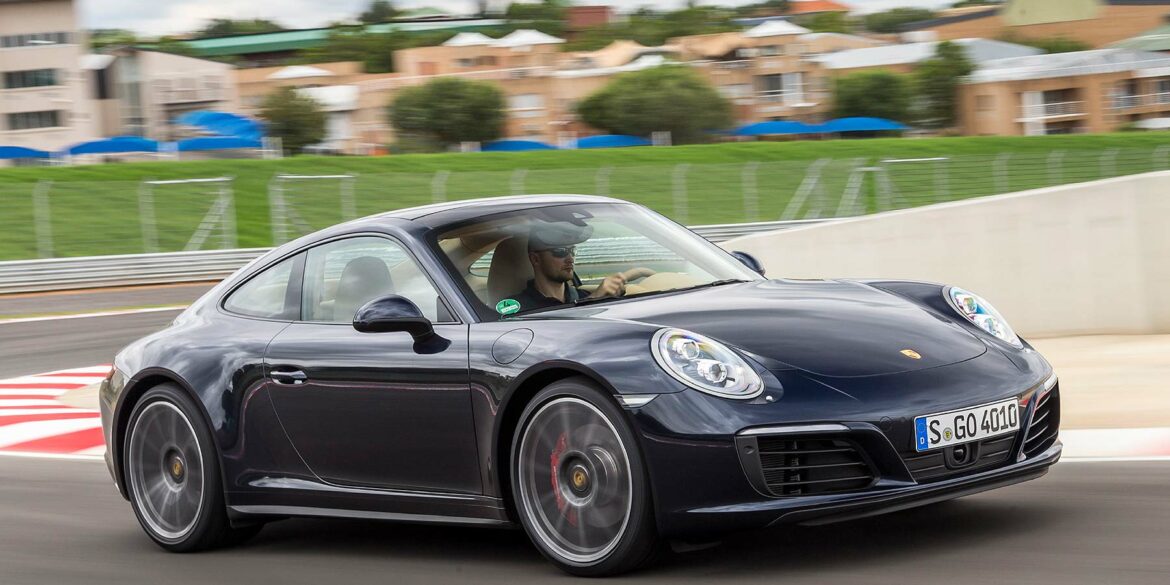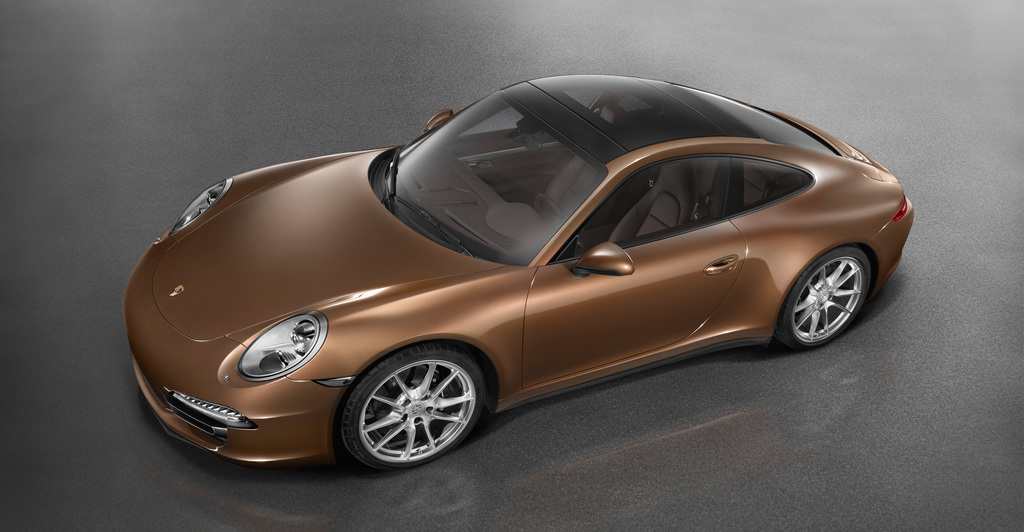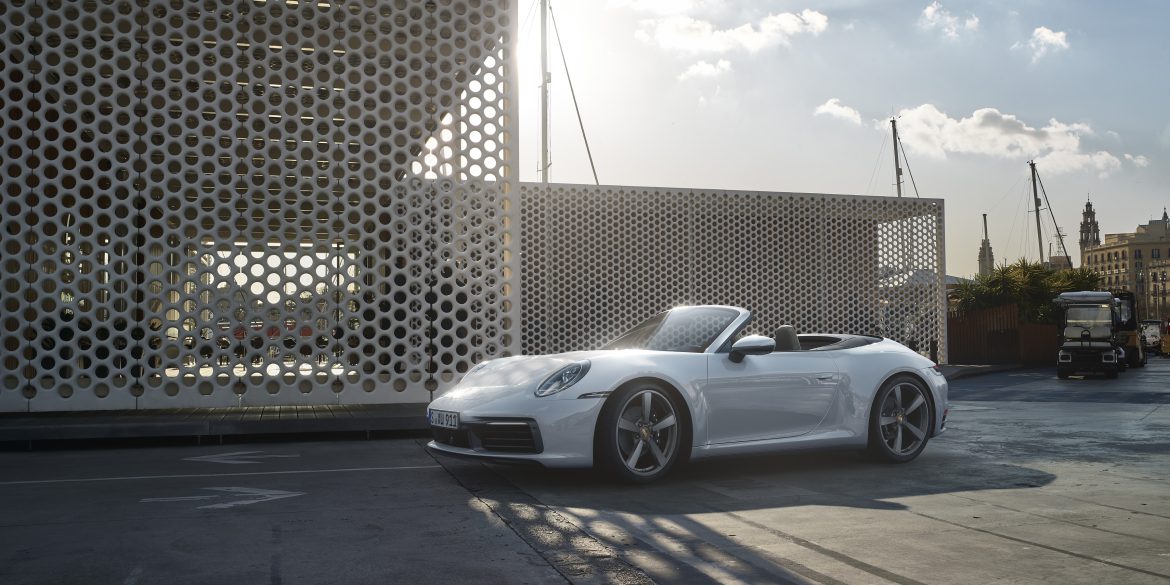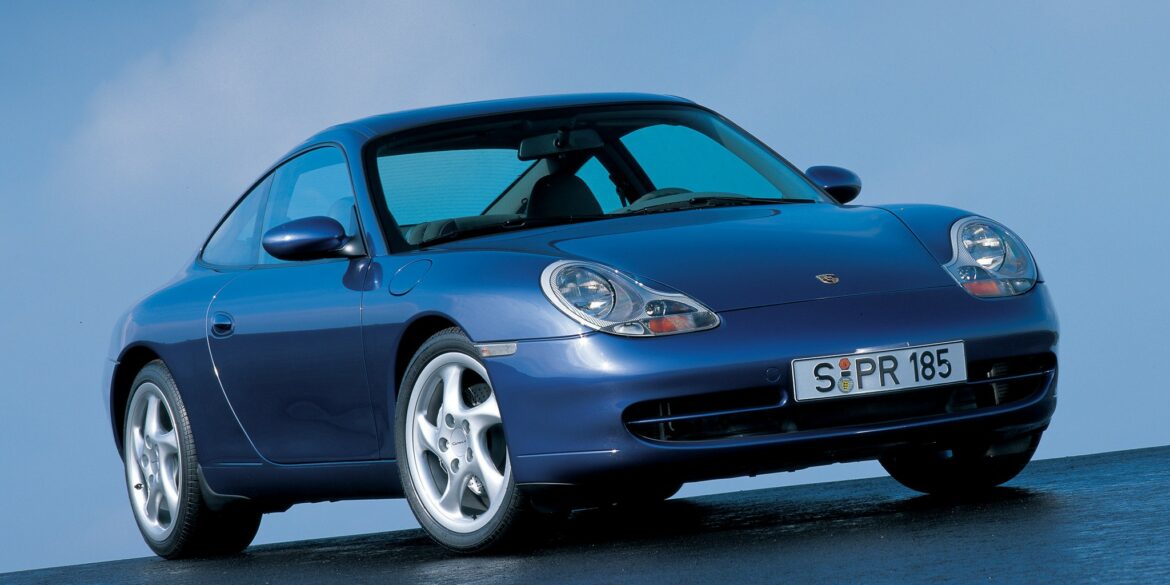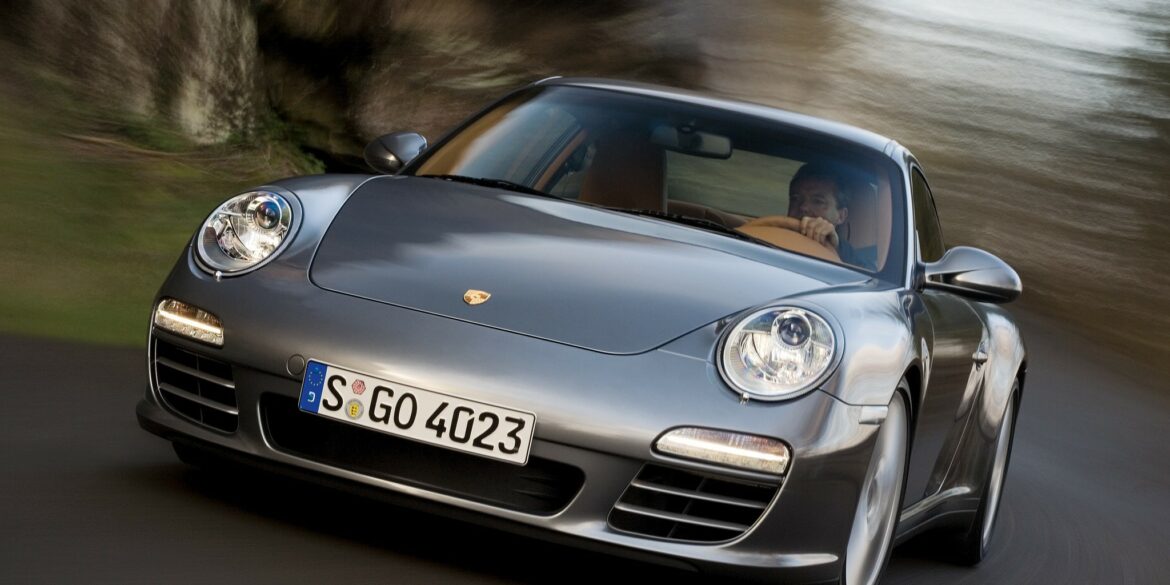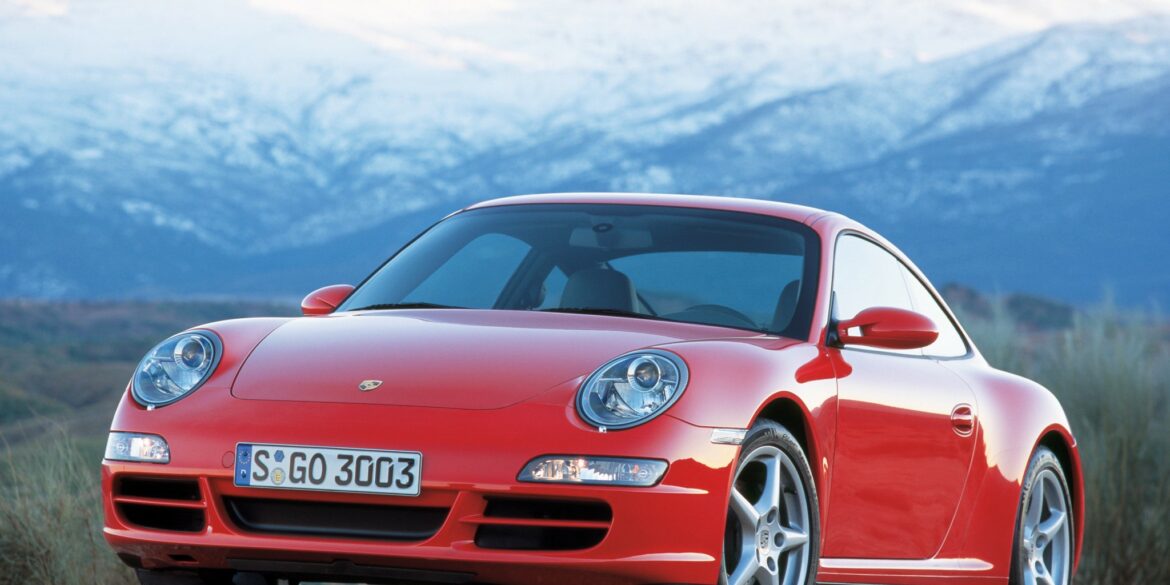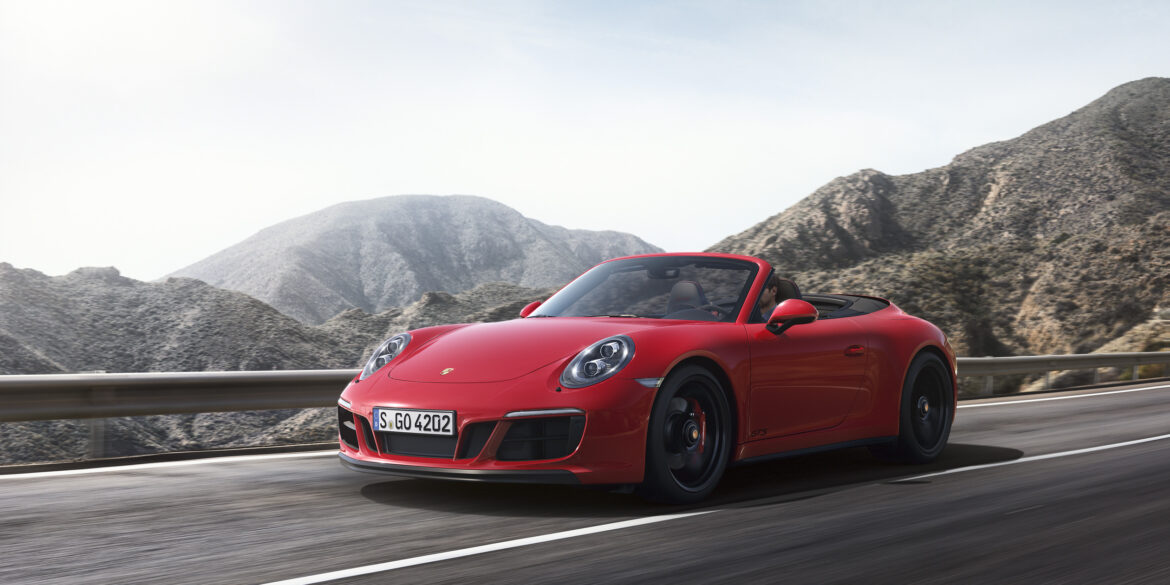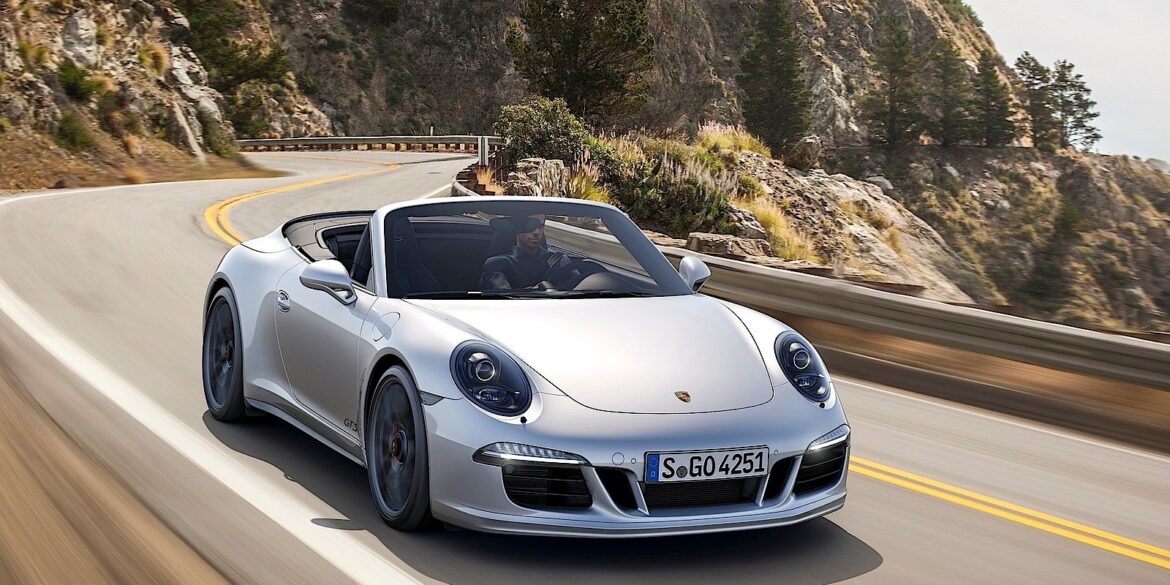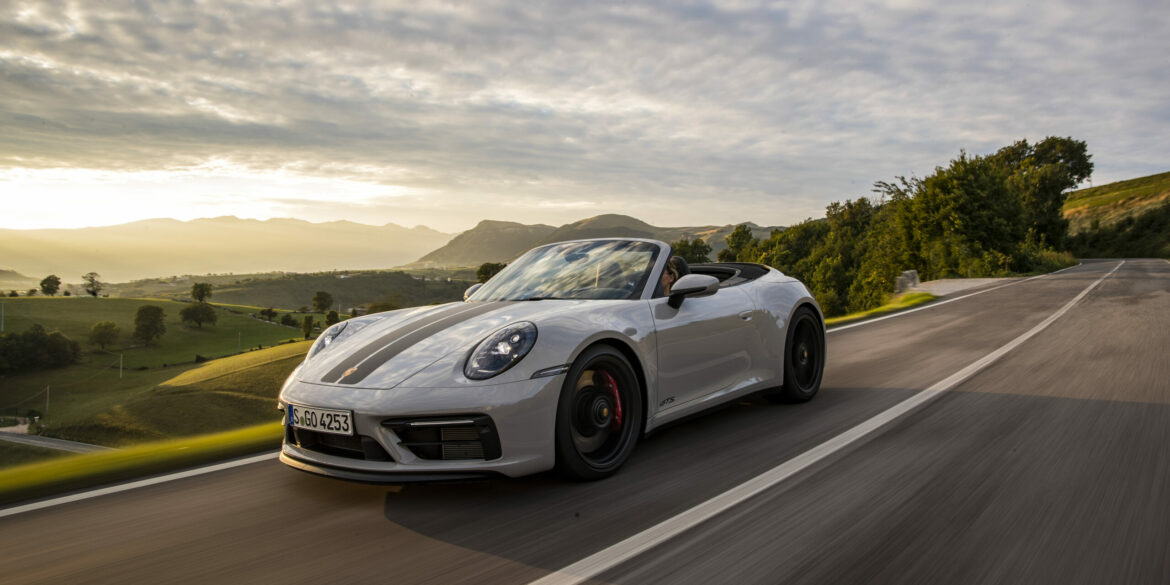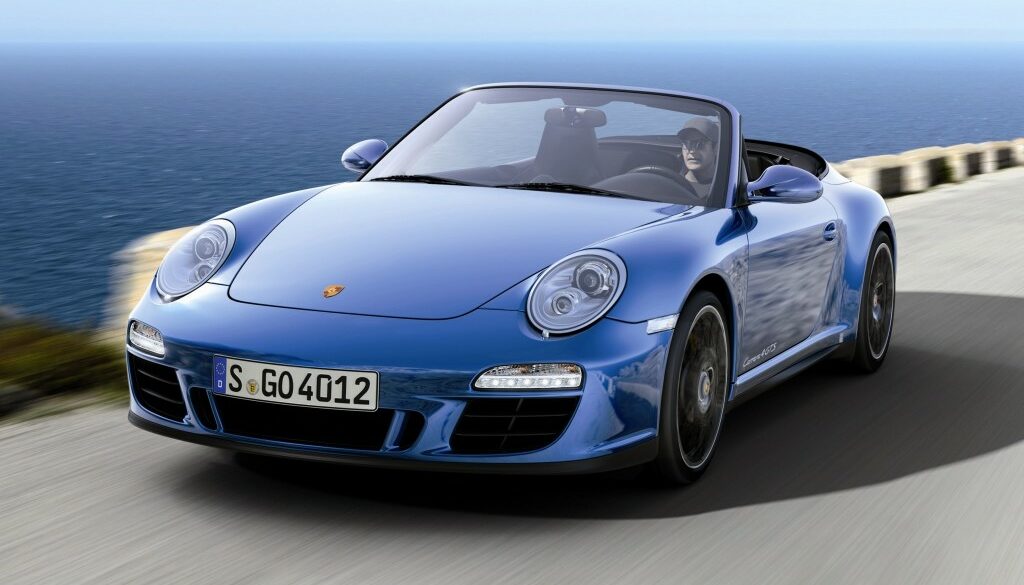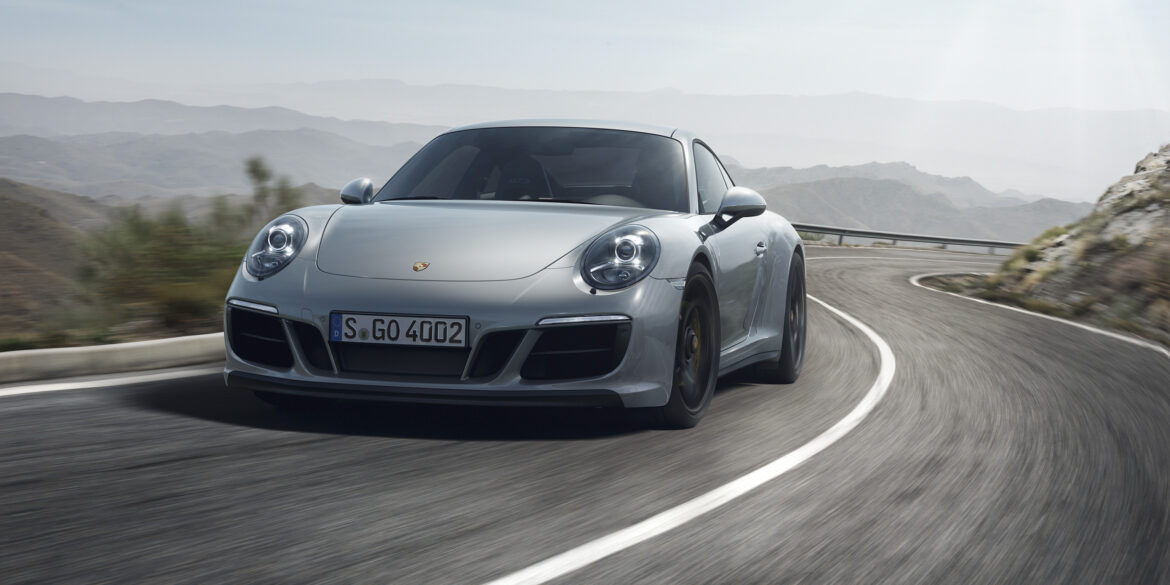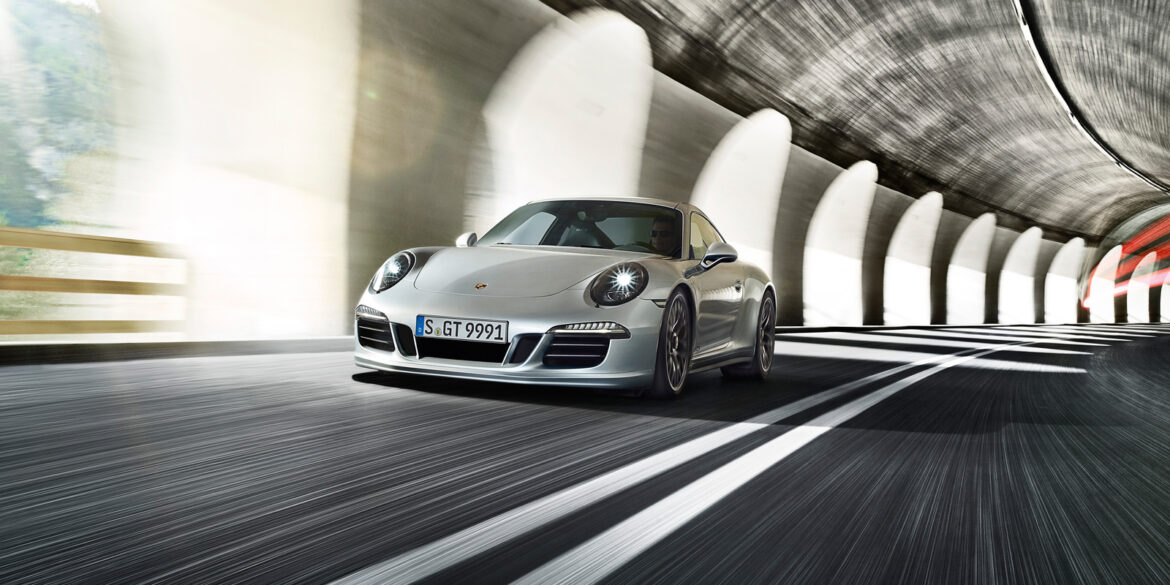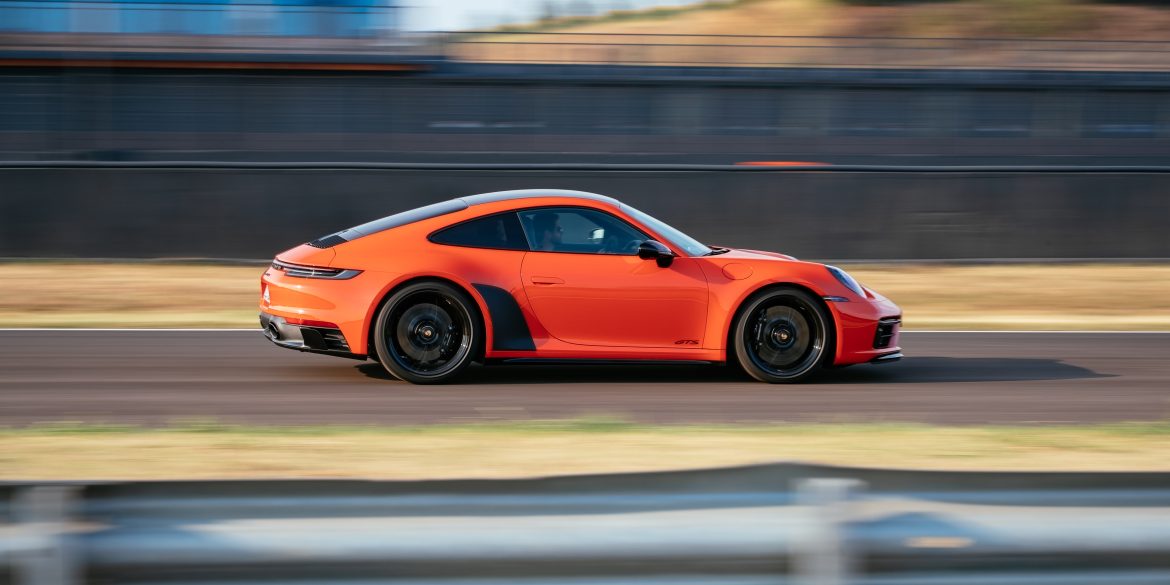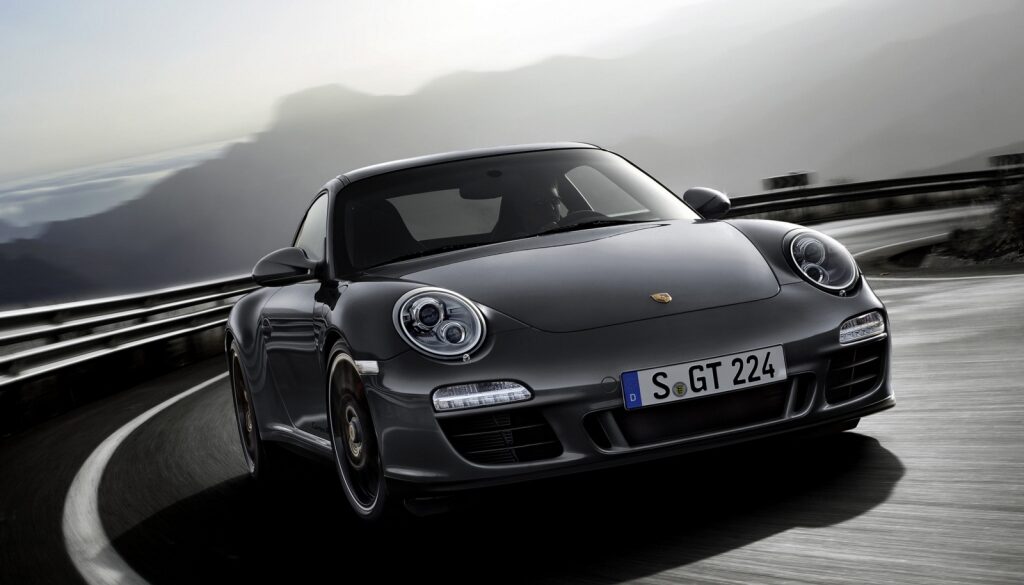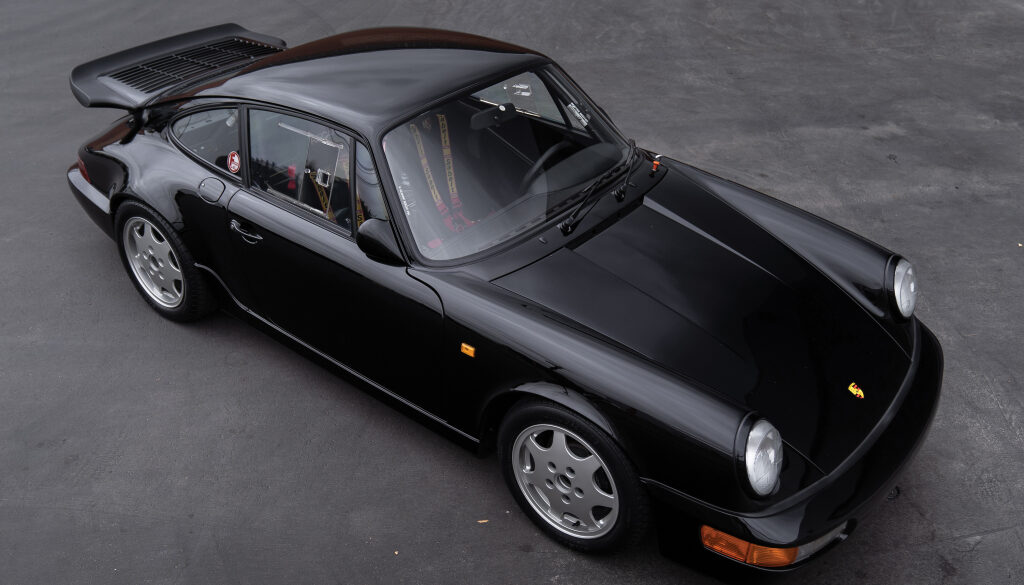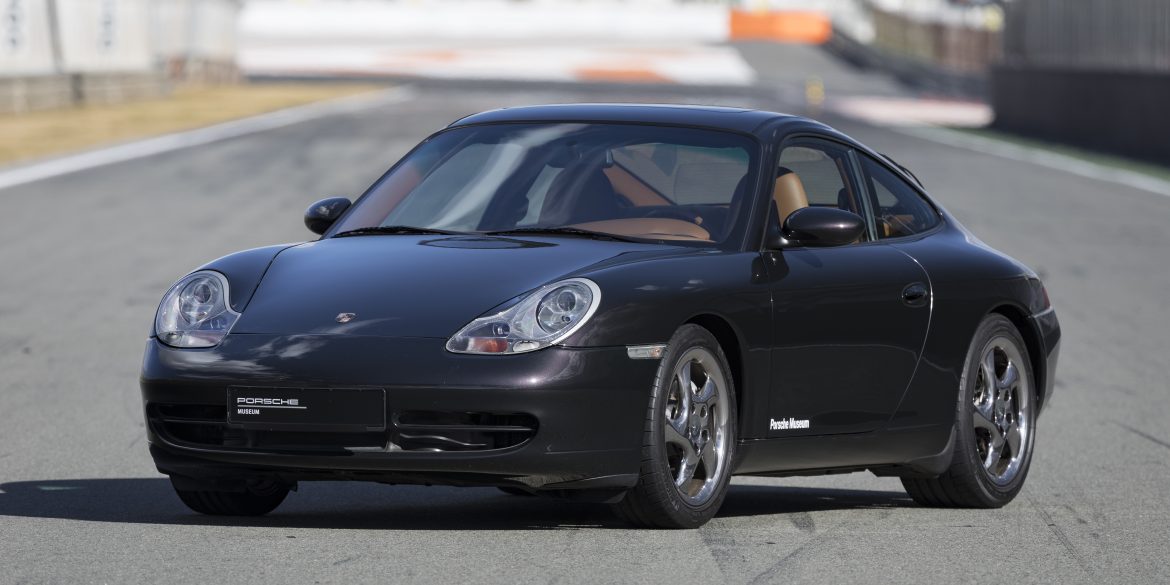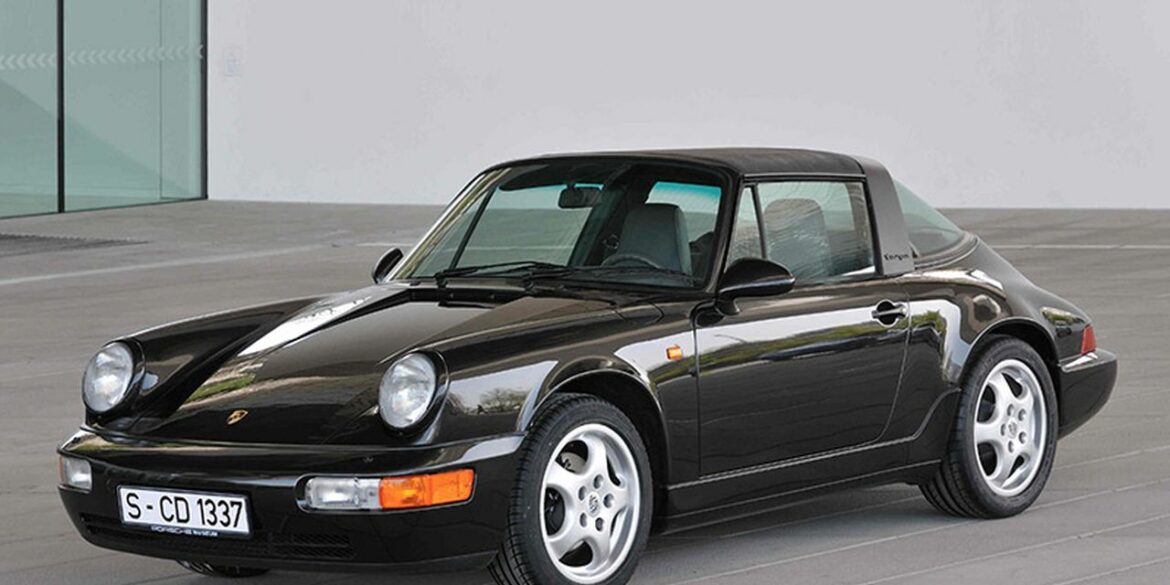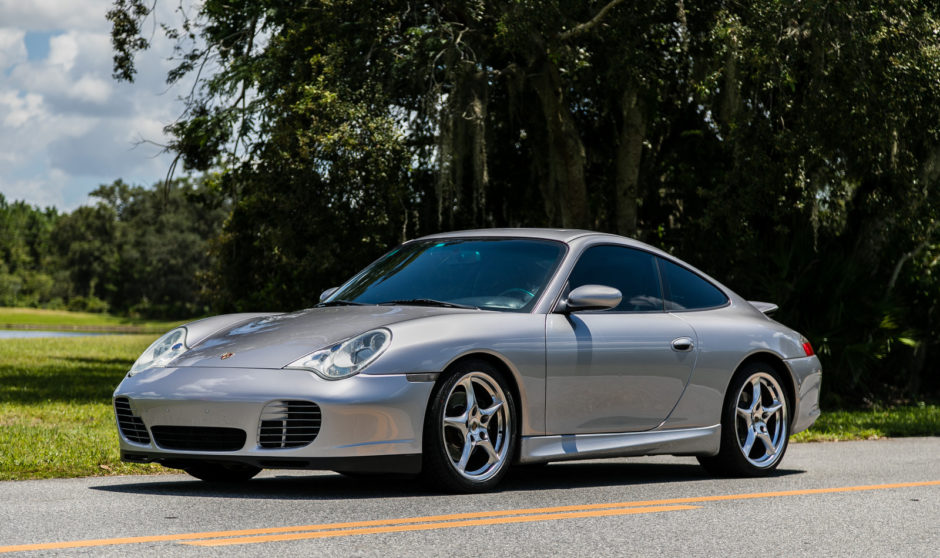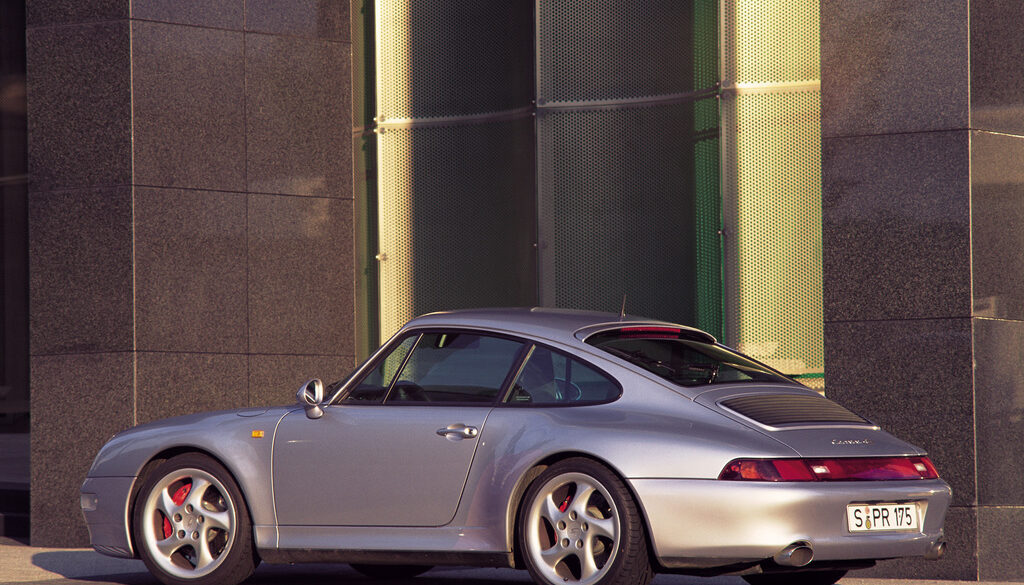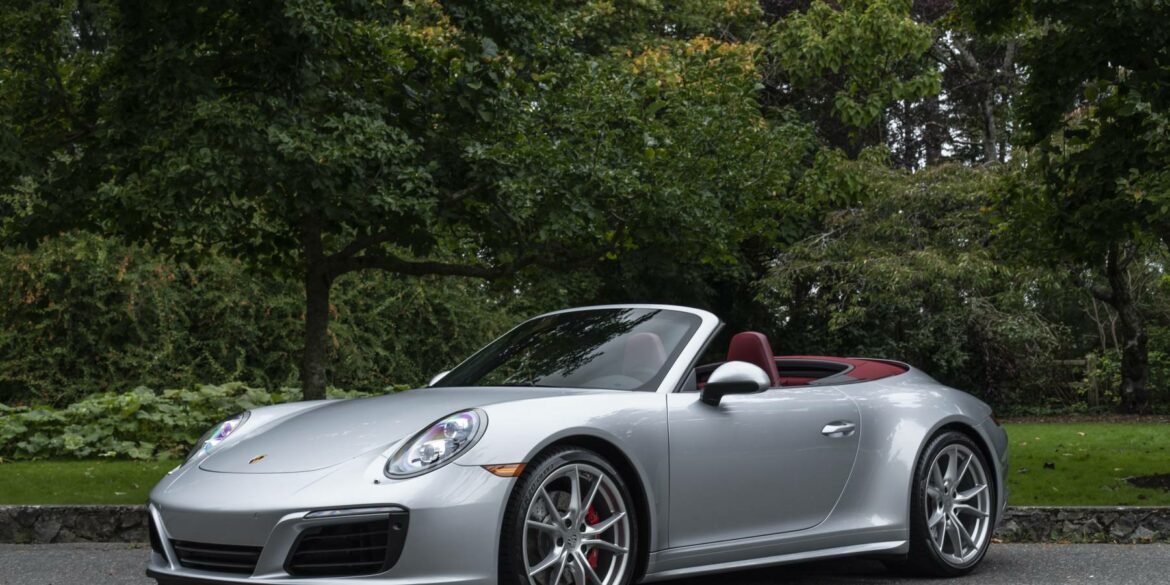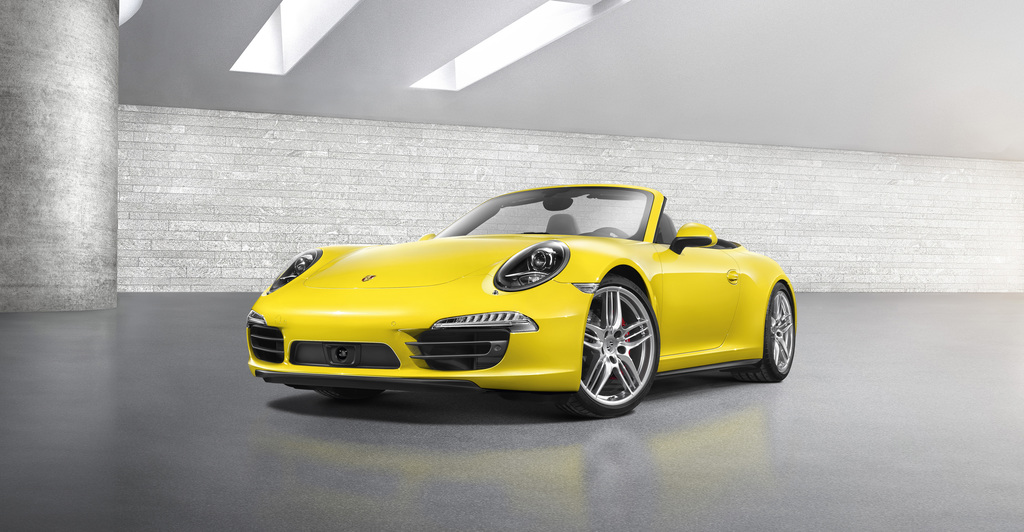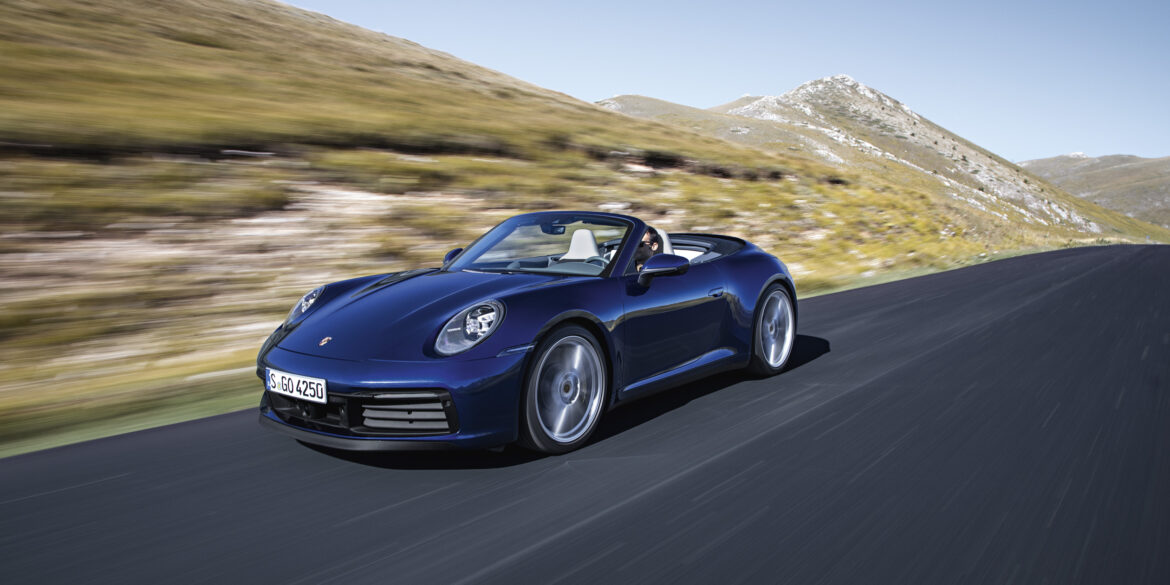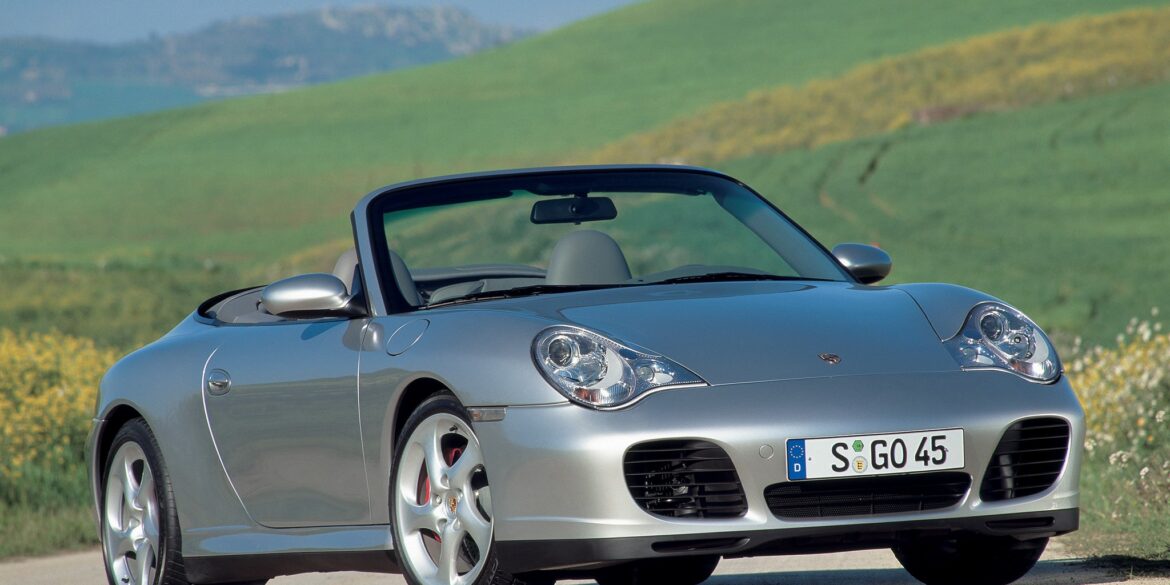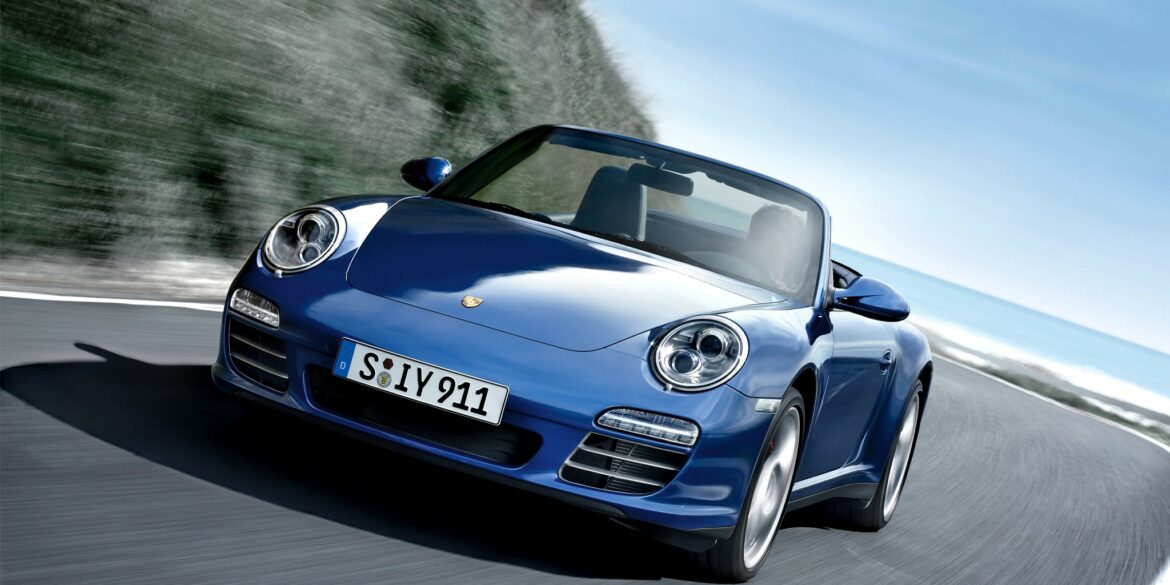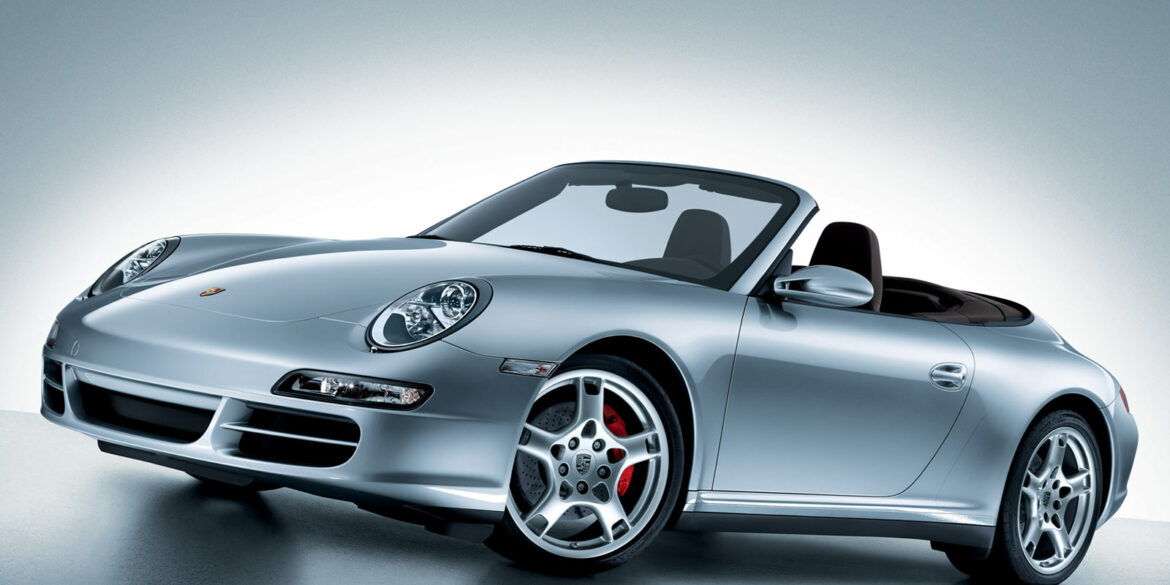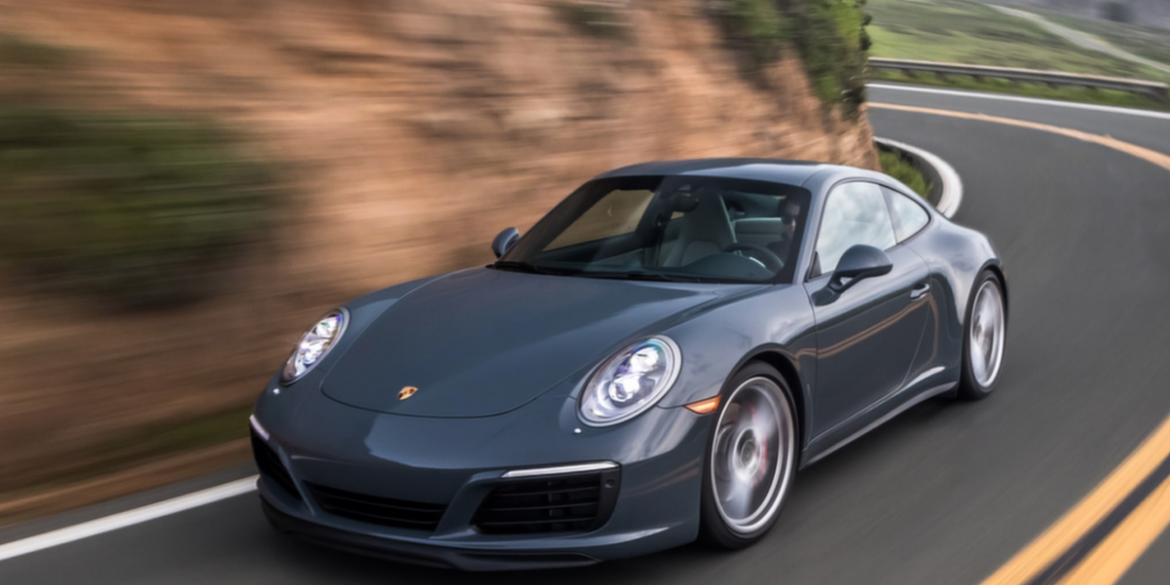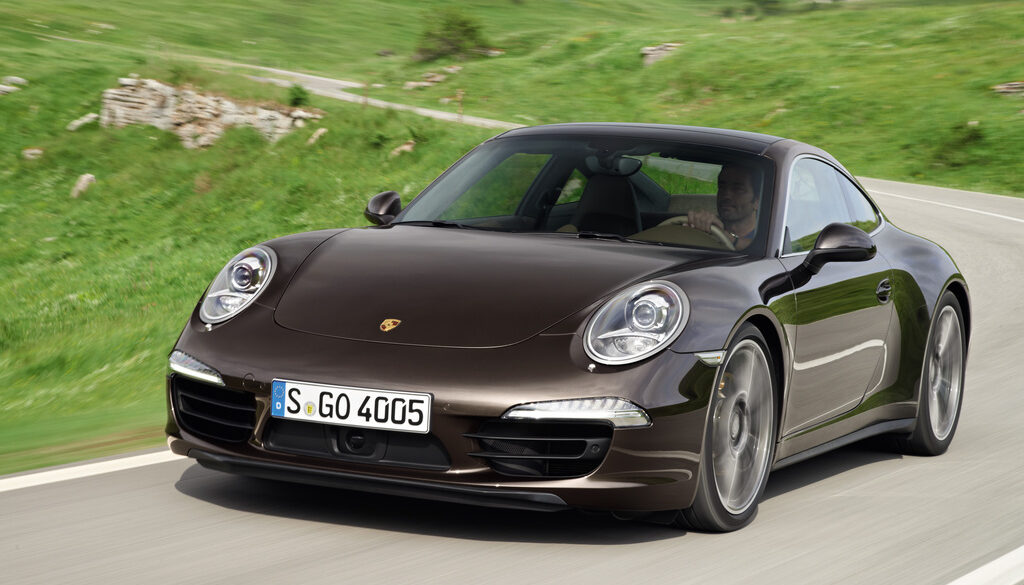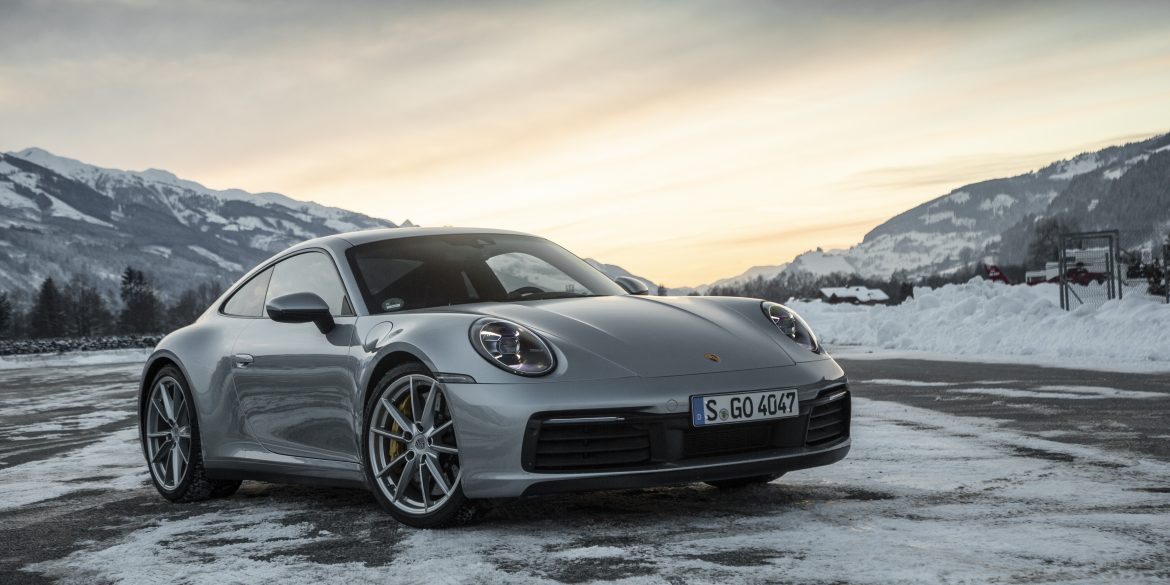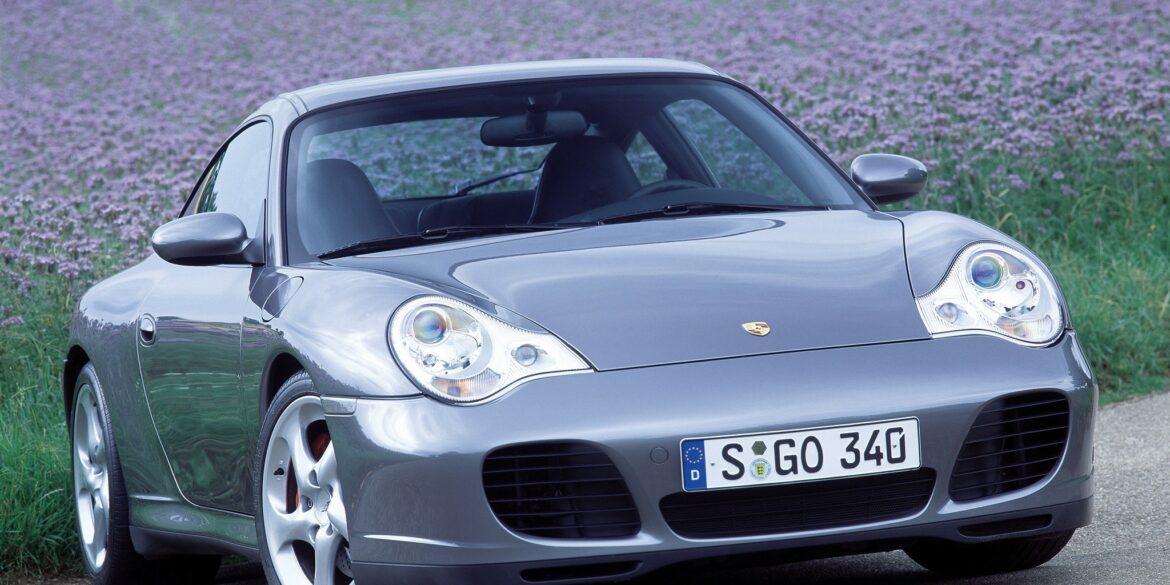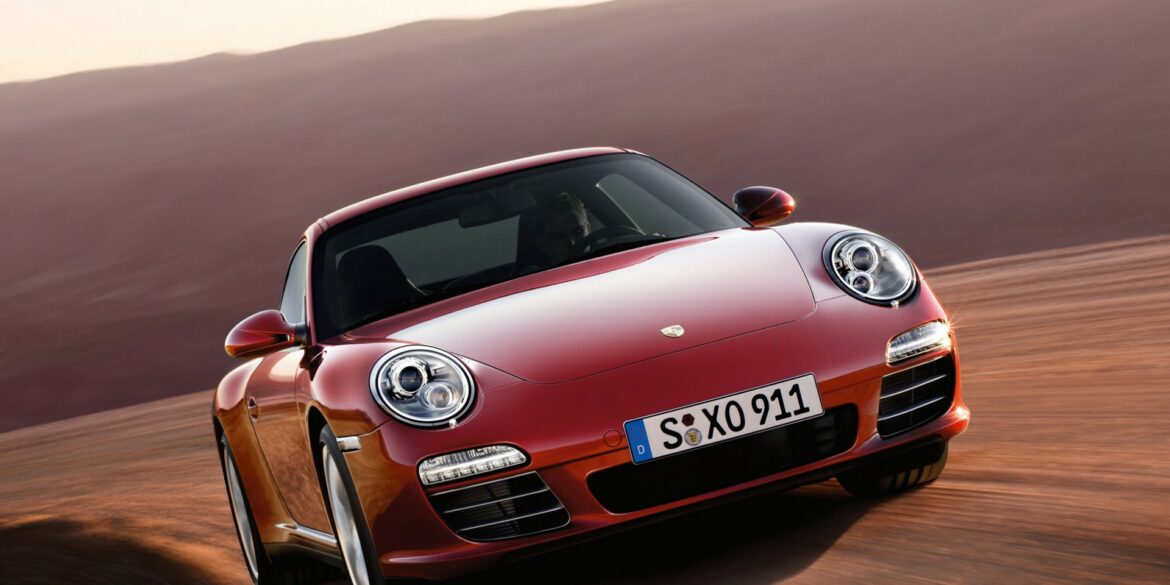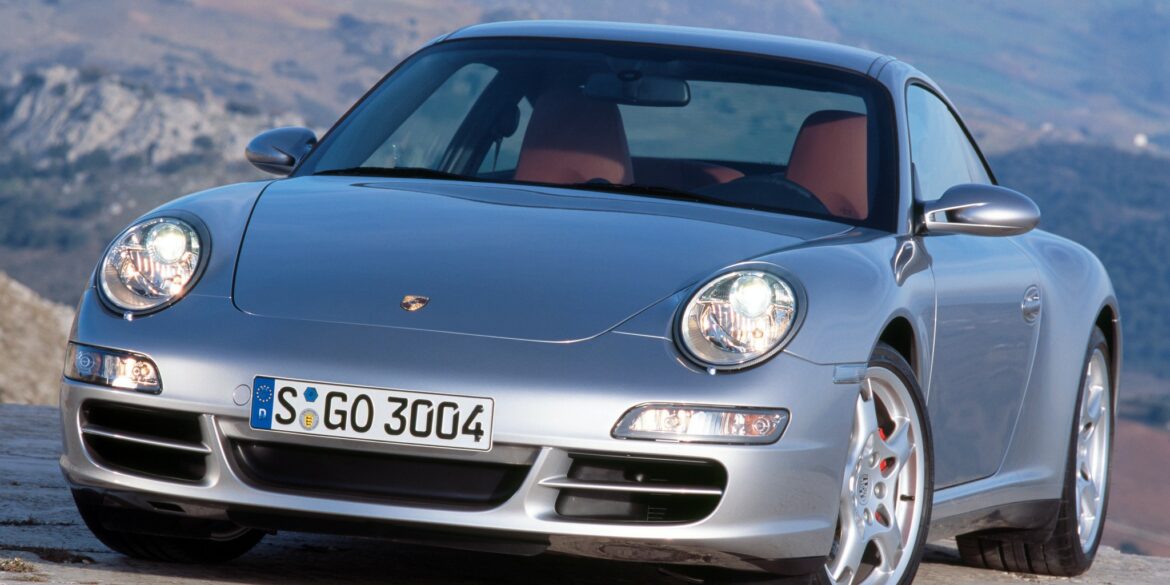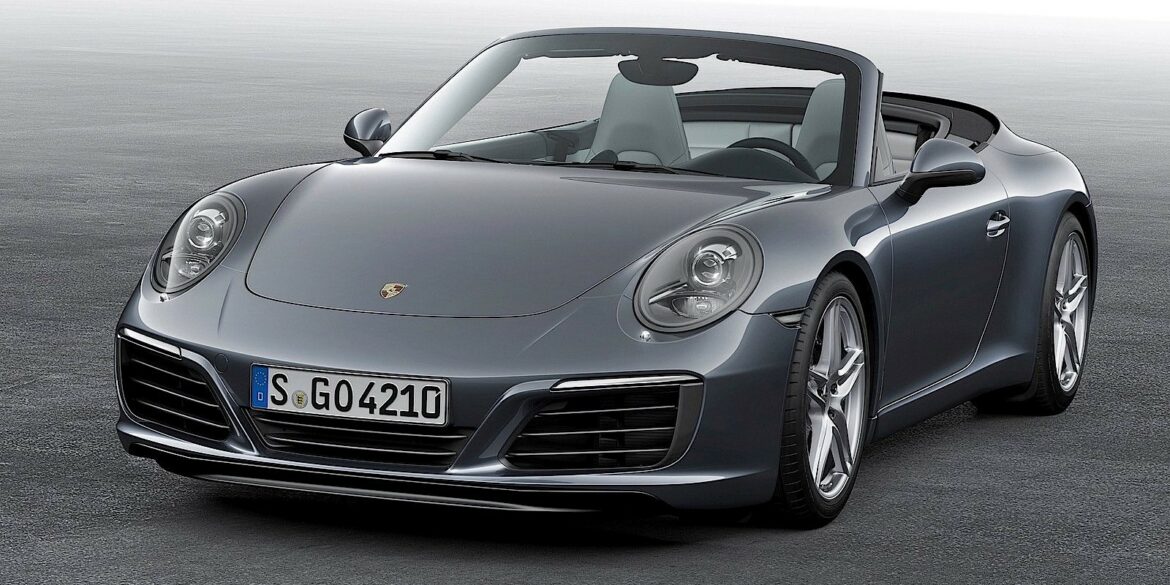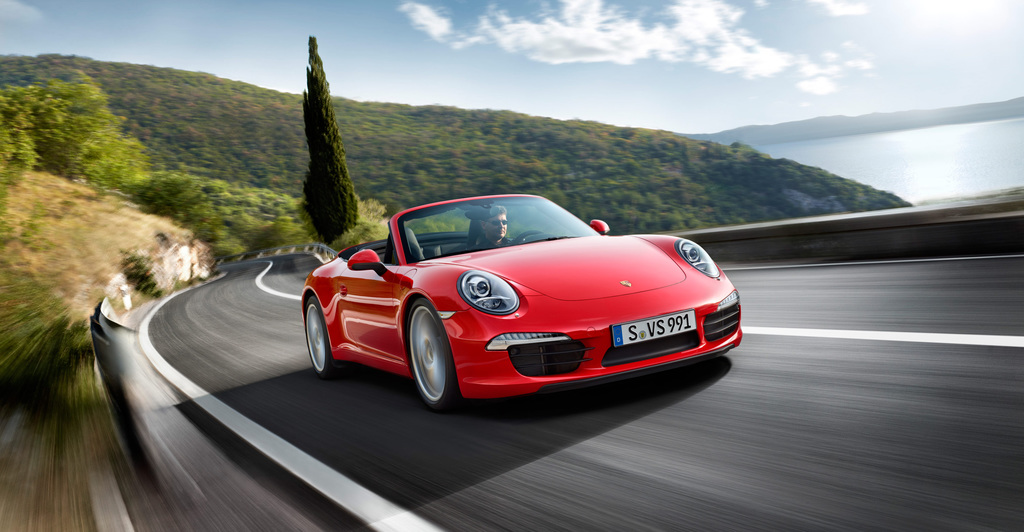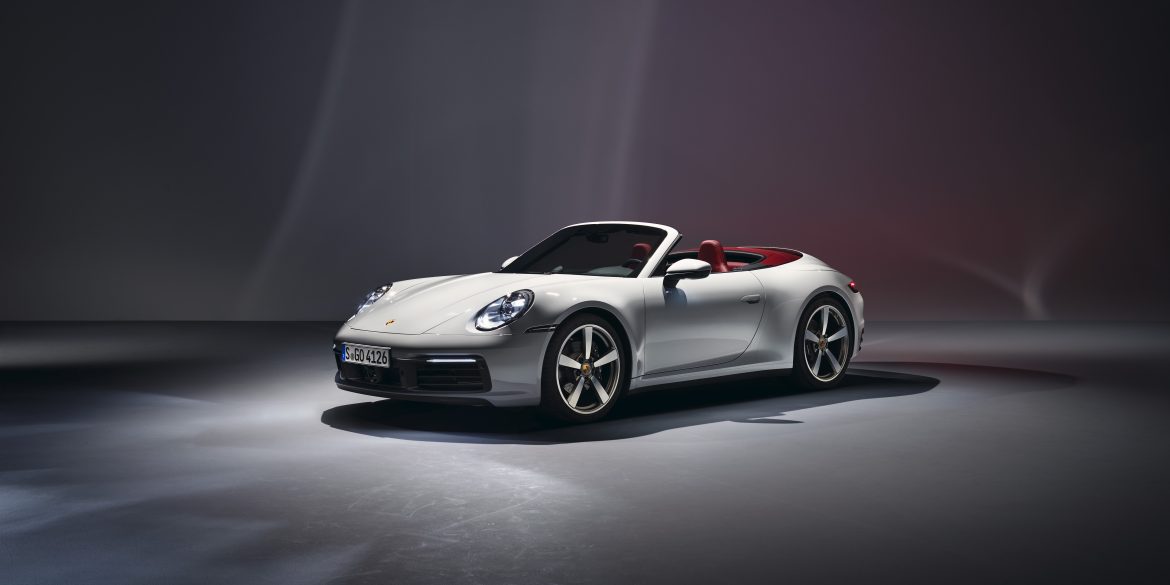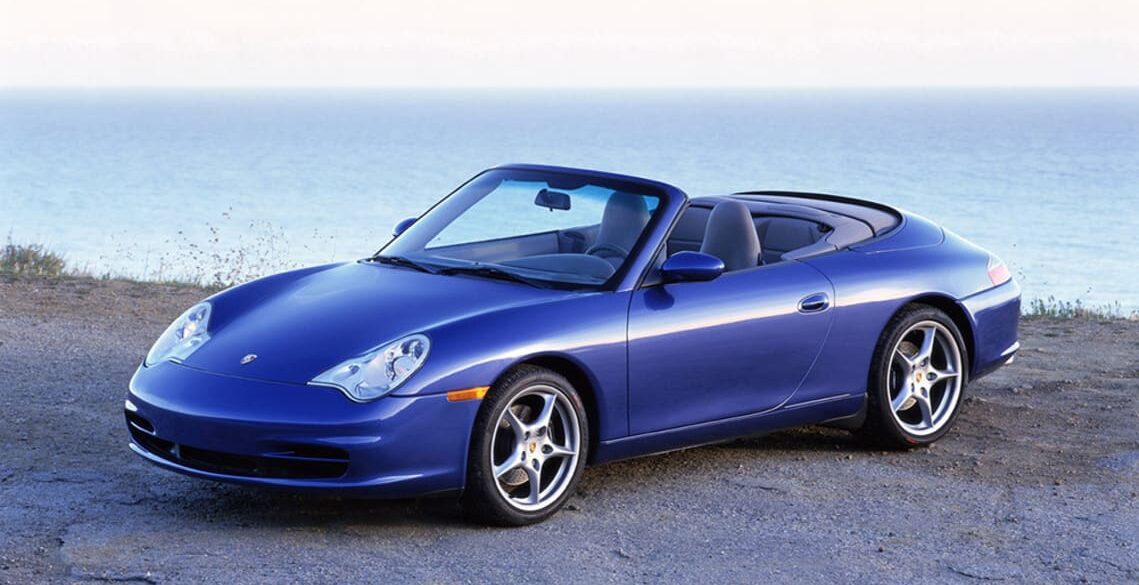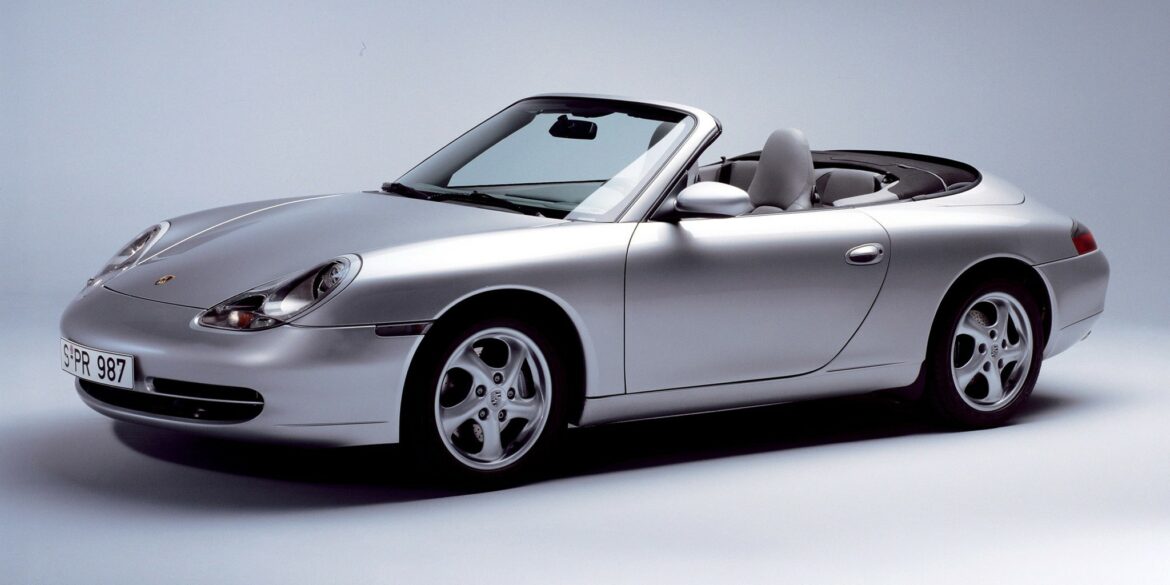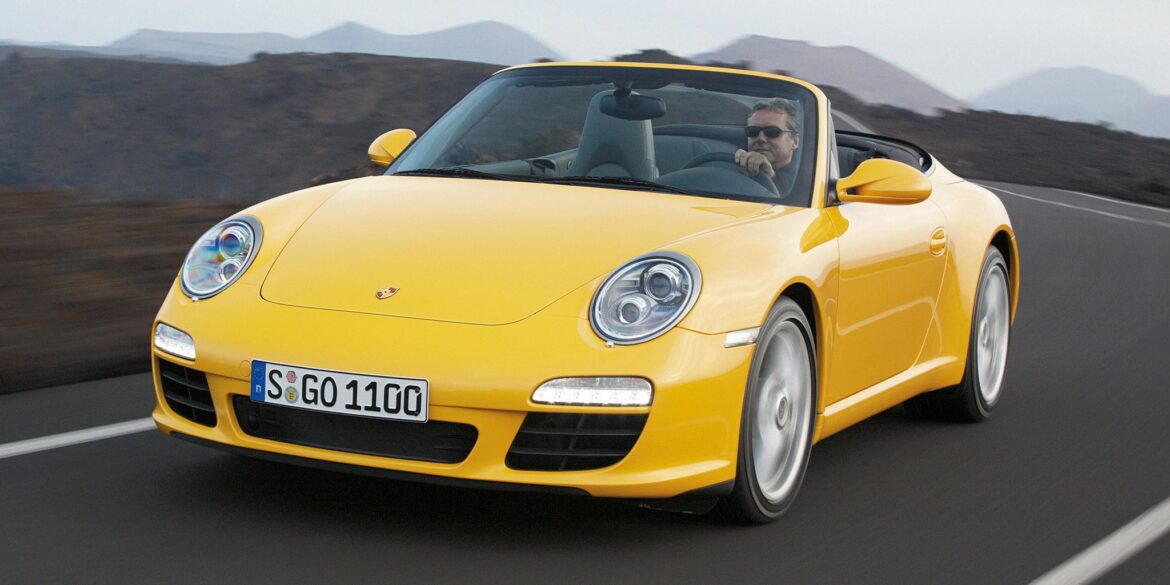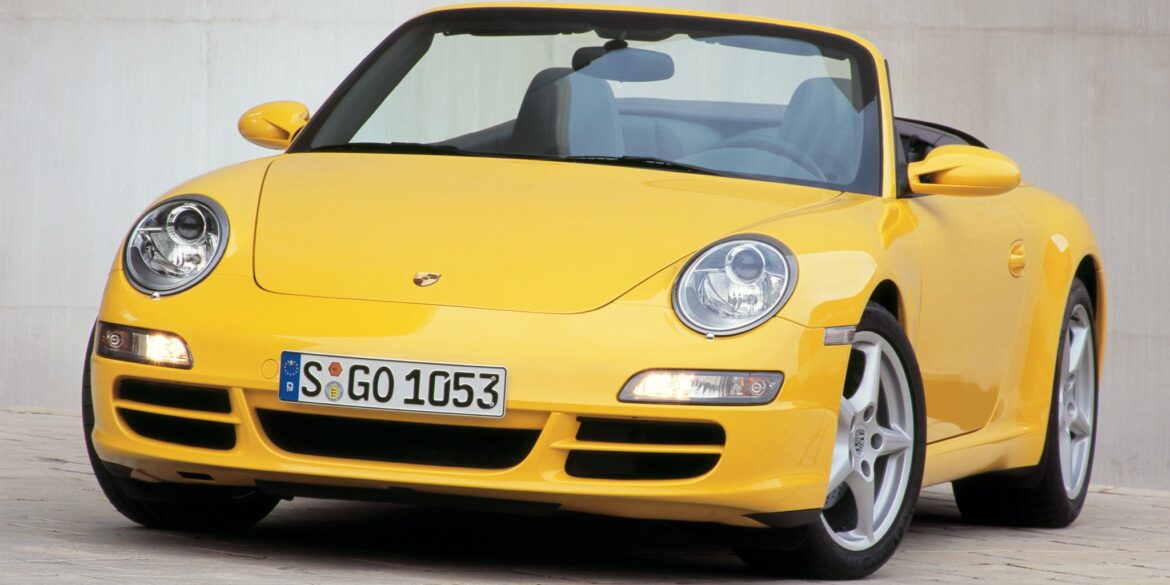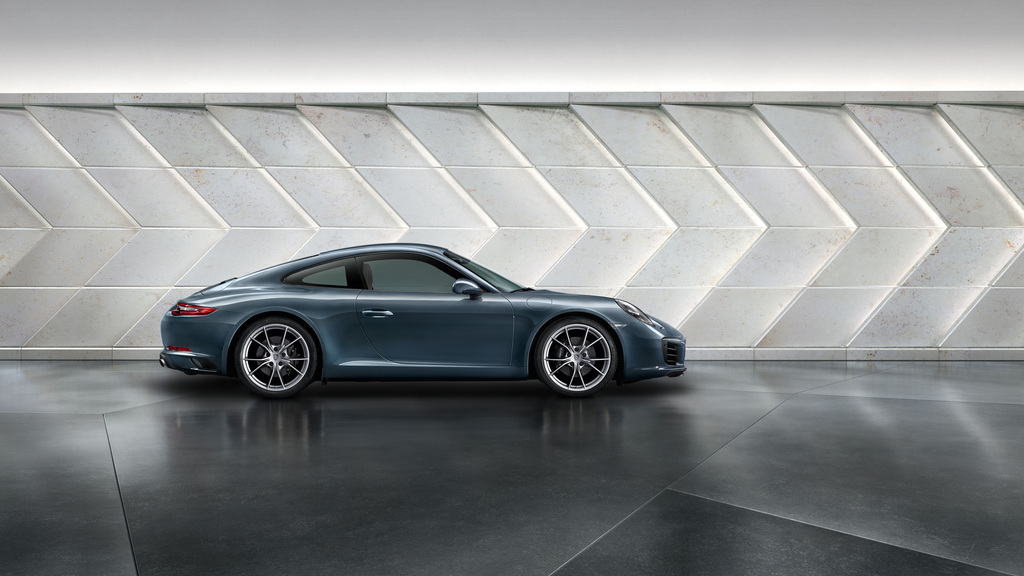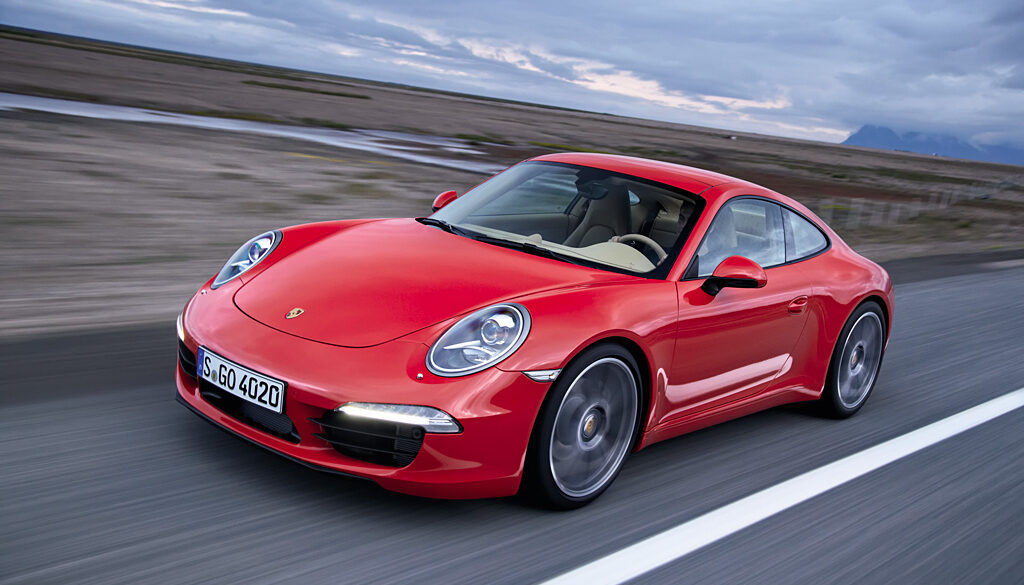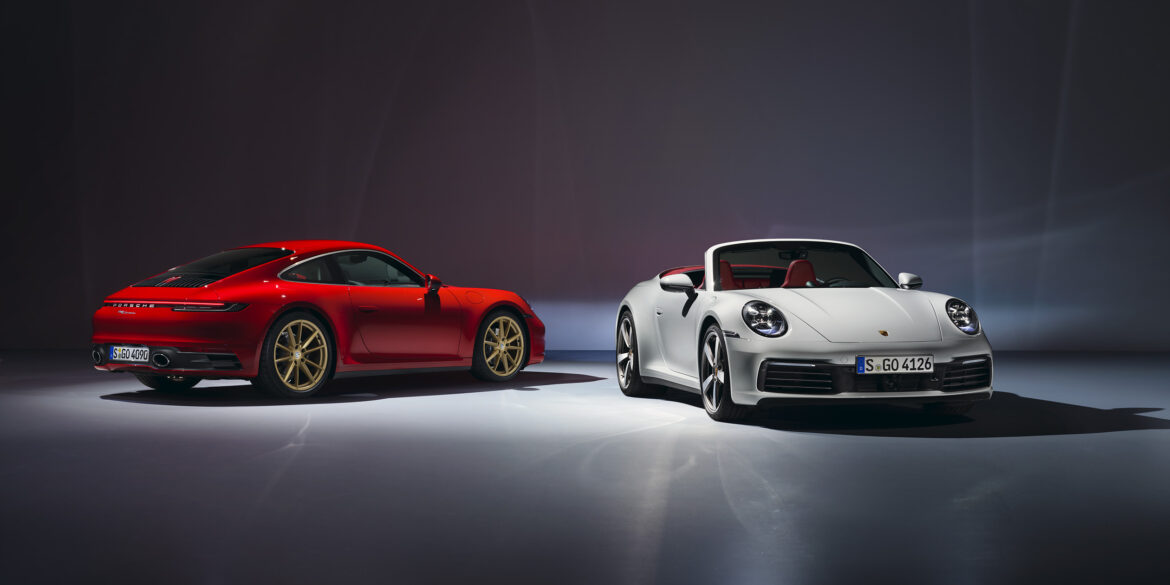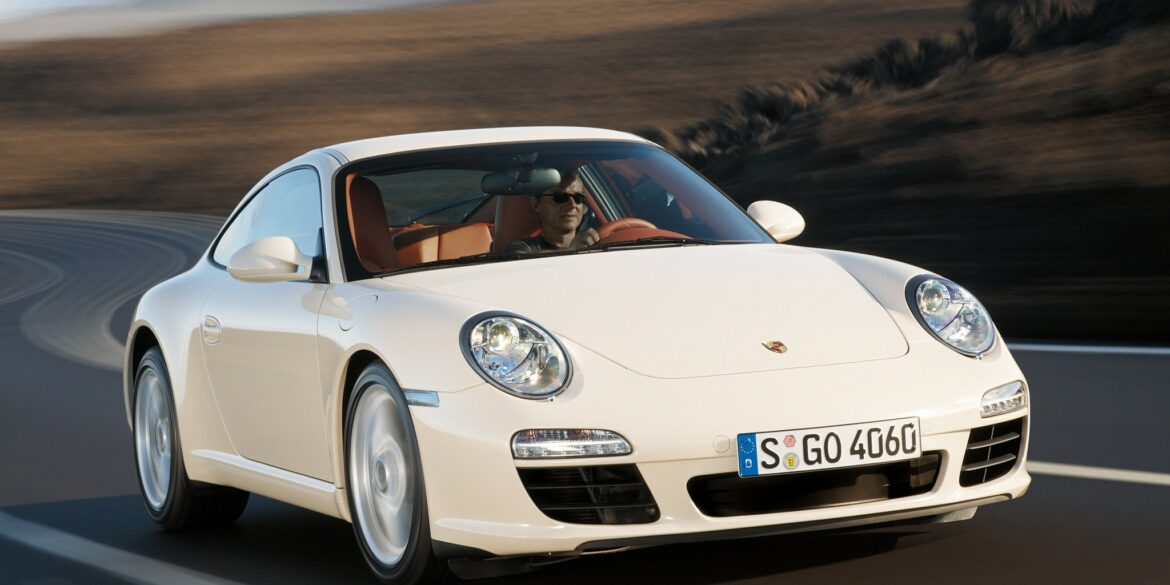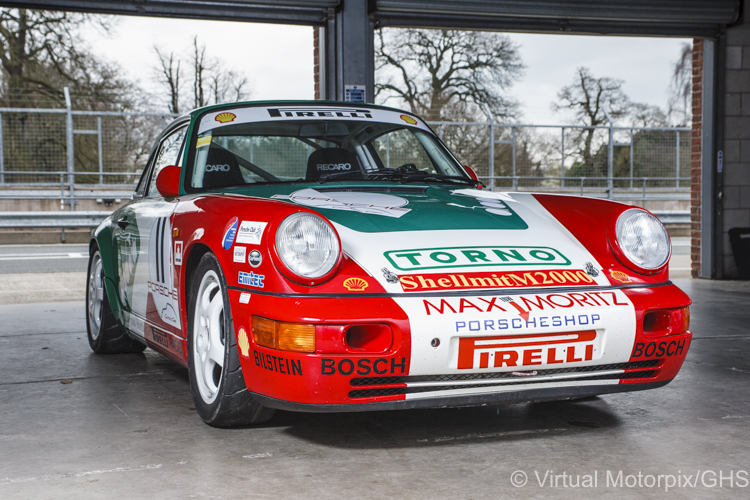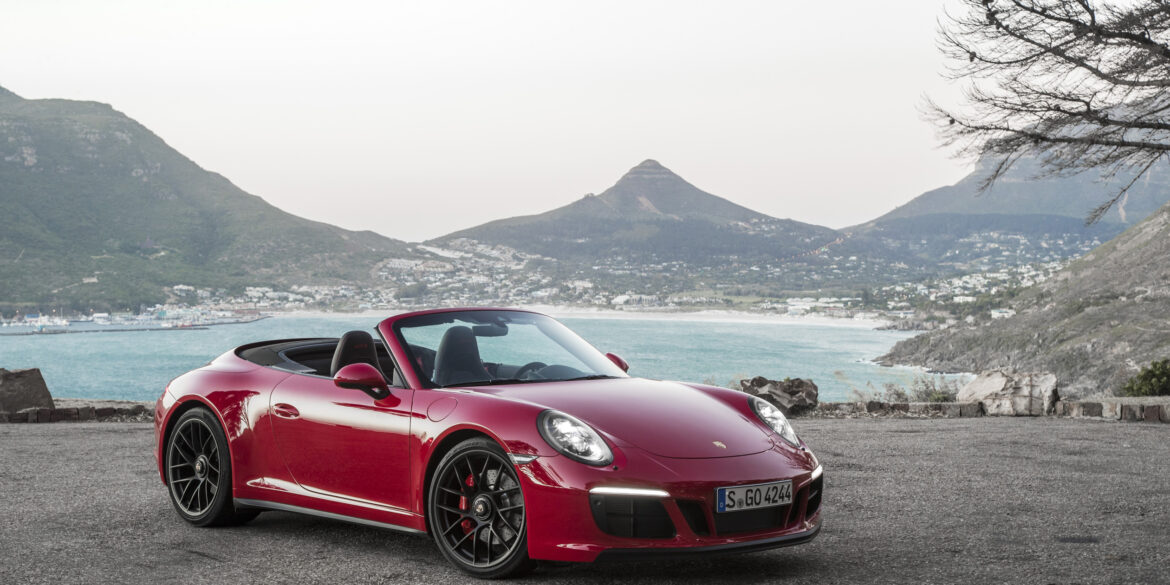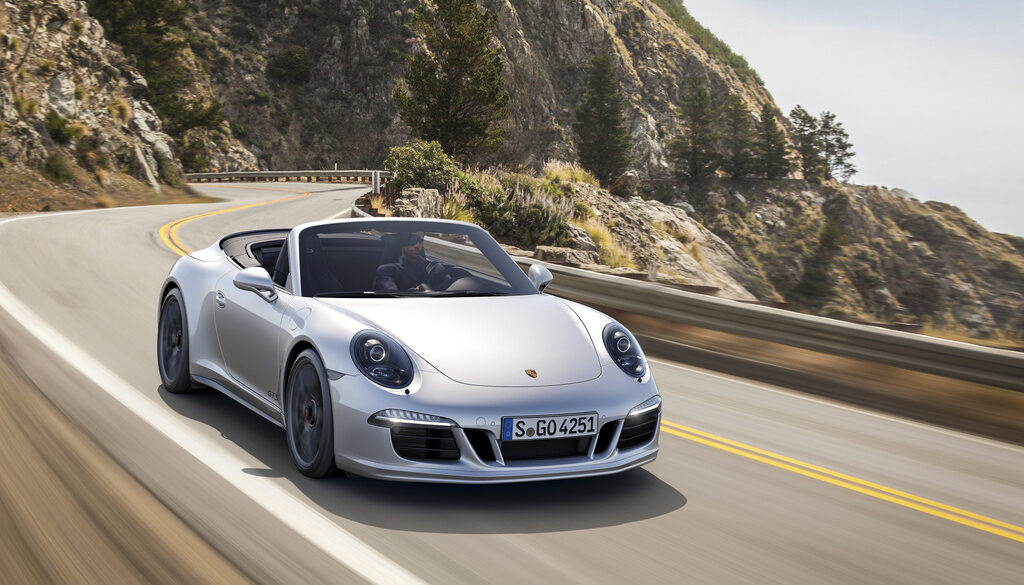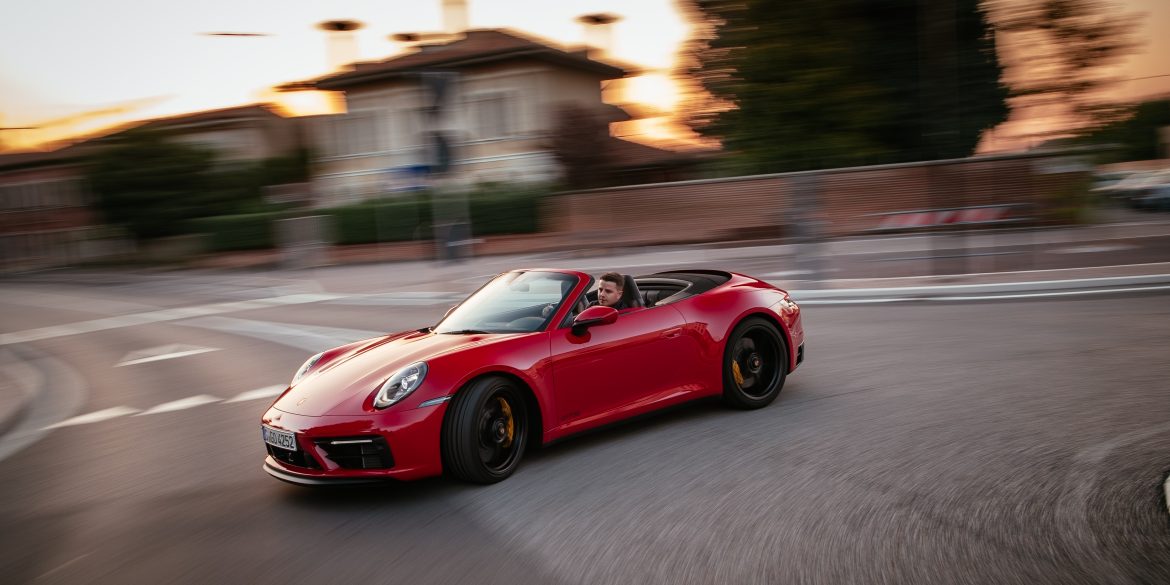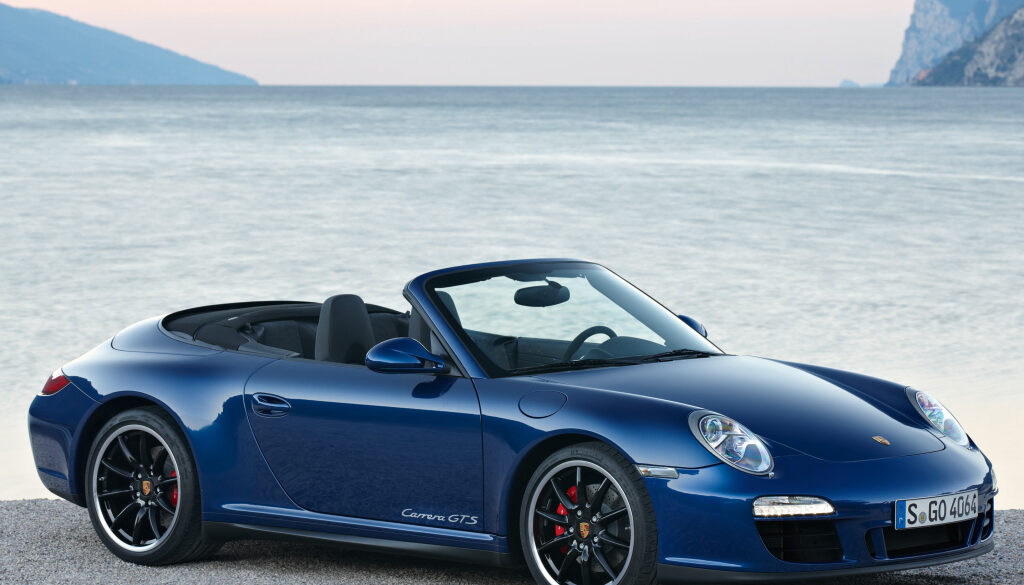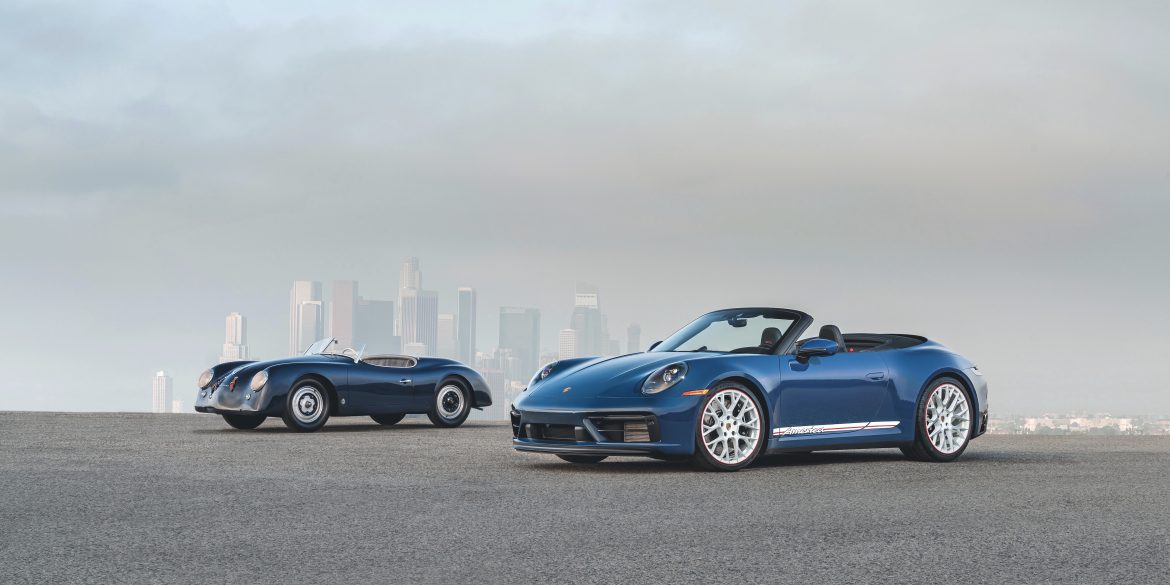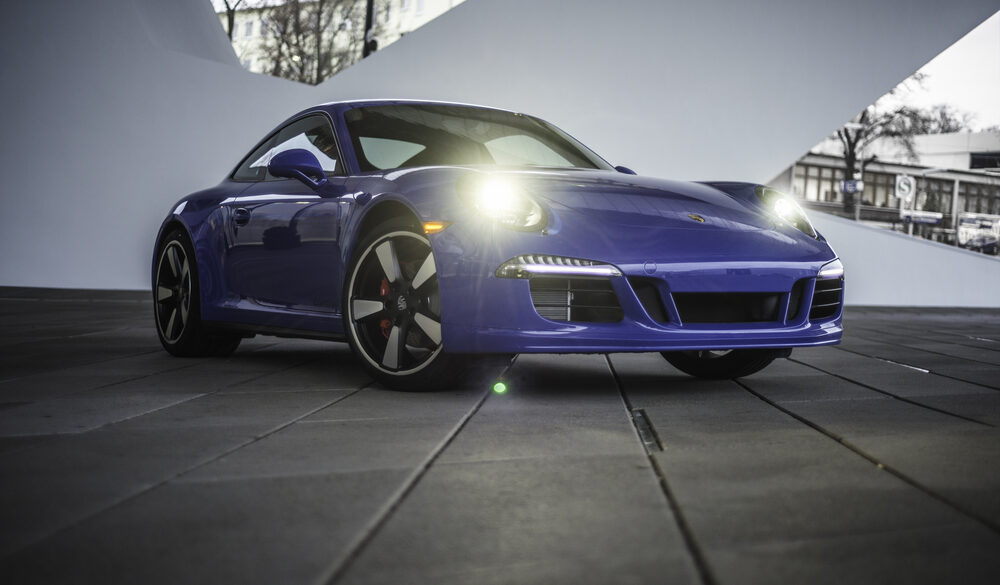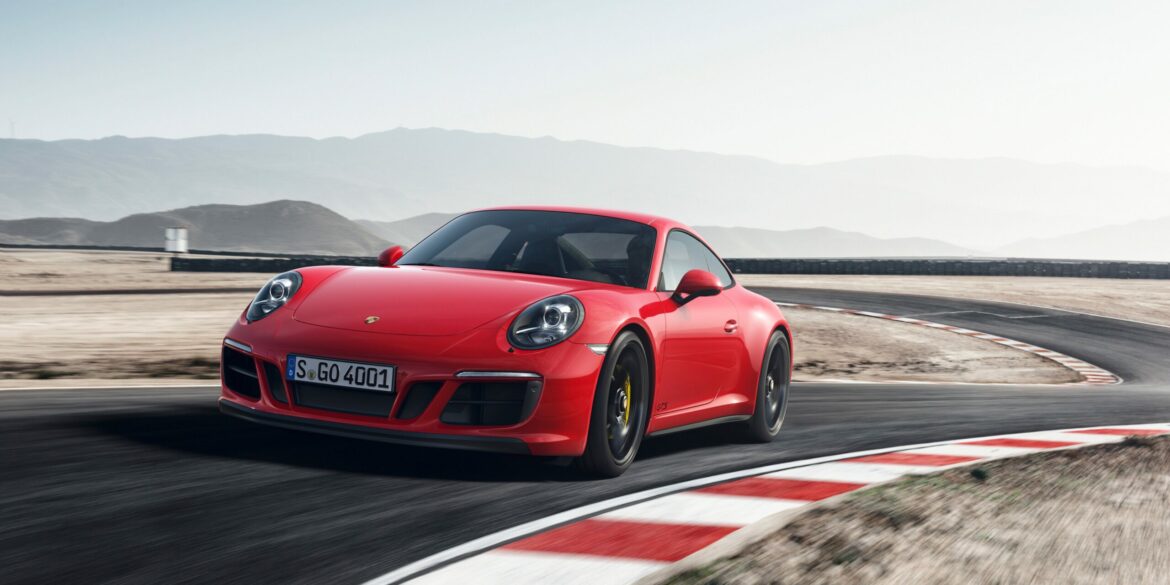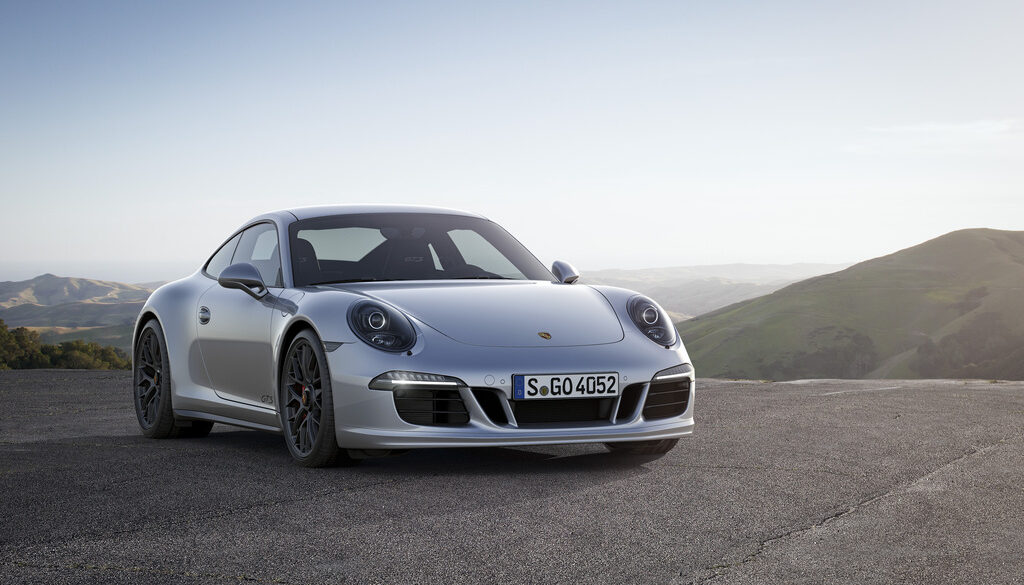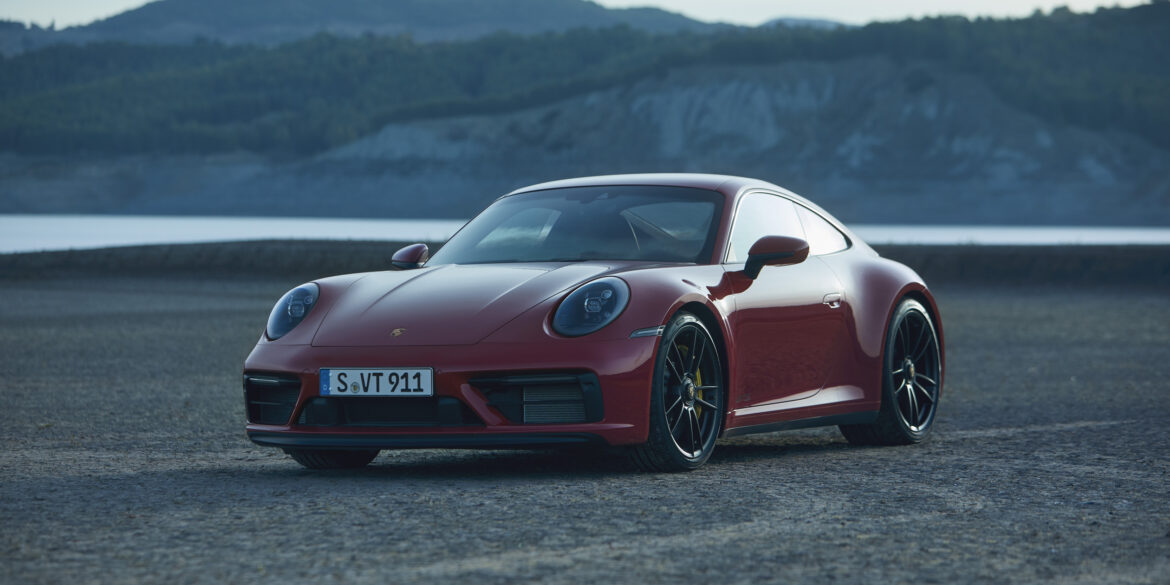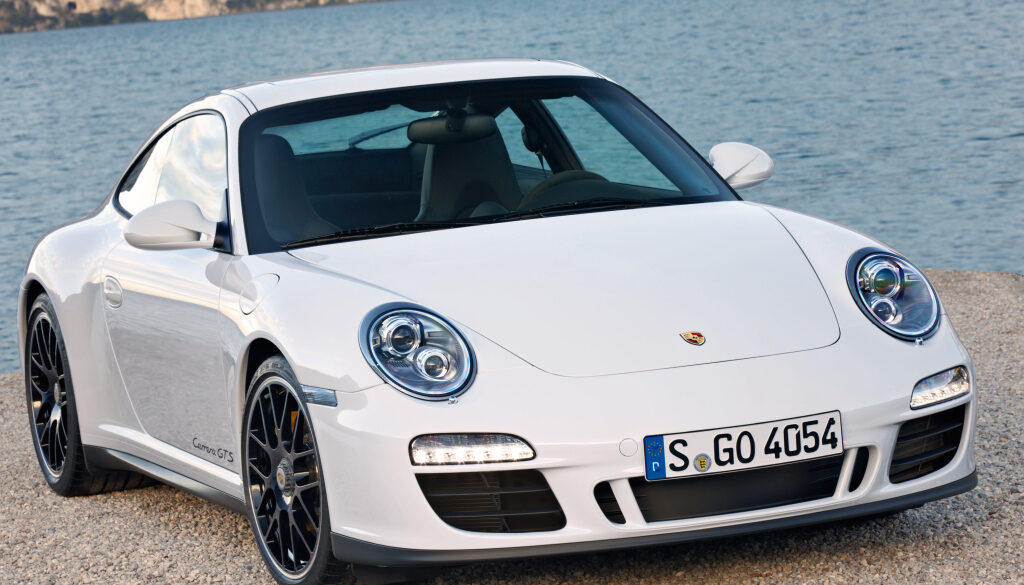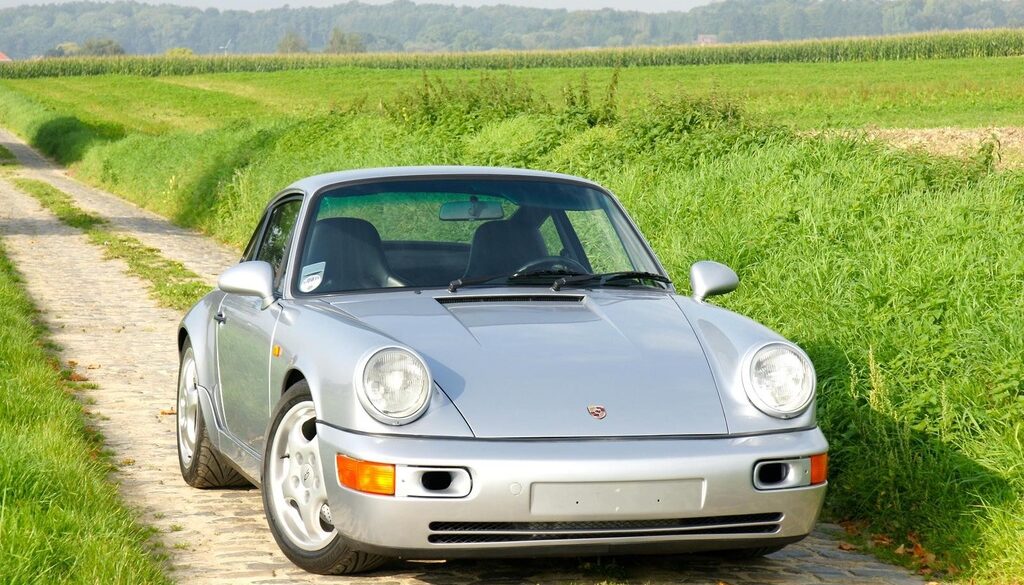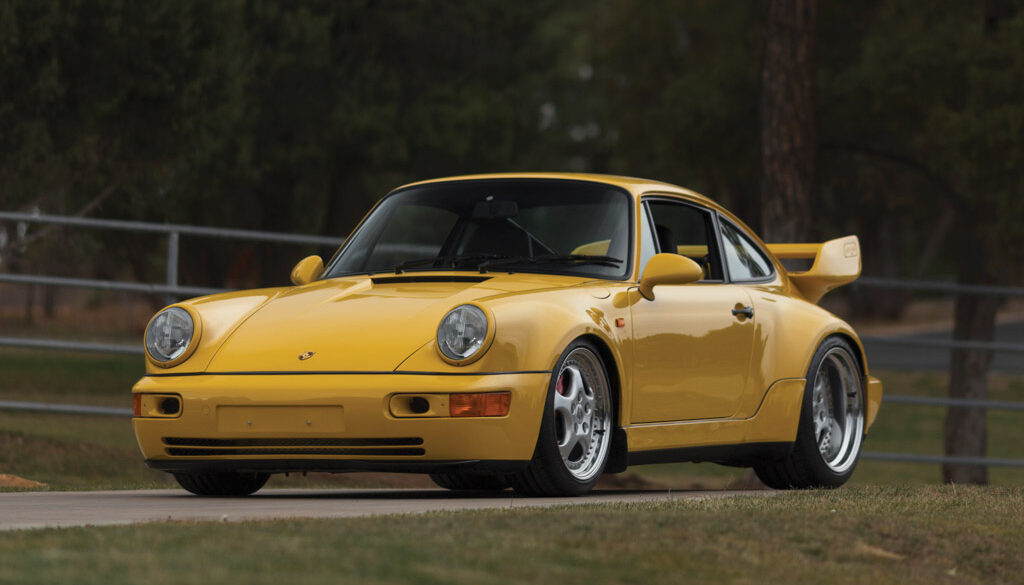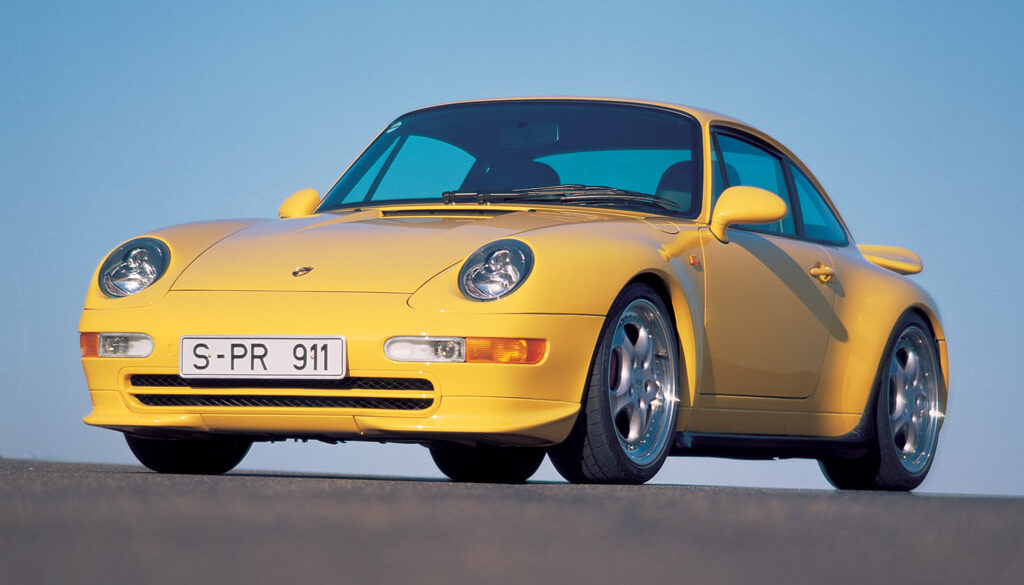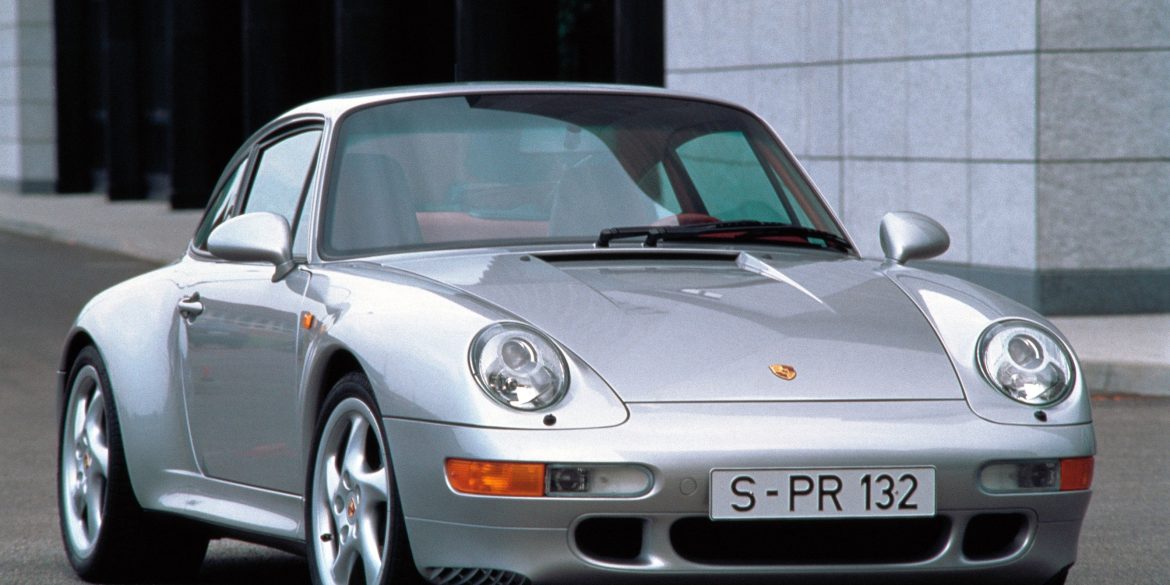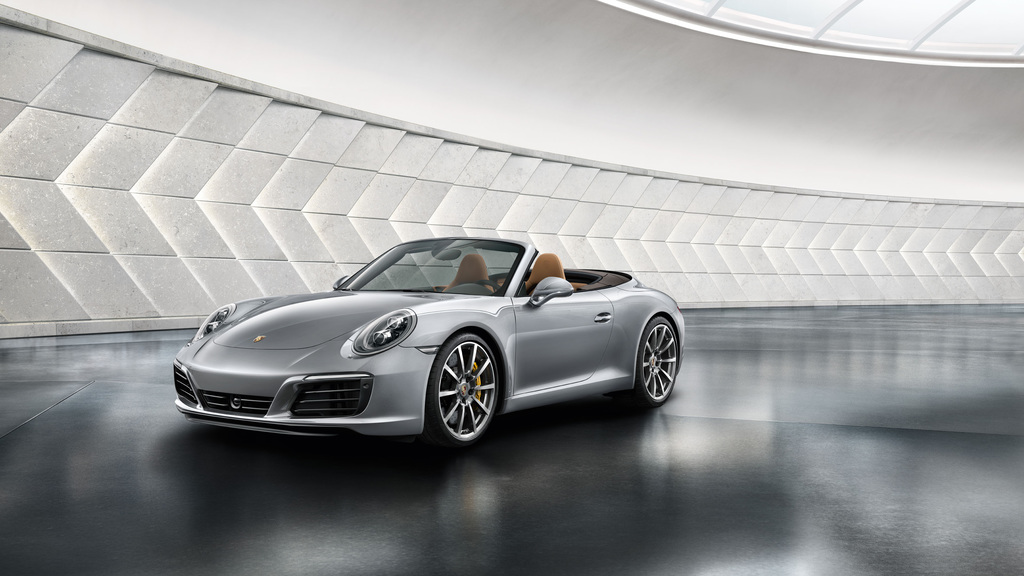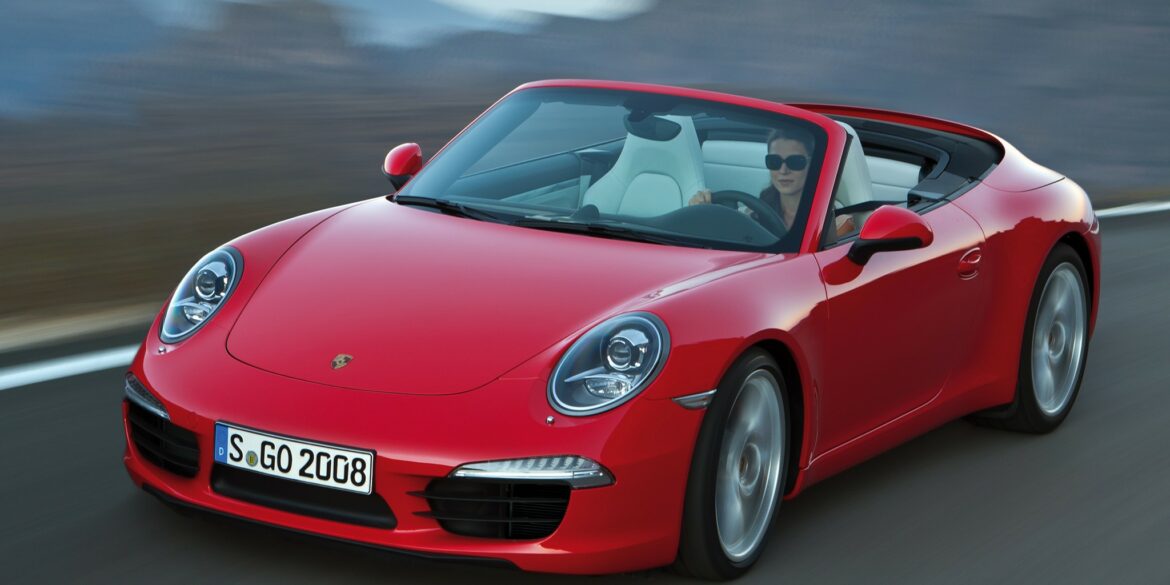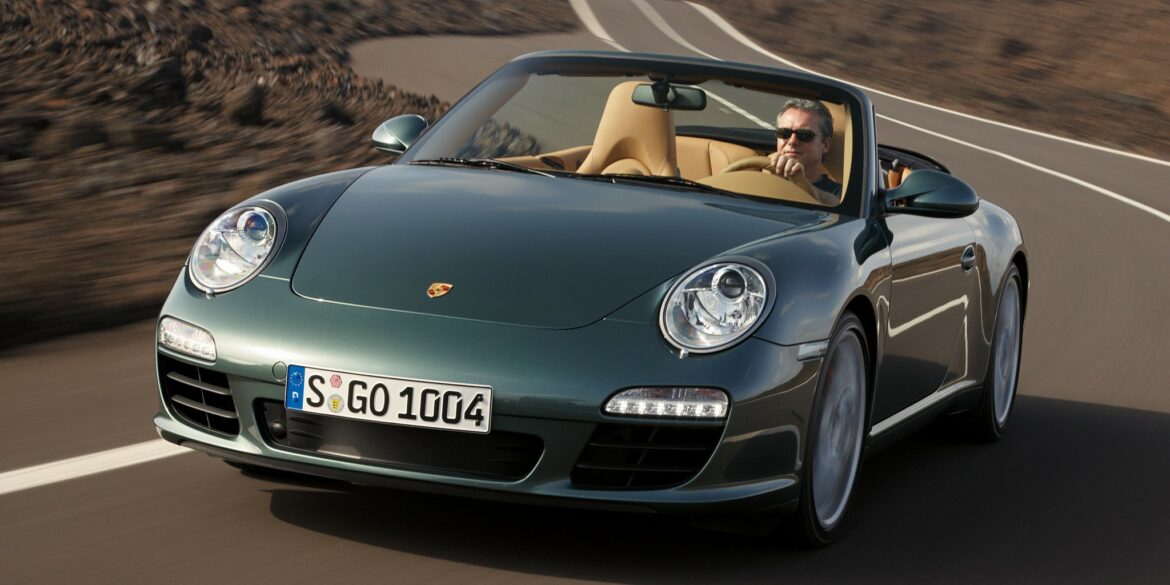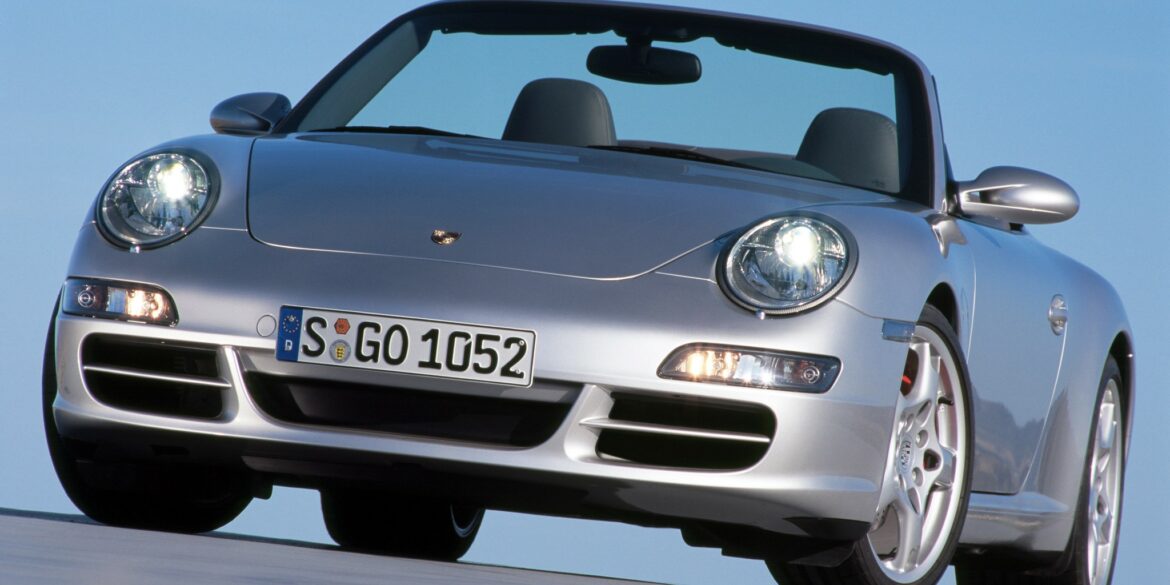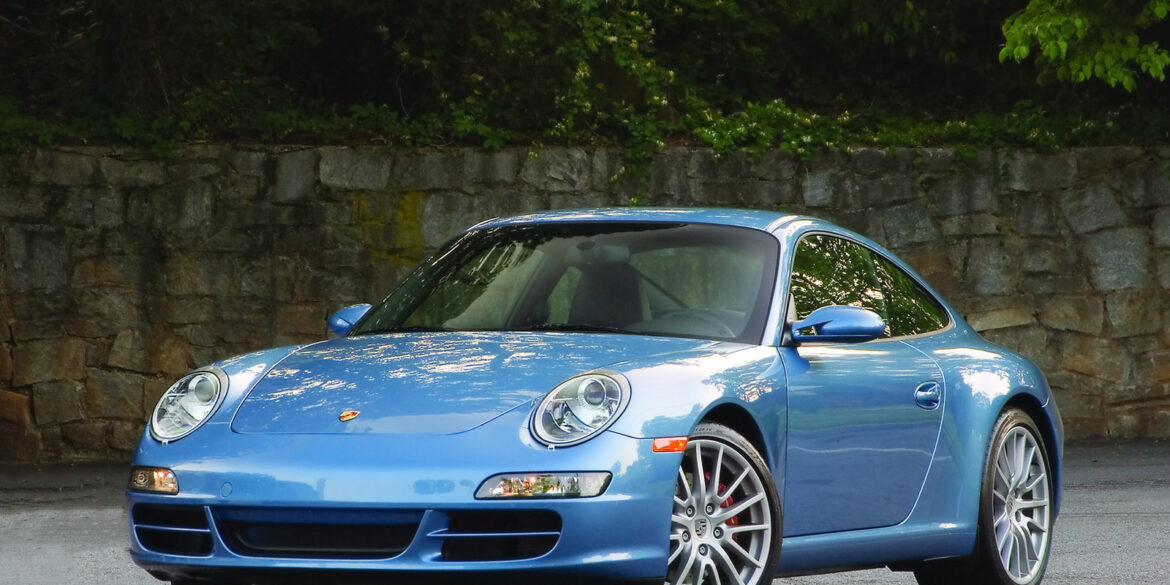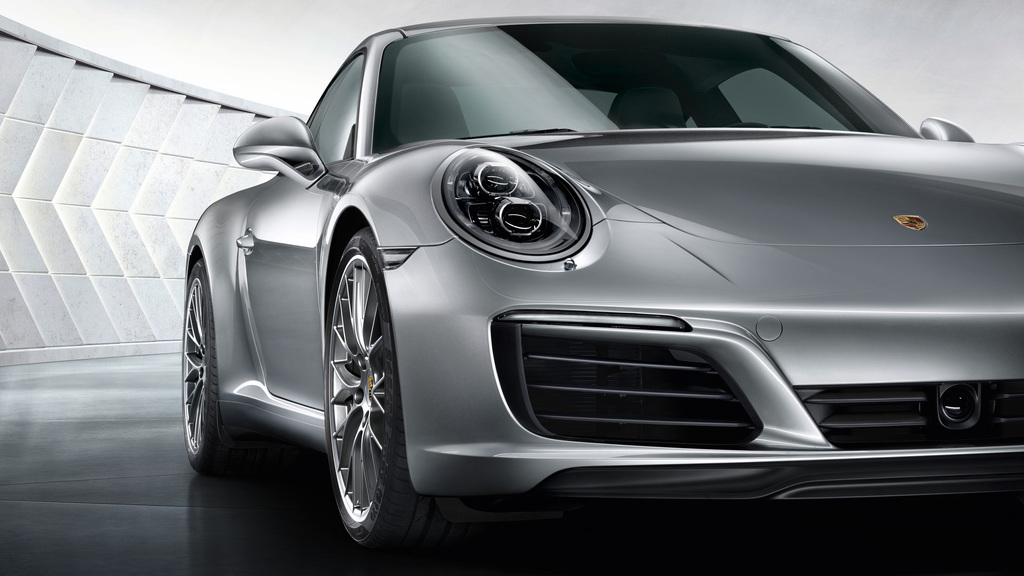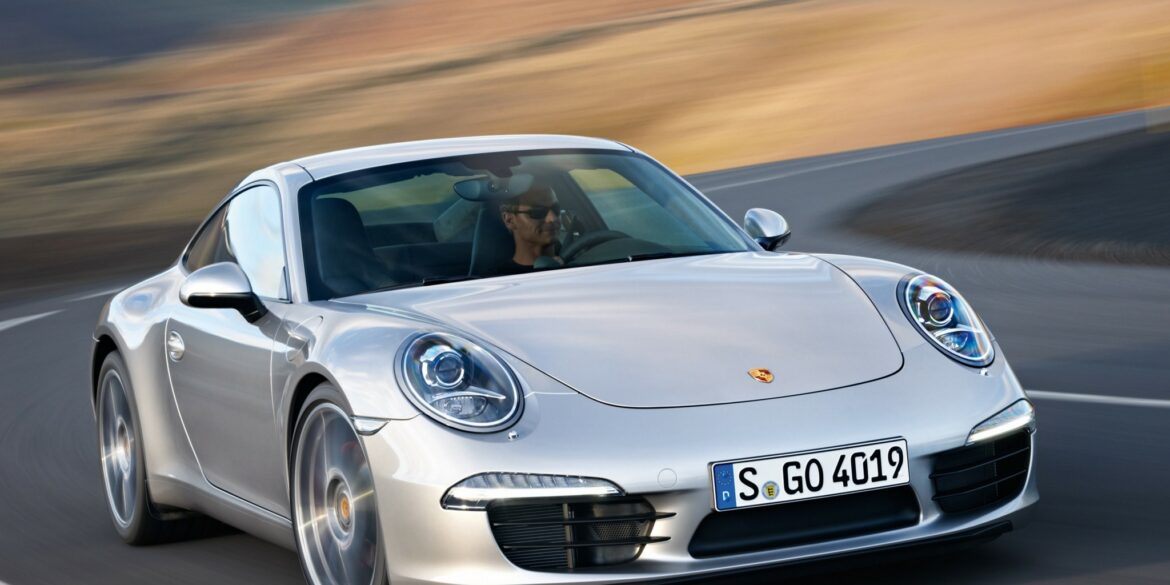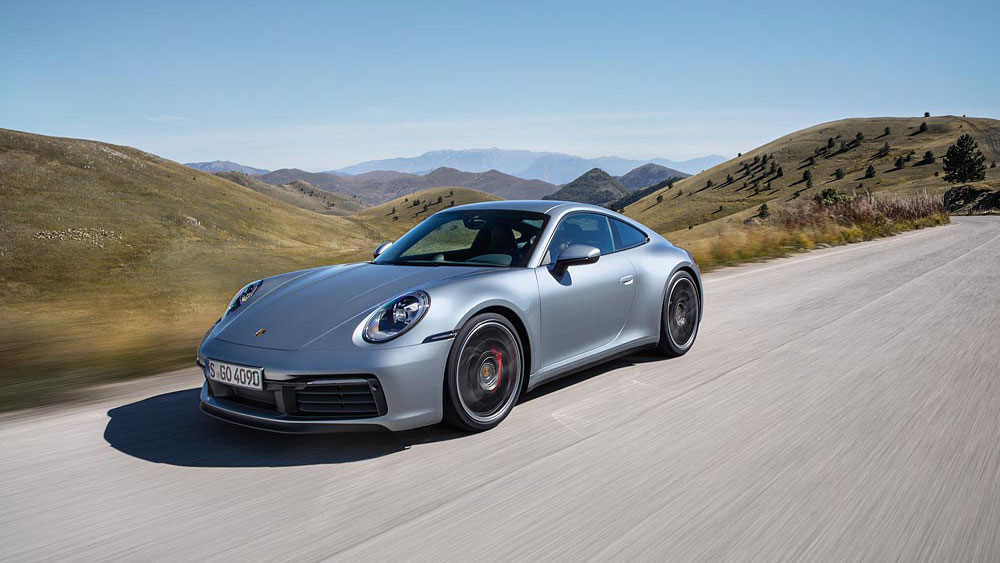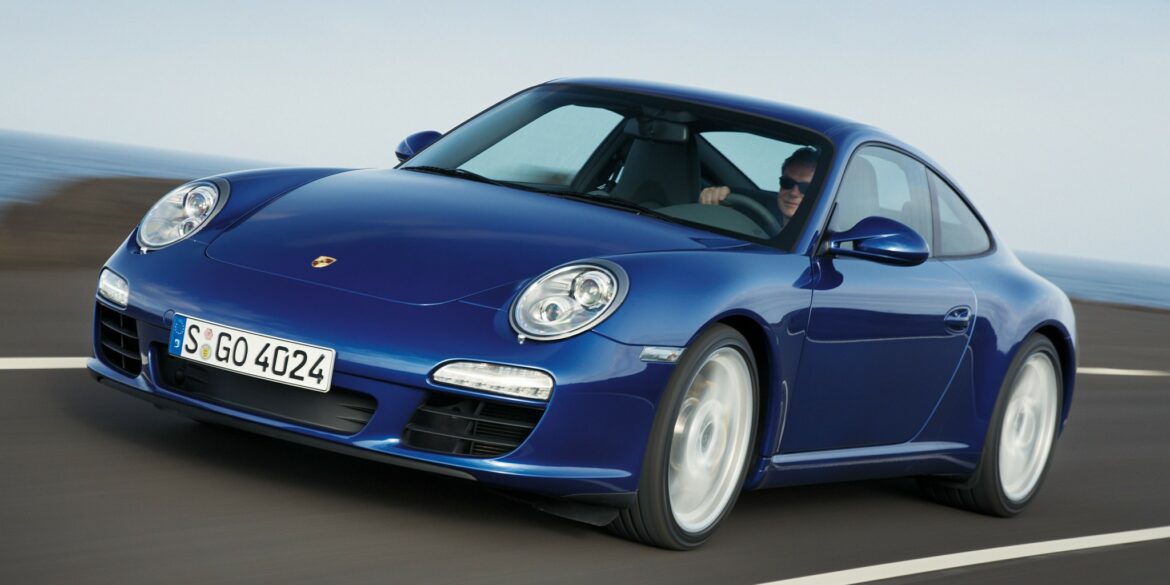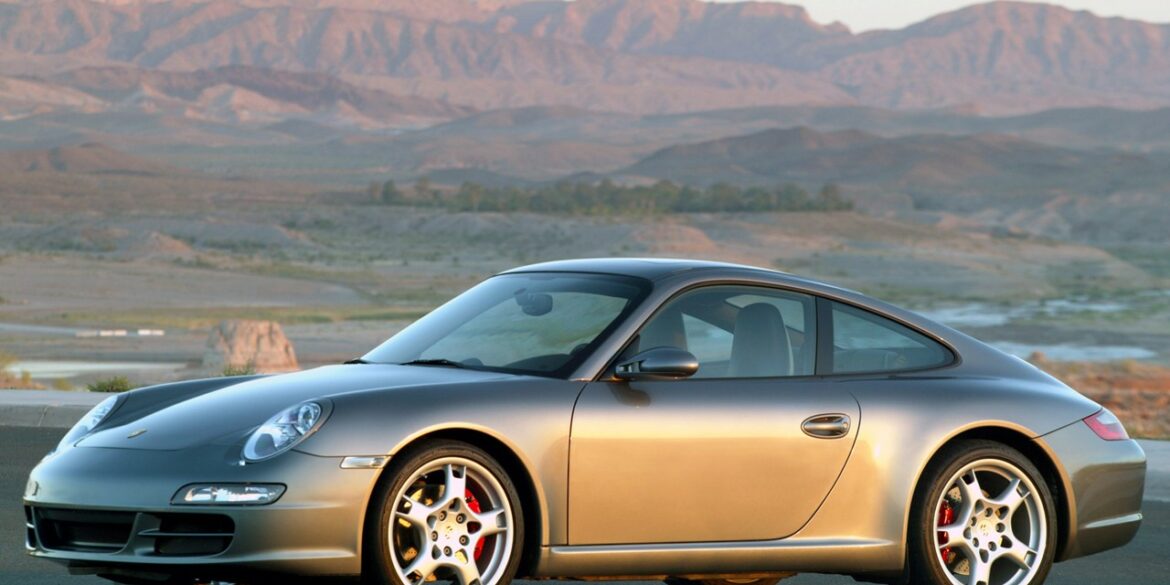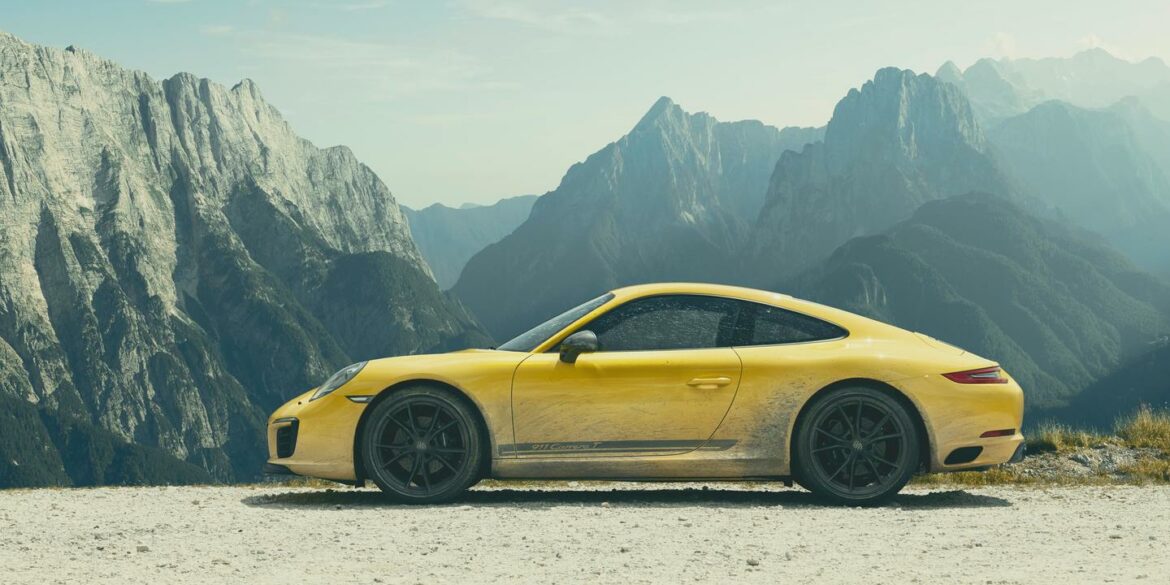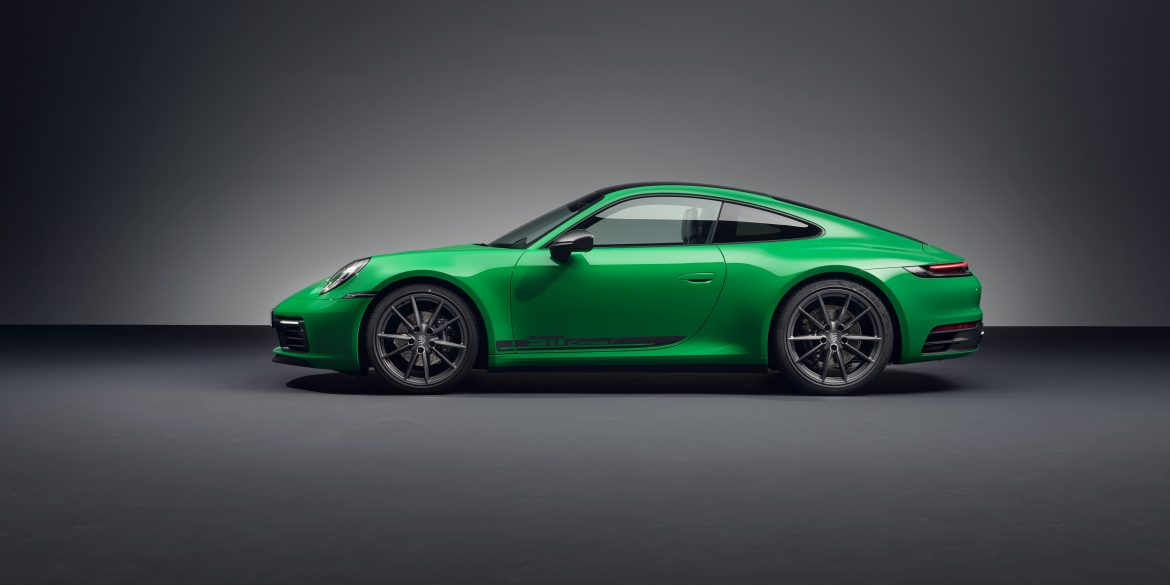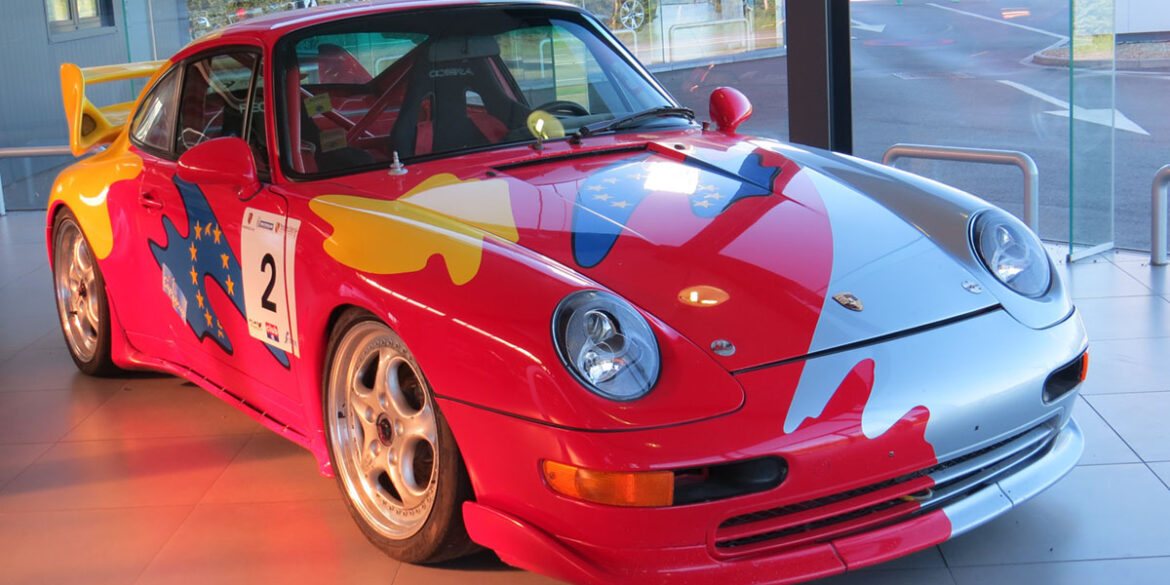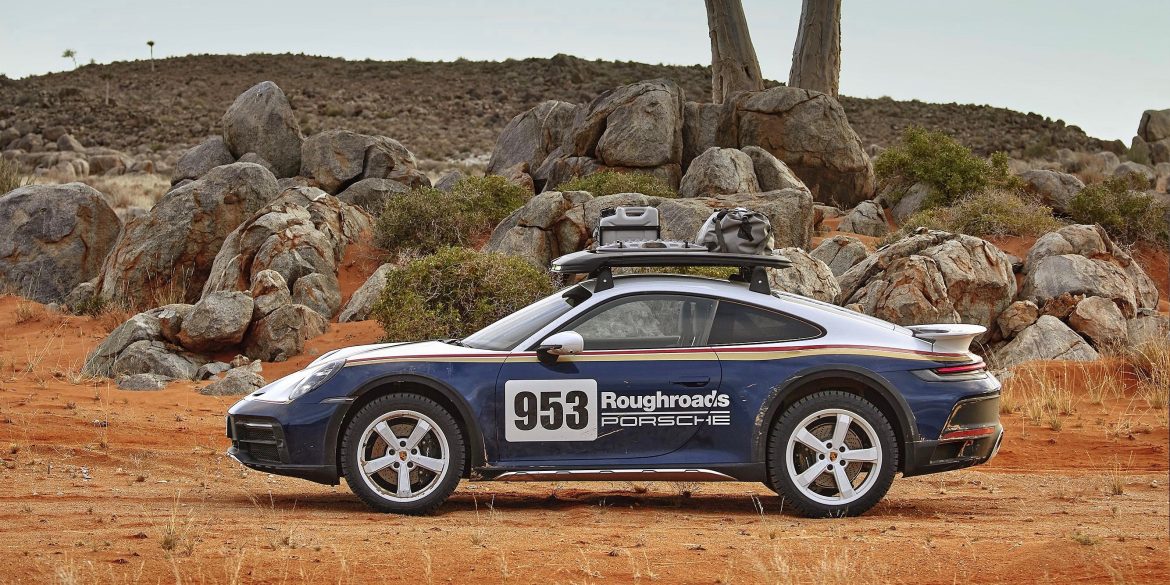In March 1993, Porsche presented the Porsche 911 anniversary model “30 years 911” at the Geneva Motor Show. Since then, the special model is also called “Jubi” for short. Under the Porsche internal code M096, there is essentially a Carrera 4 with the wide turbo body but without wings. The 964 anniversary edition could be ordered with exclusive interior design and numerous possibilities of customization. According to Porsche, the special model was limited to 911 vehicles and manufactured in the model years 1993 and 1994.
Essentially a Carrera 3.2 with a chopped, more steeply raked windscreen and hood, plus a stripped-out interior. Most had wide Turbo bodies. Porsche insisted that the simple hood was not designed to be 100 per cent watertight. The first Porsche 911 Speedster was built in 1989 and it was the last vehicle with the old 911 body. Three decades passed before the Speedster made a comeback. Had a 3.2 L Aircooled Flat 6 and 2274 were produced for the 1989 model year.
The 2014 50th Anniversary Edition 911 was built by Porsche to commemorate the 911’s birthday, 50 years after its production launch in 1964. In homage to 1963, the year the 911 debuted at the 1963 Frankfurt Motor Show, production was limited to 1,963 units. The 50th Anniversary uses the wider body from a Carrera 4S (but remains only rear-wheel-drive) and is lower than a standard Carrera by 10mm. The 20 inch-alloys are a modern take on the original Fuchs wheels, and the seats are finished in “Pepita” cloth. Includes Porsche Active Suspension Management (PASM), sports exhaust and powerkit tickled 430 hp flat six.
The American Roadster is essentially a turbo-bodied Carrera Cabriolet with Turbo suspension and brakes. Like the 356 America Roadster it was named after, the Type 964 America Roadster was a limited-edition, driver-focused convertible destined for the American market. Production for the America Roadster was limited at only 250 examples, and the model was only produced in 1992 and 1993. Its engine was a standard unit making 250 horsepower, but the special edition had the wide fender flares, suspension, brakes, and 17-inch Porsche Cup wheels of the 911 Turbo.
The Porsche 911 Black Edition was a limited production Carrera built at the end of the 997 generation. Based on the 3.6-litre 997.2 Carrera coupe and Cabriolet, the car was finished in plain black as standard, with Basalt Black Metallic as an option. The words ‘Black Edition’ are printed in black on the stainless steel door sill covers, and there’s a numbered plaque on the glovebox lid. 19-inch Turbo wheels were standard. Porsche built exactly 1,911 Black Editions, of which approximately 25 percent were intended for the U.S. market.
The 2016 Carrera and Boxster Black Editions add some extra niceties for a value-adjusted price. And as the names suggest, both cars come in any color scheme you want so long as it’s, yes, black on black. Or black on black on black in the case of the ragtops. Available in coupe and convertible forms, with rear- or all-wheel drive, each powered by the base 350-hp 3.4-liter flat-6 engine, the 911 Carrera Black Edition adds other design treats too.
Introduced in 1994 the Porsche 911 Cabriolet was more of a Grand Tourismo vehicle than a sports car. The 911 Cabrio featured the same cues as its coupe version, but with a few differences apart from the lack of a fixed roof, of course. The 3.6-liter engine was offered in two versions, with 275 hp and 285 hp. The latter featured the VarioCam system. Both versions were mated to either a 6-speed manual or a 4-speed automatic.
Introduced in late 1994 the standard 911 Carrera of the 993 generation was fitted with a development of the M64 3.6-liter flat six that had been found in the prior 964 generation. With a redesigned exhaust system and new hydraulic lifters, the engine produced 272 horsepower. For the 1996 model year, a Targa variant was introduced, and a variable intake runner system (called VarioRam) was added to the entire Carrera lineup, bumping horsepower to 285. Approximately 23,000 coupes were built, 15,500 cabriolets, and 4,500 Targa's, in both manual and automatic (Tiptronic) transmission. Overlapping with the last year of production, it was replaced by the 911 Carrera of the 996 generation for model year 1998.
In 2002, all of the standard models received a minor makeover in 2002 which included Turbo-style headlights, a freshly designed front clip and an increase in engine capacity to 3.6L along with a subsequent 20HP boost. The bodies were more rigid which further improved handling and safety and the lower, stiffer X74 suspension became available as a factory modification. From the outside, it was hard to notice the difference between the 1998 version and the facelifted model. The main difference was on the headlights. Including the Mk 1 cars, the 996 Carrera Coupe sold 46,317 units.
The 996 series was a monumental update to the 911 story. The Type 996 introduced water-cooled engines and it also ushered in a new body design. The roof line with a windscreen which is around five degrees flatter gives the side view a more fluid look. Gone was the "classic" 911 design, the entire main body now much sleeker. The flat six in the Carrera 996 was a newly-developed flat-six engine that offered 300 hp. It was mated as standard with a six-speed manual. A 5-speed automatic (Tiptronic) with manual override to shift gears was on the options list. As always, the Carrera 2 was rear-wheel-drive.
The base Carrera has essentially the same 3.6 L flat-6 engine that its predecessor, the Type 996 Carrera used, now good for 321 bhp @ 6800 rpm and with torque of 273 ft lbs @ 4250 rpm. The sprint from 0 to 60 mph is over in just 4.80 seconds and top speed is 177 mph. The quarter mile is over in a respectable 13.1 seconds. The 911 Carrera is now faster, more stable, more precise and forgiving, an altogether superior-make that more efficient-sports car than the 996.
Porsche added the rear wheel drive Carrera 2 variant to the range in 1990. It was developed alongside the 964 Carrera 4, Porsche waited a year to release the Carrera 2 as a 1990 model year car. Like the Carrera 4, the Carrera 2 was available as a coupé, Targa or Cabriolet. Think of the cabriolet as a C2 coupe but with a fabric roof and more fun and you are right on the money. It was popular amongst buyers, particularly in the United States, with a total of 11,013 units sold, making it the third most popular 964 model.
Porsche 911 Type 964 Carrera 2 'Works Turbo Look' Cabriolet was a special model in the 964 lineup. It gave buyers of the Carrera 2 Cab the great wide look of the Turbo cars and the Carrera 2 engine. The model was available as a 1992 and 1993 model year car (while some argue it was also available for a while in 1994). You get body shape of the 964 Turbo 3.3 without the huge rear spoiler. But this was more than just a design exercise, because the the Turbo-Look models also got the chassis and braking system from the Turbo 3.3 too.
Porsche added the rear wheel drive Carrera 2 variant to the range in 1990. It was developed alongside the 964 Carrera 4, Porsche waited a year to release the Carrera 2 as a 1990 model year car. Like the Carrera 4, the Carrera 2 was available as a coupé, Targa or Cabriolet. Overall, the Carrera 2 packed almost the same technical specifications as the Carrera 4 model. The engine was the same 3.6 liter unit which produced 250 horsepower and a maximum speed of 162 mph. Looked like C4 but was 200 lb lighter and more fun to drive.
Like the Carrera 4, the Carrera 2 was available as a coupé, Targa or Cabriolet. This was the last generation Targa with traditional removable Targa roof (till 991). It sold ok, with 3,534 units sold over its lifetime. The engine was the 3.6 liter unit which produced 250 horsepower and a maximum speed of 162 mph while the 0 to 60 mph acceleration was made in about 5.6 seconds. Performance was on par with the coupe and it is the looker in the 964 range.
With the 1993 Carrera 2 as the starting point, Porsche had to make at least 50 roadgoing cars in order to qualify this new model for the Carrera ADAC GT Cup, which served as the basis for a motor racing variant to come, the Carrera RSR 3.8. The RSR 3.8 was nothing short of an all-out race car that could be delivered to the track in a ‘just add driver’ form. The Porsche Carrera RSR 3.8 racked up a catalogue of impressive international race results right from the outset, winning overall at the Spa 24 Hours, Suzuka 1000km, and the 24 Hours of Interlagos.
The 993 Carrera 4, sold between 1995 and 1998, uses the same powerplant as the standard 993 Carrera, but puts power down to all four wheels through a 6-speed manual transmission. A “Carrera 4” badge on the tail, along with silver-painted brake calipers and clear front and side turn signals, help distinguish the all-wheel drive C4 from the C2 sibling. Approximately 4,700 coupes and 2,500 cabriolets were made. It was replaced by the Porsche 911 Carrera 4 (996 generation) in 1999.
Model year 1994. Carrera 4 Wide-Body for the U.S. Technically there is really no difference between the Carrera 4 Wide-Body and his RoW counterpart. At the front there are the for America usual black impact absorbers beside the fog lights, the frontfenders lack the side indicators, the rear bumper is equipped with the center piece with a small plate section and in the back window of a large third brake light is integrated. Significant differences, it is generally provided in the factory standard equipment.
The Carrera 4 Cabriolet gets that wonderful extra-wide body and an AWD system hooked up to its new turbocharged 3.0-liter flat-six engine. Additionally, the Carrera 4 Cabriolet gets a spate of new goodies, including a unique taillight section, and an updated infotainment system that brings the sports car’s connectivity to a whole new level. The open top Carrera 4 does a great job as an all-rounder, giving drivers the all-weather assurance of all-wheel drive and combining it with open top driving fun. Dynamically, it is up there with its coupe sibling.
The new Porsche 911 Carrera 4 unites the excellent performance and efficiency of the new generation of the 911 Carrera with the dynamic benefits of the latest version of the active all-wheel drive system PTM (Porsche Traction Management). The typical Porsche all-wheel drive with rear-focused layout in this latest 911 version guarantees maximum vehicle dynamics on a wide variety of road surfaces and in all weather conditions. The new 911 Carrera 4 models deliver traction and dynamic performance the power of four.
Features like Porsche’s active suspension and the new-for-992 “wet mode” are standard on the Carrera 4 variants, but the electronically controlled limited slip rear differential (standard on the 4S), as well as ceramic composite brakes (cast iron rotors are standard). The current 911 Carrera 4 Cabriolet is equipped with PASM (Porsche Active Suspension Management). The twin-turbo flat-six has 379 hp and 331 ft lbs of torque.
2,500 cabriolets were made in the 993 Carrera 4. The 993 Carrera 4, sold between 1995 and 1998, uses the same powerplant as the standard 993 Carrera, but puts power down to all four wheels through a 6-speed manual transmission. A “Carrera 4” badge on the tail, along with silver-painted brake calipers and clear front and side turn signals, help distinguish the all-wheel drive C4 from the C2 sibling.
Designed as a grand tourer, the Porsche Carrera 4 Cabriolet was the base all-wheel-drive version for the open-top 911 range in 2001. It offered enough comfort to be used as a daily driver, on all weather. The 996 Porsche was facelifted in 2002. Along with the coupe versions, the convertibles were reshaped also. There was not a big difference on the outside. It was the same sports-car and open-top grand tourer. The Carrera 4 Cabriolet, continued on through 2004, receiving the same updates as the Carrera, including the 3.6-liter engine.
The 996 Cabriolet was introduced in March 1998 at the Geneva Motor Show. The 996 Cabriolet was long ready (remember, it was tested already in 1995), but for marketing and production-related reasons it was launched in 1998 as a 1999 model. While the evolution with the 911 coupe was questionable from 993 to 996, the real evolution came with the cabriolet. In USA - the biggest market - 911 Cabriolets outsold the Coupés. The all-wheel-drive system provides between 5-40% of torque to the front wheels depending on the situation.
The 2009 Porsche 911 Carrera 4 Cabriolet shares the same internal 997 model designation as its Coupe siblings. It also shares the same essential all-wheel-drive architecture, interior appointments, suspensions and drivetrains. It is an open-top sports cars that deliver the same exhilarating acceleration and dynamic response as the coupes, regardless of weather or road conditions. The Carrera 4 Cabriolet boast a unique body over their all-wheel-drive powertrains with a wide-body design.
The Carrera 4 Cabriolet was released with the rest of the 4 and 4S models as 2006 model year cars. With a sure-footed, four-wheel drive powertrain as well as that "wide-body" stance, and with tops that open or close at the touch of a button, the Carrera 4 Cabriolet really started to make the case it could do it all. The wide look gave the 4 a widened track, larger wheels and tires and four-wheel-drive powertrain that gives more dynamic stability, especially in inclement weather conditions. Developed at the same time as the coupe.
The Type 964 911 first launch with an all wheel drive model. It was a serious investment by Porsche in updating the chassis and tech platform. The 964 Carrera 4 was powered by the M64/01 3.6 liter flat six engine, developing 250 bhp and 229 ft/lbs of torque. The objective of the C4’s all-wheel-drive system was not only to provide improved traction but also better handling, especially in the wet and on slippery surfaces. The system sends power front/back in a 31:69 ratio because a 50:50 split would have made the 964 feel like a front-wheel-drive car.
Thought it carries a similar design to the new 911, the Carrera 4 has its own unique features, the most obvious being an AWD system hooked up to its new turbocharged 3.0-liter flat-six engine. The C4 gets a spate of new goodies, including a unique taillight section, and an updated infotainment system that brings the sports car’s connectivity to a whole new level. Inside the new 911 Carrera 4, there are only a few changes, the most important is the new infotainment system. With 370 hp on tap from the direct-injection, twin-turbo flat-six and all-wheel drive putting all those ponies to the ground, the C4 is more than quick enough.
The 2013 Porsche Carrera 4 featured a 3.4-liter flat-six engine. It was mated as standard to a world's first seven-speed manual transmission. An automatic, PDK (dual-clutch) transmission was offered as an option. The Carrera 4 featured an all-wheel-drive torque distribution in the instrument cluster display. The most distinctive identifying feature of the 911 with all-wheel drive is still the wide rear section: compared to the two-wheel drive 911 Carrera models, the rear wheel housings 22 mm wider, and each of the rear tires is 10 mm wider.
The Carrera 4 is the base model 911, equipped with all-wheel drive. It starts at $109,850 for 2022, which is about $7,000 more than the standard rear-drive Carrera. Other than the additional all-wheel-drive system and the 150 odd pound increase in curb weight, the Carrera 4 is identical to its rear-drive sibling. It gets the same 379-hp, twin-turbo 3.0-liter flat-six engine. The twin-turbocharged 3.0-liter flat-six has 379 hp.
Since 1989, the rear-wheel-drive Carrera has always been accompanied by an all-wheel-drive Carrera 4, and the 996 was no different. Overlapping with the last year Carrera 993'S, the 996 Carrera 4 represented two major changes for the venerable 911 lineage: a water-cooled flat-6 engine replaced the air-cooled engine used in the previous 911 model, and the body shell received its first major re-design. Engine was 3.4 L and power was 296 hp featuring a change to an "integrated dry sump" design and variable valve timing.
Most importantly, the refreshed Carrera 4 and 4S lose the old multi-plate, viscous all-wheel-drive system in favor of the electronically controlled system from the 911 Turbo. The old system could send between 5 and 40 percent of engine torque to the front wheels once it had detected wheelspin. The new electronic system can anticipate traction losses and shift up to 100 percent of engine torque fore or aft. Porsche says the new AWD system reacts faster to traction changes, and doesn’t make the Carrera 4 significantly heavier.
The 997 Carrera 4 was the all-wheel-drive version of the standard 997 Carrera and it arrived as a 2006 model year car (along with the 4S models). The 997.1 Carrera 4 had a3.6 L Watercooled Flat 6 (M96/05) engine that was good for 321 bhp @ 6800 rpm and 273 ft lbs @ 4250 rpm. It had a sub 5 second 0 - 60 mph hour time and a top speed of 174 mph. The transmission (six-speed manual or five-speed Tiptronic) feeds a forward propshaft that mates to a viscous coupling unit with a front differential.
The GTS 4 Cabriolet reminds us how awesome Porsche cars are. This is a 911 that can be used as a regular car, an all weather convertible 911 that does everything really well. And when you want to push hard, the car transforms into a true sports car, a car that no enthusiast will ever complain about. Drop-top 911s have always played a supporting role to the fixed roof versions, but in GTS specification the Cabriolet is now better than ever.
So what else do you get when you buy a 991 Carrera 4 GTS Cabriolet? First of all you get a 30 hp bump over the Carrera 4S to 430 hp from the 3.8L naturally aspirated flat-six. You get forged centre-lock black 20-inch wheels, dynamic engine mounts, the Sports Chrono Package, PASM adaptive damping with a lowered ride height, an interior swathed in Alcantara, a sinister front fascia with black intakes and custom rear apron with black tailpipes that broadcast the goods through an uber-nasty sport exhaust system. Other trim details include black lettering and smoked headlights.
Porsche has also decided to gift the GTS a more distinct and dynamic personality that can’t be duplicated via the Carrera S’s options list (even if you could get the engine, which you cannot). The downside is that the price has gone up too and ticking a few more options boxes can get the Carrera 4 GTS Cabriolet into 911 Turbo territory price-wise. In the engine department, the 3-litre twin turbo flat six develop 473 bhp and 420 ft lbs.
The Cabriolet version of the new Porsche 911 Carrera 4 GTS is just as potent as its coupe sibling. It combines a 408 hp 3.8-litre flat six engine with intelligent all-wheel drive that delivers a further exhilarating dimension to the dynamics of the iconic rear-engined sports car. The 911 was first offered with four-wheel drive in 1989 and the drivetrain has been a popular option ever since. Now, the 911 Carrera 4 GTS broadens customer choice in 2011, building on the success of the two-wheel drive Carrera GTS that went on sale in December last year. Carrera 4 GTS power unit is the 3.8-litre flat six with power kit.
Ultimately, the Carrera 4 GTS is the ideal all-round 911. Its bag of tricks gives you accessible, astonishing performance on the right road – but its price tag and comfort levels make it a little more acceptable for everyday use than a GT2, GT3 or Turbo. The GTS scores particularly well on the practicality to performance ratio. Its rear seats can accommodate people and its all-wheel drive system means you can really use this car all-year round. The GTS-spec 3.0-litre flat-six develops 30bhp more than a Carrera S (at 444bhp) and 37lb ft more torque (at 406lb ft).
With all-wheel drive and all the GTS goodies, the Carrera 4 GTS sits in a very practical place in the Porsche 911 lineup. The 4 GTS is a Carrera 4S with all the items Porsche thinks you should have at a price that is less than choosing them yourself. Standard equipment on the GTS that is normally optional on the Carrera S includes the Sport Chrono Package, Sport Exhaust, bi-xenon lights with PDLS (Porsche Dynamic Lighting System) and PASM (Porsche Active Suspension Management). Inside, four-way adjustable sport seats are standard.
The engine is the same 3.0-litre, twin-turbocharged flat-six petrol engine as in the 911 Carrera S, but it has been fettled to produce 473 bhp. The GTS also has a bespoke suspension set-up that sits 10mm lower than the standard 911, and that's true no matter whether you choose two- or four-wheel drive. Most of the time, there's absolutely no difference between the standard GTS and the all-wheel-drive version. But when you need it, the AWD Carrera 4 GTS will save you.
The new Porsche 911 Carrera 4 GTS combines a 408 hp 3.8-litre flat six engine with intelligent all-wheel drive that delivers a further exhilarating dimension to the dynamics of the iconic rear-engined sports car. The 911 was first offered with four-wheel drive in 1989 and the drivetrain has been a popular option ever since. Now, the 911 Carrera 4 GTS broadens customer choice in 2011, building on the success of the two-wheel drive Carrera GTS that went on sale in December last year. The 911 Carrera 4 GTS power unit has its origins in the 3.8-litre, six-cylinder from the Carrera S, with the power kit added.
The rarest 964 RS variant was the awesome 964 C4 Lightweight. Known as the 964 Leichtbau it made use of surplus parts from 953 Paris-Dakar project. A handful of specially prepared lightweight 911s were fabricated by the Porsche factory and called the Carrera 4 RS Lightweight. Carrera RS Body with 959-like AWD wizardry and more power. Lightweight masterpiece. Used parts from 953 Paris-Dakar project. The 964 C4 Lightweight was powered by the same 3.6 liter flat six as the normal 964 RS, but was fettled to produce 300 hp.
In 1999, Porsche celebrated the turn of the century with a special edition – the 996 "Millennium Edition". The 911 Millennium edition was based on the Carrera 4 coupé and was pretty rare, with only 911 cars made. Based on the Carrera 4, the "Millennium Edition" was limited to 911 examples and was based exclusively on the wide bodied Carrera 4. This special edition was finished in Violet Chromaflair paint, which, depending on the light changes from dark violet to light green and is quite spectacular to look at. It also got a caramel-colored leather interior and polished "turbo-twist" wheels.
This was the last generation Targa with traditional removable Targa roof (till 991). The Carrera 4 Targa outsold the Carrera 2 Targa by 2x, making the 4 Targa much rarer and more collectible. In all, only 1,329 units were made. Overall, the Carrera 4 packed almost the same technical specifications as the Carrera 2 model. The Targa top was quite a project to take off (compared to the simple and fast cabriolet process) so be prepared to garage it all the time or spend 20 minutes every time you want to enjoy open top fun.
To commemorate the 40th year of 911 production, Porsche built 1963 of the 40th Anniversary Porsche 911 Carrera for model year 2004. Painted only in a GT Silver Metallic finish, with a dark gray leather interior, the 40th Anniversary (or 40 Jahre in German) took the Base Model 996 Carrera and added the front fascia of the 996 Turbo, side skirts and luxury features for the cabin – including a luggage set that matched the special grey leather interior. Mechanically, the X51 Powerkit increases power to 341hp, combined with rear wheels power wheels, a standard 6-speed manual and sport suspension and limited-slip differential included.
After introducing the Porsche Carrera S with the body carried-over from the Turbo version, customers asked about an all-wheel-drive version for it. The 993 Carrera 4S was sold between 1995 to 1998. Much like the 993 Carrera S, the 993 Carrera 4S takes the 993 Carrera 4 powertrain and fits it into the widebody 993 Turbo shell, sporting 18" alloy wheels. The engine was the same 3.6-liter naturally aspirated, but it was offered in the higher power output of 285 hp. As with the Carrera 4, it was only available with a 6-speed manual transmission. The 4S did not have a cabriolet version.
A new turbo flat-six engine is the headline news. Still super fast and surefooted all year round. The revised four-wheel-drive 911 makes the car's appeal on year-round, any-occasion usability even stronger. The 911 Carrera 4S receives a series of subtle styling updates as part of a reasonably comprehensive mid-life facelift. Included is a redesigned front bumper sporting active air ducts that open and close to channel air to the front-mounted radiators dependent on throttle load, revised headlights with altered internal graphics, larger exterior mirror housings and new door handles.
The 2012 Carrera 4S Cabriolet had the same wider rear track when compared to the non-S version of the vehicle. It wasn't something everyone would notice, but the difference was there for a reason, and that reason was the wider tires installed. From behind, a rear red light-strip united the LED taillights. Inside the Carrera 4S Cabriolet, there were some luxury features. The leather-covered sport-bucket seats were covered in leather. Even the rear, unusable, seats were wrapped in leather. The center console was higher to give a sense of a single-seat racing roadster.
Top down summertime driving in the current 911 Carrera 4S Cabriolet is about as good as it gets. It checks all of the right boxes, as while it has matured into almost a GT-type car; it still boasts more performance than ever. Like the rest of Carrera S models, the Carrera 4S Cabriolet is powered by the same 3.0-liter twin-turbo flat-six that makes 443 horsepower and 390 ft lbs of torque. It comes standard with the same eight-speed twin-clutch automatic transmission.
The 996 Carrera 4S Cabriolet is the convertible version of the slightly-uprated 996 Carrera 4. Introduced a year after the 996 C4S Coupe. The Carrera 4S Cabriolet was introduced in the lineup with the new engine and the Turbo bodywork. The cabriolet version of the Carrera 4S paired the aggressive bodywork and suspension of the Turbo with the base Carrera 4 drivetrain, though it didn't get the Turbo's huge rear wing. The three-layer canvas-top was powered and it needed 20 seconds to completely retract or cover the car, at speeds up to 50 kph (31 mph). For winter, the car featured an aluminum hard-top.
In the case of the 911 Carrera 4S Cabriolet that begins with a larger, more potent six-cylinder engine. The Carrera 4S is powered by a 3.8-liter flat six that produces 355 horsepower and 295 lb.-ft. of torque. The roughly ten percent increase in power translates to improved acceleration and higher top track speed. The 911 Carrera 4S Cabriolet with the six-speed manual gearbox races from a stop to 60 mph in only 4.7 seconds, topping out at the track at 185 mph. When carrying the optional Tiptronic S transmission, the zero to 60 mph sprint takes a mere 4.5 seconds.
While the 997 Carrera 4S coupe sold a healthy 15,056 units between 2006 and 2008, the equally exciting Carrera 4S Cabriolet sold 12,587 units, making it a pretty popular 997 model. The reason is pretty simple. It had a gorgeous wide-body stance, all-wheel drive traction and that potent 3.8 L Flat 6 that was good for 350 bhp and 295 ft lbs of torque. The first convertible 911 that was as good a performer as it coupe siblings with the added benefit of open top driving in the summer with the comfort of being a great daily driver all year round.
The new downsized flat-six gets forced induction, more power and greater efficiency, just like in the basic refreshed 911 Carrera, this time mated to a four-wheel-drive system nicked wholesale from the Turbo. Apparently one in three 911 buyers opt for a four-wheel-drive variant, so this is an important car to get right. The 3.0-liter twin-turbo flat-six in the 911 Carrera 4S is good for 414hp and 368 ft lbs of torque, helping it get from 0 to 62 mph in 4.2 sec with a manual, 4.0 seconds with the PDK and 3.6 sec with the PDK and optional Sport Chrono pack.
The new all-wheel drive 911 is being launched on the market in four versions – as the 911 Carrera 4 and 911 Carrera 4S and each as Coupé and Cabriolet. The Coupé and Cabriolet of the 911 Carrera 4 S each have a 3.8-litre rear-mounted boxer engine that produces 400 hp (294 kW); this enables acceleration to 100 km/h in 4.1 seconds (Cabriolet: 4.3 seconds) and a top speed of 299 km/h (Cabriolet: 296 km/h) with a suitable equipment configuration. Fuel consumption values with PDK are 9.1 l/100 km (CO2 215 g/km) for the Coupé and 9.2 l/100 km (CO2 217 g/km) for the Cabriolet.
The perfect daily driving sports car with an all-weather, remarkably high-performance envelope. Like the rest of Carrera S models, the Carrera 4S is powered by the same 3.0-liter twin-turbo flat-six that makes 443 horsepower and 390 lb-ft of torque. It also comes standard with the same eight-speed twin-clutch automatic transmission with the same gear ratios, except the 4S with an added clutch and differential up front.
In 2002, the entire generation of the 996 was facelifted. The Carrera 4S Cabriolet was introduced in the lineup with the new engine and the Turbo bodywork. Many publications called the Carrera 4S the sweet spot in the 911 lineup when it was introduced, providing more performance than the base car without the exorbitant pricing of a Turbo or GT2. The Carrera 4S paired the aggressive bodywork and suspension of the Turbo with the base Carrera 4 drivetrain, though it didn't get the Turbo's huge rear wing. It’s easily identified by “Carrera 4S” badging and a large reflective strip on the rear end, spanning the gap between the taillights.
For 2009, engine power is distributed to all four wheels via the same electronically controlled Porsche Traction Management system found previously only on the Porsche Turbo. The electronic controls respond to driving conditions even more instantaneously than the previously used hydraulically activated all-wheel drive system. The Carrera 4S model, with a 3.8-litre engine developing 355 bhp, can go from 0 to 60 mph in 4.5 seconds and has a top speed of 185 mph.
Along with its sibling Carrera 4, the 2005 Carrera 4S offered an all-wheel-drive system for the Porsche 911, but unlike the 4, the 4S gets the Carrera S' more powerful engine and it turns out that makes a big difference. The Carrera 4S was the more powerful and more dynamic version of the 997 Carrera 4 and an overall great sports car, especially for those in colder climates who need the safety of all-wheel traction. All rounder that fits nicely in the 911 lineup as perhaps the most practical.
The cylinder number and position (six, horizontal) remained the same as before, but the displacement has been reduced to 3.0 liters (from 3.4 liters) and a pair of turbos has been strapped on the engine. And thanks to the force-feeding’s high potential, the same 3.0-liter unit is used for the Carrera S as well (instead of the 3.8-liter flat-six). As a result, the power figures in the Carrera 2 Cabriolet gained 20 hp and some 40 lb-ft of torque vs the prior generation. More importantly, the turbocharging makes the Carrera’s 332 foot-pounds of torque available way quicker, from just 1,700 rpm.
Porsche is doubling the driving fun to be had from the new 911 Carrera by putting a Cabriolet alongside the Coupé. The debut of the new generation of the sports car classic is being followed only a few months later by the open-top models of the 911 Carrera and 911 Carrera S in the new 911 design. What the Coupé began with the new aluminium-steel body, the Cabriolet continues with the all-new, unique hood: As a result, the typical 911 roof line is initially retained in its entirety.
Removing the roof the car is supposed to have little impact on its chassis stiffness and curvy road prowess, but Porsche tells us that the current generation 911 Cabriolet drives just as well as the coupe. Powering the base Cabriolet is the same impressive turbocharged flat-six engine that makes 379 bhp @ 6500 rpm and 331 ft lbs of torque. The base cabriolet can do the 0 to 60 mph run in 4.2 seconds flat. With the optional Sport Chrono Package that drops to 4.0 seconds.
The 996 was initially available in a coupé or a cabriolet (Convertible) bodystyle with rear-wheel drive, and later with four-wheel drive, utilising a 3.4 litre flat-6 engine generating a maximum power output of 221 kW (300 PS; 296 hp).[7] The 996 had the same front end as the entry-level Boxster. After requests from the Carrera owners about their premium cars looking like a "lower priced car that looked just like theirs did", Porsche redesigned the headlamps of the Carrera in 2002. With the cabriolet, buyers have a choice between this version and the hotter Carrera 4S cabriolet.
The flat six in the Carrera 996 was a newly-developed flat-six engine that offered 300 hp. It was mated as standard with a six-speed manual. A 5-speed automatic (Tiptronic) with manual override to shift gears was on the options list. As always, the Carrera 2 was rear-wheel-drive. Designed as a grand tourer, the Porsche Carrera Cabriolet was the base version for the open-top 911 range in 1998. The retractable roof was able to be stowed away in 20 seconds at speeds of up to 50 kph (31 mph), like the rest of the 911 convertible range. With the roof up, the car was tested in the wind tunnel at speeds of up to 338 kph (210 mph).
The 911 Carrera Cabriolet is a true Porsche, from top to bottom. Like the rest of the range, the base Cabriolet got a mild refresh in terms of design that made it more modern and a little more crisp. The engine was upgraded, now with direct direction. The direct-injection 3.6-liter engine also got new air filters, a more free-flowing exhaust system, and reduced engine friction, making it more powerful than before. It has peak power of 339 bhp @ 6500 rpm and torque of 287 ft lbs @ 4400 rpm. The Carrera equipped with PDK covers 0-60 mph in 4.5 seconds and runs to a top speed of 179 mph.
Just a few months after the introduction of the 2004 911 (997 series), the convertible version was released. The release of the 997 911 Carrera Cabriolet marked the first time since 1977 that Porsche has given the convertible 911s the same engines as their Coupe siblings. The base 997 Carrera Cabriolet gets the 3.6-liter flat six-cylinder engine with 321 bhp and 273 ft lbs of torque. The convertible version for both Carrera and Carrera S was developed at the same time with the coupe.
The 991.2 generation Carrera range update was a big one. The base coupe looks about the same, but under the hood Porsche did something crazy. Gone is the 3.4 liter naturally aspirated flat 6, replaced by a 3.0 turbocharged flat six. The good news is that the new engine is pumps out 370 hp and 331 ft lbs of torque, a big leap over the previous generation (output is up over the previous car by 20 horsepower and 44 lb-ft of torque). Inside, the updated 911 hasn’t changed dramatically, and although Porsche’s new PCM infotainment system is faster and more intuitive to use.
The seventh generation 911 was revealed 2011 Frankfurt Motor Show as an all-new model. It sports a longer wheel base, seven-speed gearbox and more efficient 3.4-liter flat-6. Major options include a 7-Speed automatic transmission , dynamic engine mounts and a Sport Chrono Package with a dash mounted analog stopwatch. This package also features a Sport Plus button that changes the settings of the chassis, engine and transmission for spirited driving. Launch Control is also new.
The most basic version of the Porsche 911 Carrera has now been unveiled. Porsche chose to detune the twin-turbocharged flat-six engine and downgrade some of the chassis components. These cars offer very good performance and driving dynamics for a slightly lower price. While marginally larger and heavier than the 991-generation model it replaced, the 992 is also more advanced. Power climbs by 15 bhp from the 991 Carrera, to 379 bhp @ 6500 rpm, which is more than enough horsepower for the street.
Porsche refers to it as a new generation, even though the internal chassis code 997 remains unchanged. The 997.2 therefore is more of a mid-term facelift with some significant technological changes. Notably, the water-cooled flat-six engines get direct-injection technology, and a seven-speed, dual-clutch transmission replaces the previous five-speed Tiptronic automatic while the shift-it-yourself option remains a six-speed. Base Carrera coupe gets 339 bhp and 287 ft lbs and a 0.3 second faster 0 - 60 mph time of 4.5 seconds. Top speed now 179 mph. A nice update indeed.
Introduced in 1989 (the year of the 911’s 25th anniversary), the 964 Carrera 4 was a significant new model for the company, but the 4-wheel drive system was deemed unsuitable for the company’s racing series. Manufactured alongside the Carrera 4 at the same time was the more traditional rear-wheel drive Carrera 2, but this model’s launch was only planned for a year later, in the hope that it would not detract from potential sales of the Carrera 4. The 1990 season was the first season that saw the 911-based model become the pillar on which the Porsche Carrera Cup series has been established.
Porsche really has hit its brief with the turbocharged Carrera GTS Cabriolet. It is hugely capable on the road, easy to live with on a daily basis, and come the weekend, it’s massively fast on track. For the money, and for drivers who really want just a little more 911, but without the mind-bending speed of a Turbo or uncompromising nature of a GT3, then this is the car for you. It also looks unique and has enough of its own style that it it feels special both on the outside and inside.
Like the rest of the GTS lineup, the 991.1 Carrera GTS Cabriolet is essentially a kind of 991 Greatest Hits package, hand-picking some of the more desirable components and options from the 911 range. It gets Porsche's PASM (Porsche Active Suspension Management), Sport Chrono with Sport Plus, the Sport Exhaust system, and a ride height that's roughly four-tenths of an inch lower than non-GTS models. It also gets a version of Porsche's 3.8-liter flat-six with 430 hp, hits 60 mph in 4.0 seconds equipped with the PDK (4.4 to 60 mph for the manual), and tops out at 189 mph.
The 2022 Porsche 911 Carrera GTS Cabriolet arrives with 473 horsepower and 420 ft lbs of torque. Porsche's ultimate Carrera cabriolet model is brilliant, and flexible. Sure, you can go faster in a 992 911 Turbo, but we guarantee it won't be as much fun or as engaging as the GTS Cabriolet. This is just a great car, an all-round sports car that combines effortless performance with open top fun. It gets a 3.0-liter twin-turbocharged flat-six engine producing 473 horsepower.
The GTS was powered by the same engine that was installed under the limited-edition Porsche 911 Sport Classic, but it was offered with more options. It wasn't just a driver's car, it was built for the passenger as well, with more options for comfort. From the outside, the Carrera GTS Cabriolet featured the same wide body as the Carrera 4 Cabriolet. At the front, the sport design apron featured a black lip-spoiler underneath. The Carrera GTS logo was painted on the doors. In the back, the car was fitted with LED taillights and four-round exhaust pipes. The 19” light-alloy wheels with central log-nut were fitted as standard.
If you're not one for celebrating special models that don't improve performance, this 2023 Porsche 911 Carrera GTS Cabriolet America will be right up your alley. Porsche has gone beyond just slapping on some new paint, unique trim, and special wheels. There is some performance to go along with the history behind the America name-plated Porsche, besides the incredibly long name.
To celebrate 60 years of Porsche Club of America, PCNA (Porsche Cars North America) ordered 60 units of 911 Carrera GTS Coupés in Club Blue from Porsche Exclusive. All 60 cars were equipped with SportDesign aerokit (including ducktail). These Club cars were not numbered because it wasn't a special series by Porsche AG, but a series of similarly equipped cars ordered by PCNA. The cars got a few unique touches by Porsche Exclusive, like the special "Club Blau" paint, the "Club Coupe" stickers on the doors, the door entry guards with ''GTS Club Coupe" lettering and number "60" embossed on the armrest cover.
The GTS coupe starts with the wider Carrera 4 body, with the rear fenders pushed out 1.7 inches, and the rear track widened 1.6in. Up front is the new SportDesign front fascia with its lower front spoiler and larger cooling air intakes. Standard wheels are 20-inch center lock items and 0.5 inch wider than standard Carrera S rims, finished in satin black. There are splashes of black elsewhere, too. The changes run more than skin deep. Bigger turbos pump up to 18psi of boost pressure which helps deliver not only 30 extra horses at 6,500 rpm, but 405 lb-ft of torque between 2,150 rpm and 5,000 rpm, up from 368 lb-ft. This is the sweet spot.
More aggressive looks, significant extra power, and highly desirable options. This is the perfect all-round 911. In manual, there is nothing that feels as complete. Some of the technical ingredients that generate even more driving dynamics and driving fun: 430 hp (316 kW) power, the Sport Chrono package and the PASM active damper system which lowers the car's ride height by ten millimetres. The extra punch of the 430-hp engine pushes the 911 Carrera GTS coupe up to 190 mph in rear-wheel-drive/manual-transmission configuration, 2 mph higher than the 400-hp Carrera S.
The reality was that in the past you could basically build your own GTS. In the past, Porsche offered an optional factory "power kit" for 911 Carreras, but things are different now. That isn't an option for the 992. The 992 Porsche 911 Carrera GTS is therefore your only pass for accessing a version of the 3.0-liter twin-turbo flat-six tuned up to 473 hp and 420 ft lbs of torque. Those figures are achieved via an approximately 14.5 percent increase in turbo boost pressure.
It's not often Porsche creates an all-new model in their 911 lineup. But the 997 Carrera GTS is just that. It's faster, more powerful and better looking than any other model in the Carrera family. However it's still a little less hardcore than the 911 GT3, and a lot cheaper than the 911 Turbo. The Porsche 911 Carrera GTS features a 3.8 litre flat-six engine which is tuned to develop 408 horsepower, that's 23 hp more than the Carrera S manages. Think of it as the perfectly optioned Carrera S for less money.
The 964 Carrera RS (Standard) was introduced by Porsche for model year 1992 specifically for the European market as a lightweight, high performance version of the 964 Carrera 2. It featured a revised version of the standard 3.6 liter engine, titled M64/03 internally, with an increased power output of 260 bhp (194 kW; 264 PS). The RS does not look much different from the other 911 models of the period but its weight is reduced and power increased. True to its racing spirit, the Carrera RS featured bucket seats and thinner materials, but lacked power windows, air conditioning, air bags, and other creature comforts.
The 964 Carrera RS 3.8 was produced as a base for homologation for the venerable 3.8 RSR. It was unveiled in 1993 and produced in a very small series by Porsche’s Racing Department in Weissach-Flacht, and was an extreme evolution of the 964 Carrera RS that was released two years prior. It featured the wide-body look of the Type 964 Turbo, a massive rear spoiler, and three-piece “Speedline for Porsche” wheels with 235/40 and 285/35 tires, making it distinctively more aggressive in appearance than the fairly restrained styling of the Carrera RS of 1992 and capable of providing significantly more mechanical grip.
The 993 Carrera RS is a lightweight, stiffer version of the naturally-aspirated 993 Carrera meant for ultimate street performance. At its heart was the 3.8-liter normally aspirated Type M64/20 engine producing 300 bhp at 6,500 rpm along with 262 foot-pounds of torque at 5,400 rpm. Looking to save as much weight as possible, every non-essential item from the car was removed. The Carrera RS tipped the scales at a 1,280 kg. About 1,000 Carrera RS were built, making it one of the rarest and most collectable 993-generation 911's produced. In addition to the Base Trim it was also available as the race-ready, street legal, RS Clubsport (option M003).
For race teams and track day customers Porsche prepared a small number of the 964 Cup cars according to the FIA NG-T regulations. Officially called the Competition model, these custom-ordered cars were an intermediary step between the Carrera Cup option (M001) and the standard tourer (M002). This M0003 option was available directly from Porsche as a road-going model. These cars had almost all the Carrera Cup modifications including the new suspension. This lowered the car by 40mm in the rear and 50mm in the front. It also included fitting of the larger 930 Turbo disc brakes and adjustable anti-roll bars.
The Carrera S was the ultimate, naturally aspirated version of the Carrera 2. Porsche decided to offer something more to its customers when it launched the Carrera S version. It featured a stiffer and lowered suspension. Its wider tires made it better in the corners and faster around a race-track than its Carrera 2 sibling. The Carrera S took its bodywork from the Porsche Turbo. But it didn't get the turbocharger or the all-wheel-drive system. Its wider rear fenders and lowered stance than the Carrera lineup made it a desirable car for the Porsche fans. The engine was the same 3.6-liter naturally aspirated, but it was offered in the higher power output of 285 hp. The only transmission available was a 6-speed manual.
The switch to turbocharging delivers predictably faster acceleration, with 0 - 60 mph taking just 3.9 seconds with the PDK transmission and Sport Chrono optioned. The quarter mile is dispatched in 12.2 seconds and the top speed for the open top Carrera S is 190 mph. These numbers are pretty impressive for an open top 911 that is just as comfortable driving around town as it is on back roads on spirited runs. With the 991.2 Carrera S Cab, it can be argued that there is no real need dynamically to opt for. the coupe body. A great overall sports car that is fast, fun and happens to have no roof.
The open-top 991 Carrera S Cabriolet requires an $11,600 premium over a comparable coupe; ta not-cheap $108,950 price point for those shopping. For that, you get the best overall open-top sports car around. With the 400-hp, 3.8-liter six and the benefit of the PDK automatic’s launch control, the Carrera S cabriolet should hit 60 mph in 3.8 seconds and cover the quarter-mile in the low 12s. Performance is on-par with the coupe on backroads so any fears that this is a soft-911 are thrown out the window. This is a serious sports car, sans roof.
The Porsche 911 Carrera S Cabriolet also features a heated glass rear window and integrated magnesium support elements. The automatic fabric top opens and closes at speeds of up to 31 miles per hour in just 12 seconds – one second quicker than before. The 992 Carrera S Cabriolet gets a twin-turbo 3.0-liter flat-six with 443 bhp and 390 ft lbs of torque. That is 29 more horsepower and 22 more ft lbs of torque than the outgoing model.
Like the rest of the range the Carrera S Cabriolet got a new 997.2 generation update. Not much is new on the outside, but the design refresh did give it a revised front bumper and larger air intakes, as well as by new large mirrors and the bright strip of LEDs below the headlights that serve as daytime running lights. Inside the car, there's a new communication management system, PCM 3.0 which includes a new touchscreen feature, is standard on all 2009 and onward 911s.
The Carrera S convertible was introduced to the market at the same time with the Carrera Cabriolet, a few months after their coupe-versions were unveiled. The convertible version for the Carrera S got reinforcements needed for the cabriolet built while the engineering was going on for the coupe, ensuring that the drop-top version was just as strong and performance-focused. It got the same engine as the Carrera S and made a case for itself as the best 911 of the range at the time.
In recognition of the 50th Anniversary of the Porsche Club of America (PCA), Porsche has created an exclusive 911 Carrera' S Coupe model featuring a distinctive exterior color, unique interior styling and commemorative touches, and a more powerful and higher performing engine. Limited to an exclusive production run of just 50 cars initially made available to eligible PCA members, the 911 Club Coupe was unveiled this past weekend at PCA's 50th Annual Porsche Parade in Hershey, Pa.
Porsche purists might moan that the flat-six engine in the rear is no longer naturally aspirated, but with more power and torque, improved efficiency and some advanced interior tech giving this 911 an even bigger breadth of ability than before, this facelifted 991-generation model carries on where the old car left off. Sure, it’s lost a touch of that high rev zing from the old car, but if you add the sports exhaust, the bark from the engine inside and out is still intoxicating. And so is the speed. The 991.2 Carrera S is absolutely amazing on both road and track and still the best sports car around.
The 991 Carrera S continued the time honored Porsche 911 tradition of growing in physical size and power. Over the years the 911 has continued its evolution from a pure sports car to a luxurious super-car and the 2012 Carrera S Coupe was no exception. The seventh generation 911 launched in 2012 and it sits on a new platform, with a longer wheelbase and shorter overhangs. It also featured new headlights and taillights. Features a 3.8-liter flat-six engine mated as standard to a world's first seven-speed manual transmission.
If the base 911 coupe doesn't do it for you, maybe the Carrera S coupe gets you over the line. For about $20k more, you get more horsepower, torque vectoring and bigger wheels. The Carrera S uses a version of the 3.0L twin-turbo flat-6 that generates 443 hp and 390 lb-ft of torque. Torque vectoring allows different amounts of torque to be distributed between drive wheels on the same axle. This means the inside wheel can turn slower than the outside wheel for improved cornering.
For the 997.2 generation, power from the 3.6-liter Carrera engine was increased to 345 hp while the Carrera S saw 385 horsepower from its 3.8-liter flat-six. Power was sent to the rear wheels via a standard manual box but for the first time, the 997.2 saw the introduction of the dual-clutch PDK as an option. The chassis remains largely unchanged, with slightly modified springs and dampers. The sports suspension is replaced with a variable, electronically controlled sports suspension based on the active PASM suspension. The sweet spot in the used car market at the moment.
The 997 Carrera S was the first step up in performance over the base 997 Carrera. Available over two distinct generations, the 997.1 Carrera S used a 3.8-liter engine producing 355hp – the available X51 Powerkit bumped that number to 376hp. From 2009 onwards, the 997.2 Carrera S offered 380hp from 3.8 liters. Besides a more powerful engine, it also comes standard with 19 inch wheels, larger brakes, and a lowered suspension with PASM.
To the untrained eye, the Carrera T may appear to be a bare-bones and sparingly equipped 911 at first glance. The purpose of the T is to create a driver-focused 911, equipped with only the necessities required to appeal to those of a purist’s ilk. The Carrera T employs the same power plant used in the current base Carrera - a twin-turbocharged 3.0L flat-six with 370 horsepower and 331 lb-ft of torque. A 7-speed manual transmission comes standard with the T, along with a shorter final-drive ratio and the limited-slip differential. Porsche Sport Exhaust (PSE) is also standard. PASM sport suspension comes standard in the T, which lowers the chassis by 0.4 inches relative to the base Carrera and allows for two modes of dampening.
The return of the Touring badge, now on the Type 992. In a way, the car may seem sparingly equipped, and apart from the paint color, the wheels, and if you want a 7-speed manual or 8-speed PDK, it is. But it’s what it’s equipped with that makes the Porsche drivers smile. The purist-focused Carrera T is perfectly specced for fun, with its sweet rear-wheel drive, no rear seats, and a manual gearbox for just $118,050.
The 993 Carrera Cup 3.8 was developed from the 993 Carrera RS, as purpose-built competition car designed by Porsche for its single-model racing series taking place around the world. Replacing the 964 Carrera Cup, the 993 Carrera Cup had a claimed 315 bhp on tap, weighed only 1,100kg, and offered a top speed of around 270km/h (170mph). Approximately 216 samples were built. The Carrera Cup should not be confused witth the Carrera RSR, or the 993 Carrera RS Clubsport version.
Porsche makes sports car history by launching its first publicly available rally car, the $223,450 911 Dakar. After extensive testing, Porsche has settled on a 3.0-liter twin-turbo six-cylinder boxer engine with 473 hp and 420 lb-ft of torque and an 8-speed PDK. True to rally form, an 80-mm suspension lifts the car, along with an optional roof rack and model-specific Pirelli Scorpion all-terrain tires.


